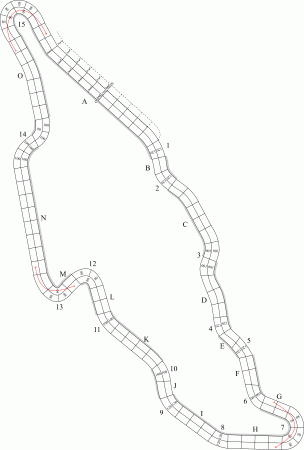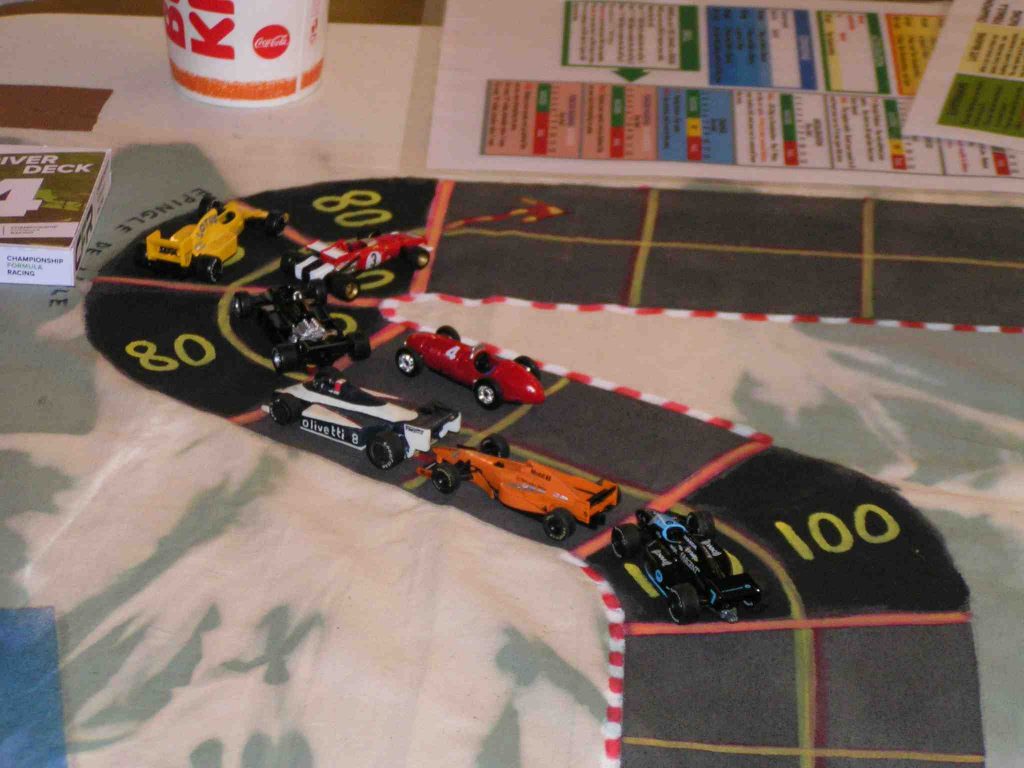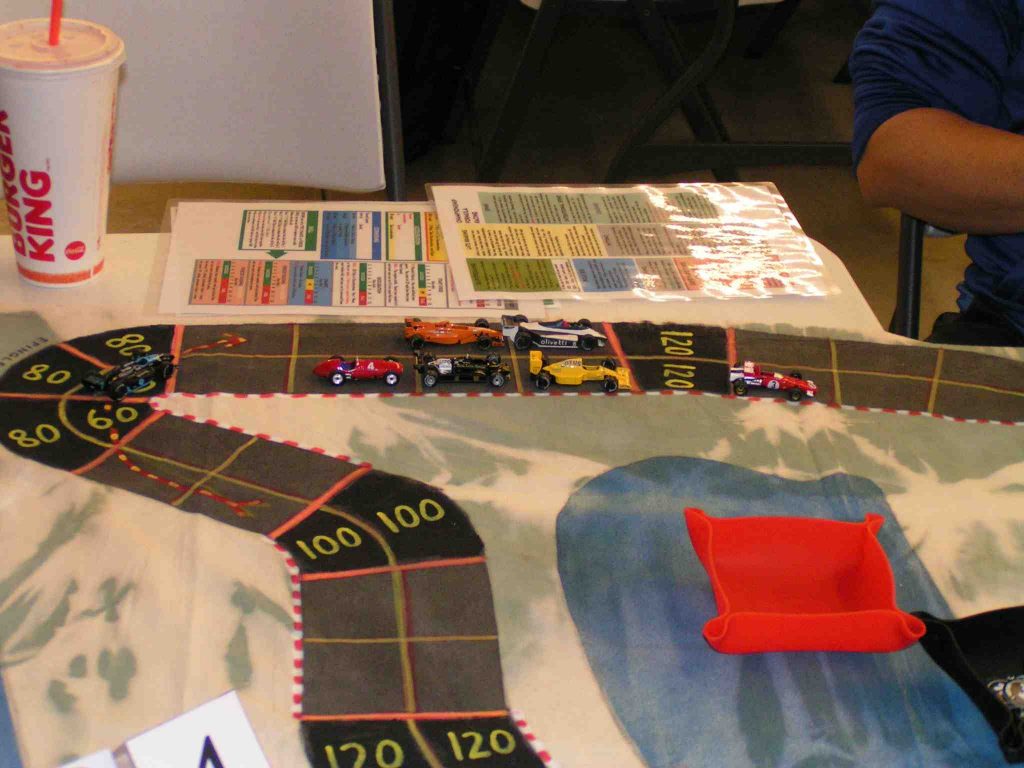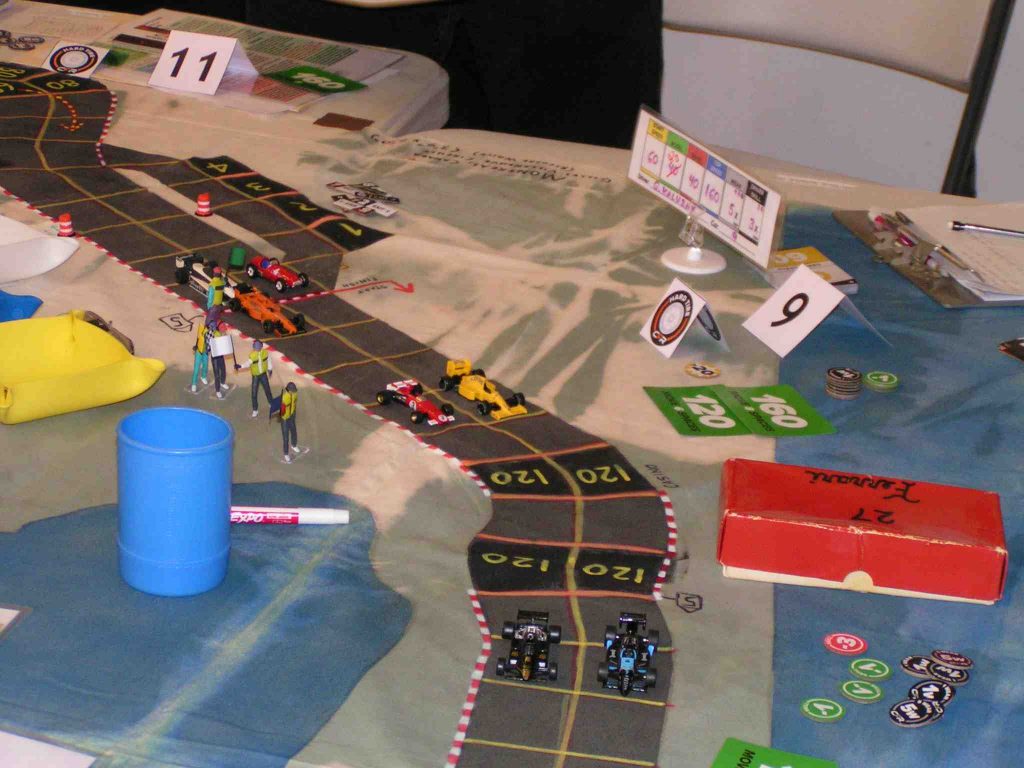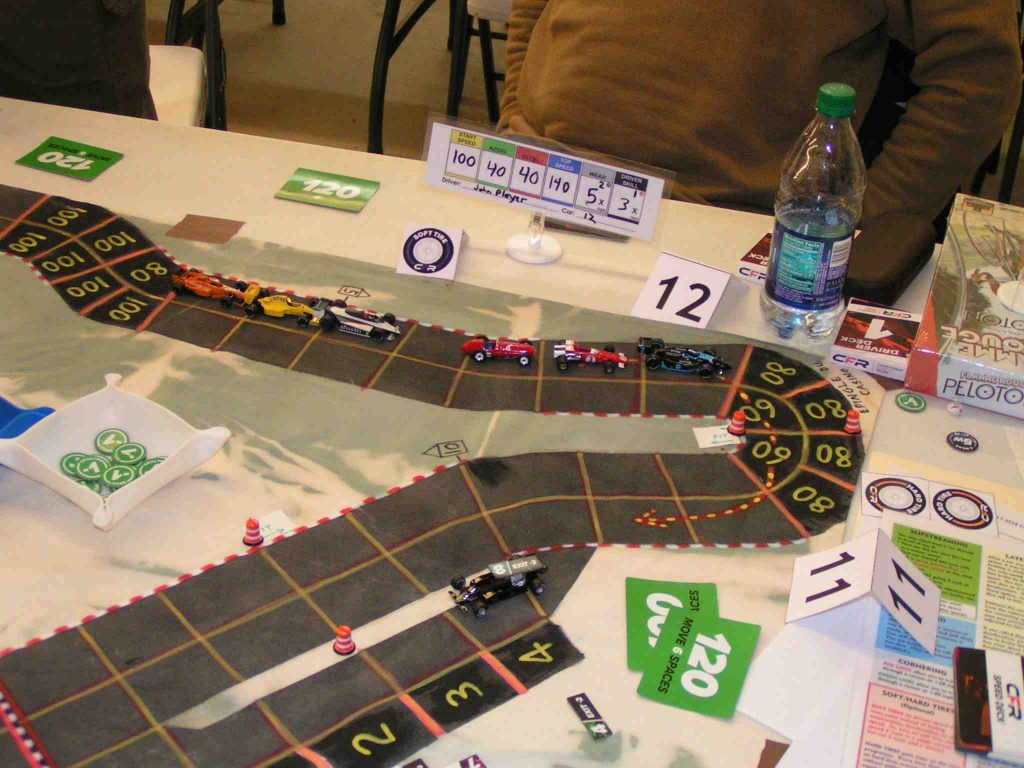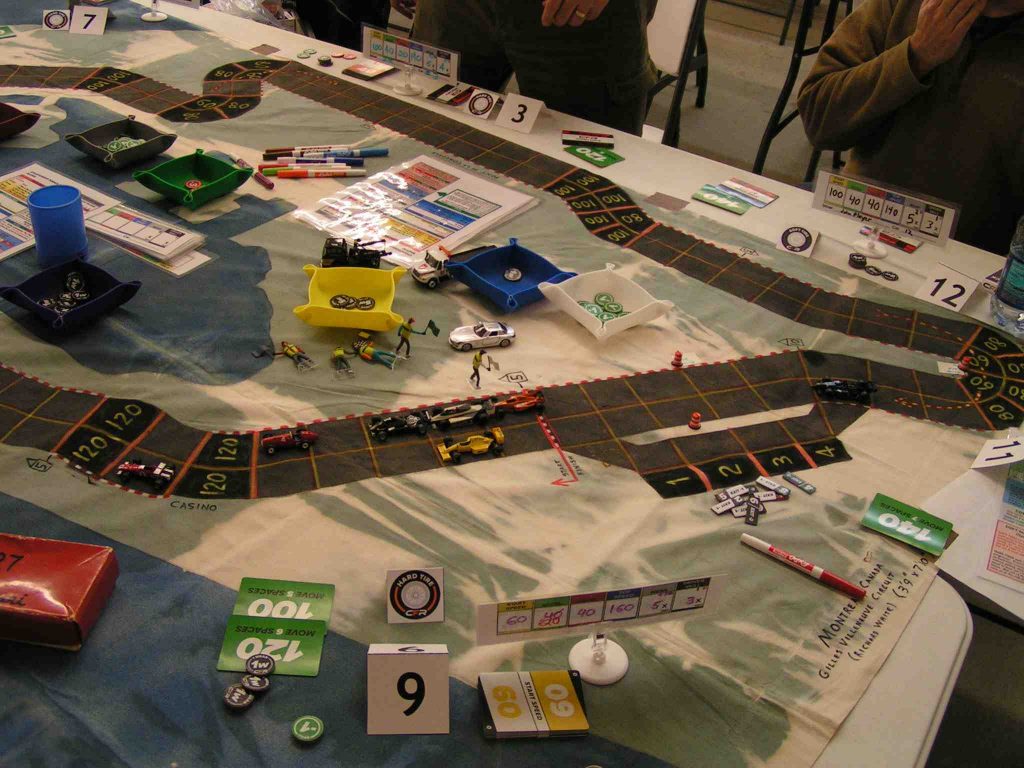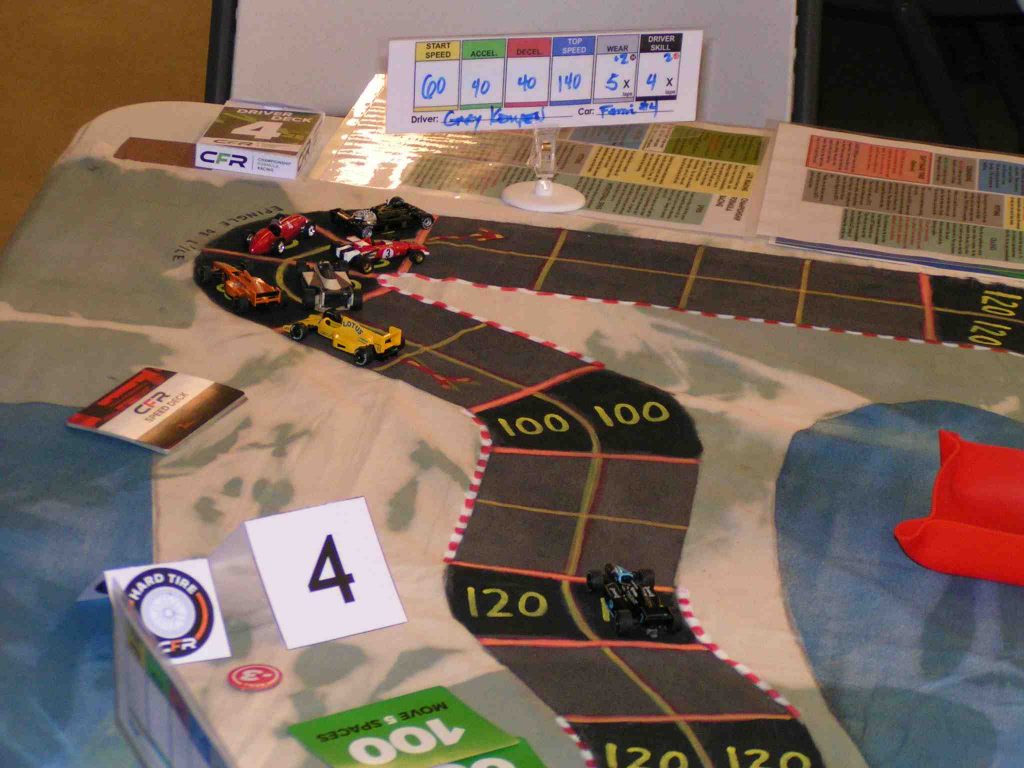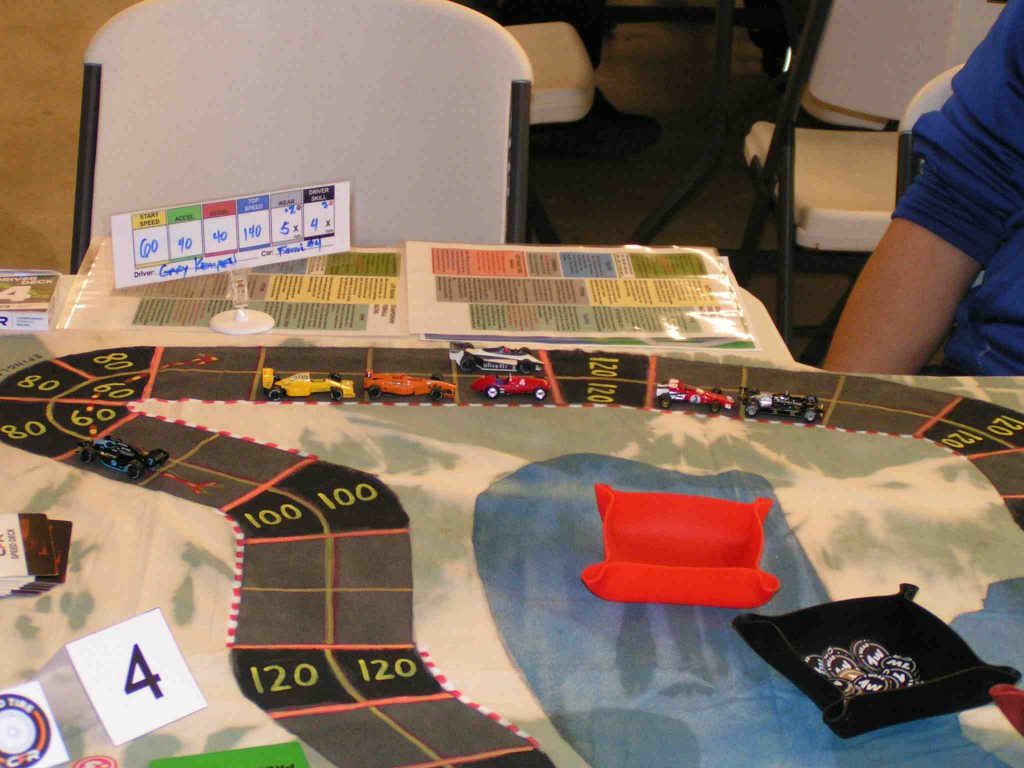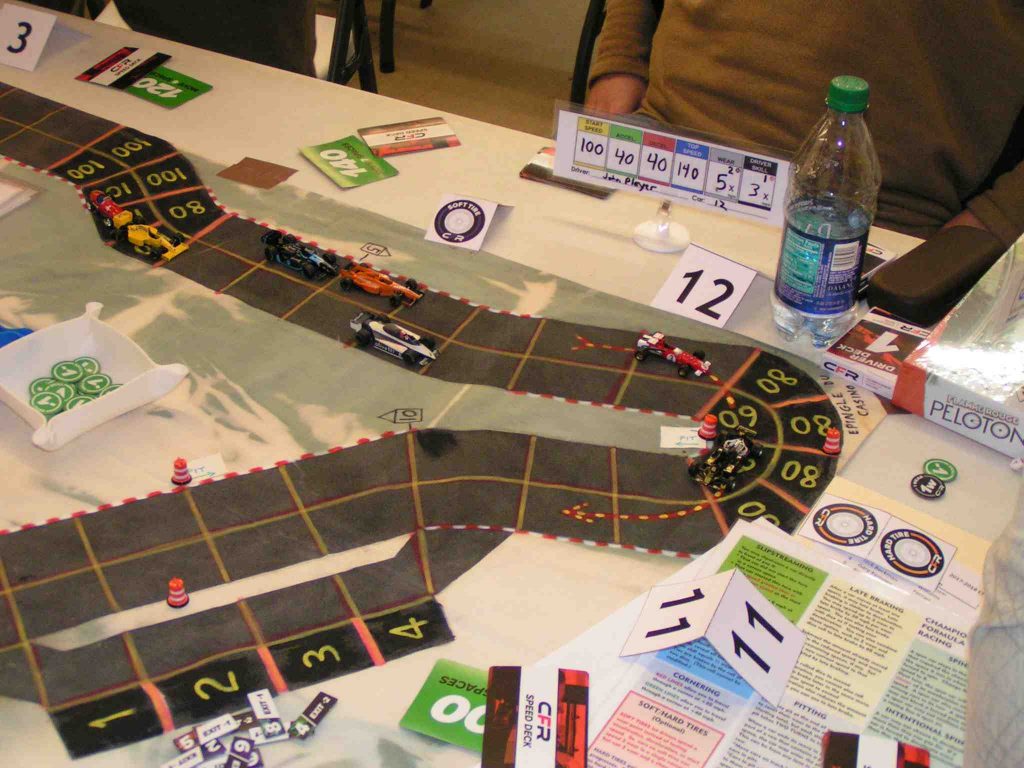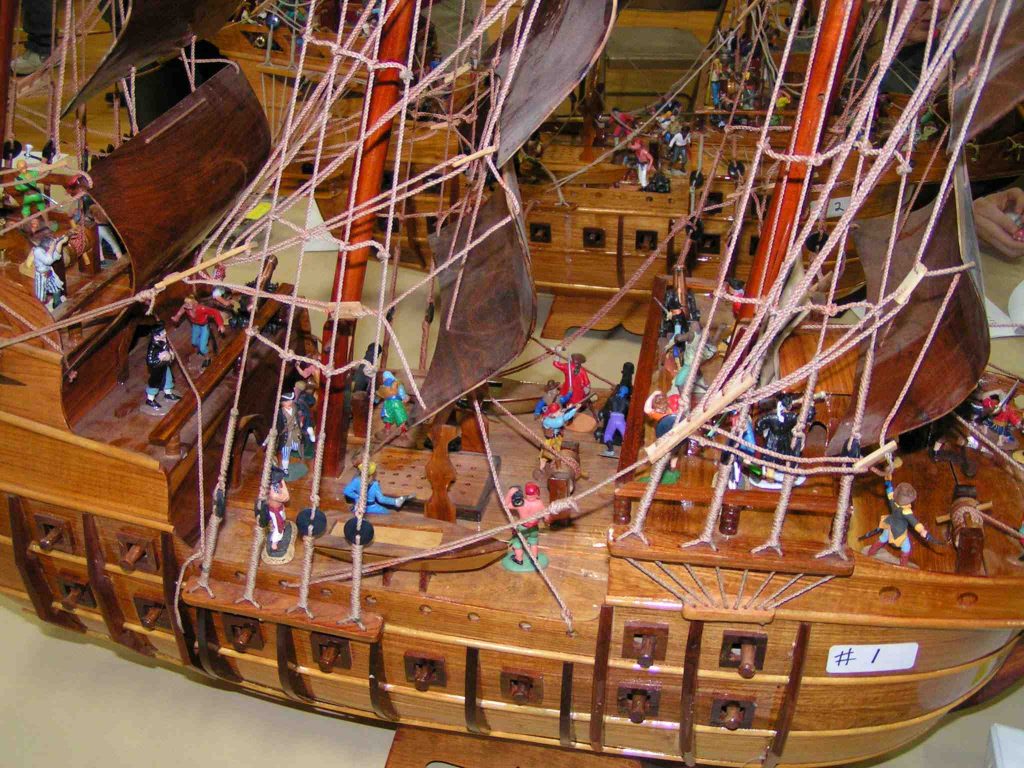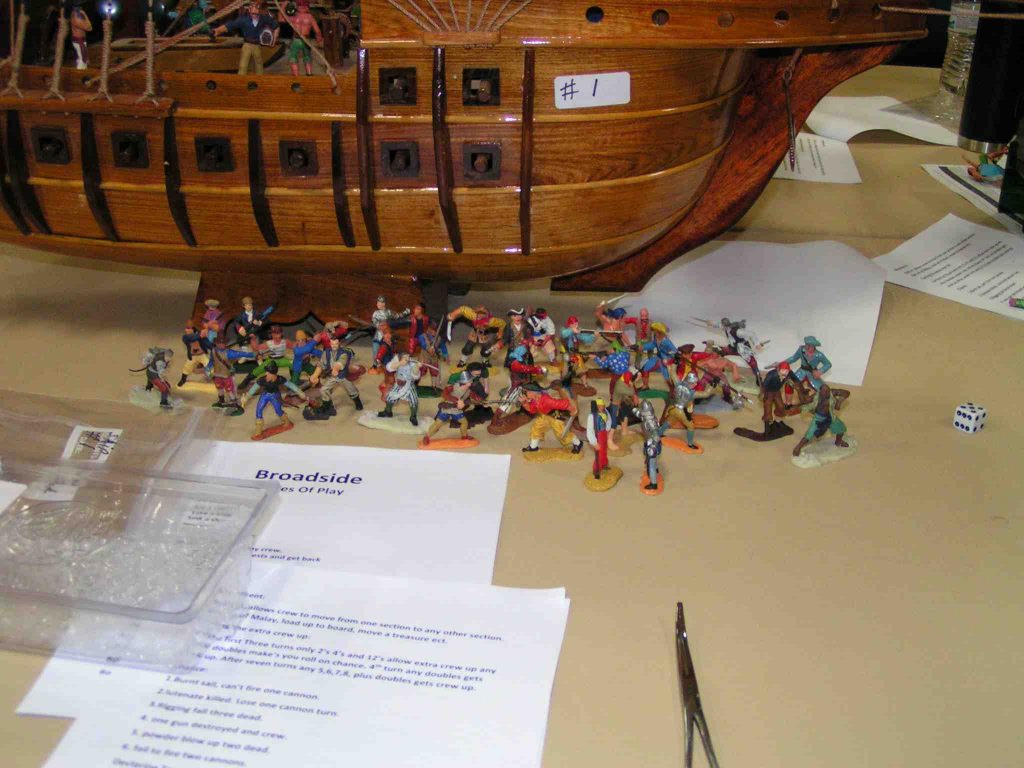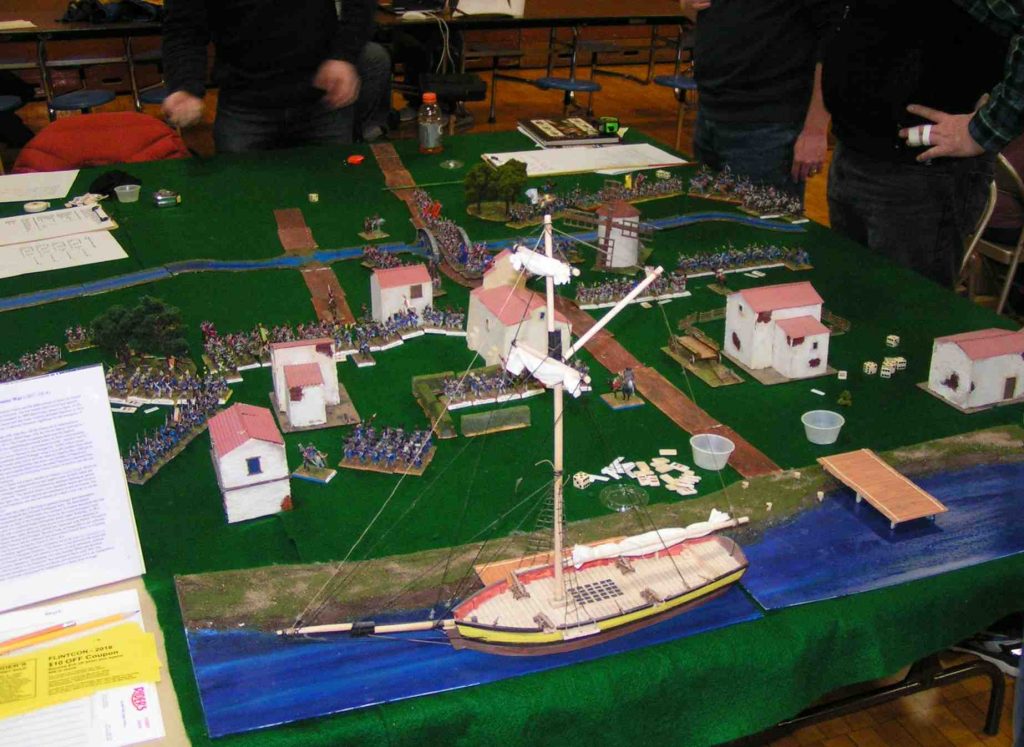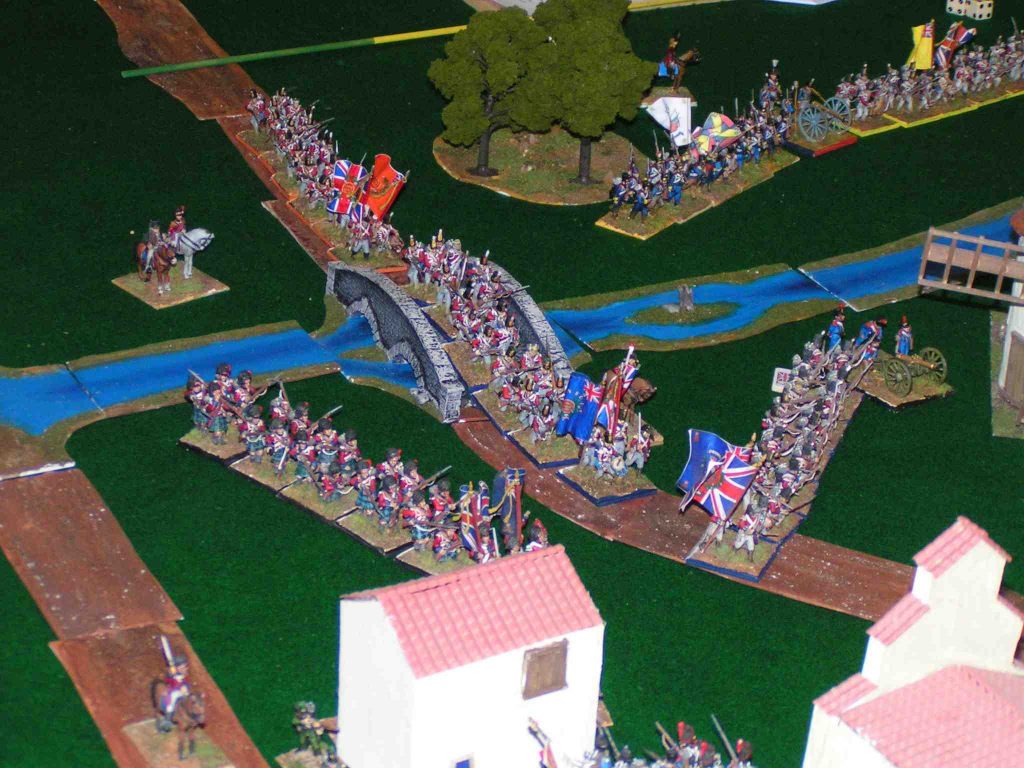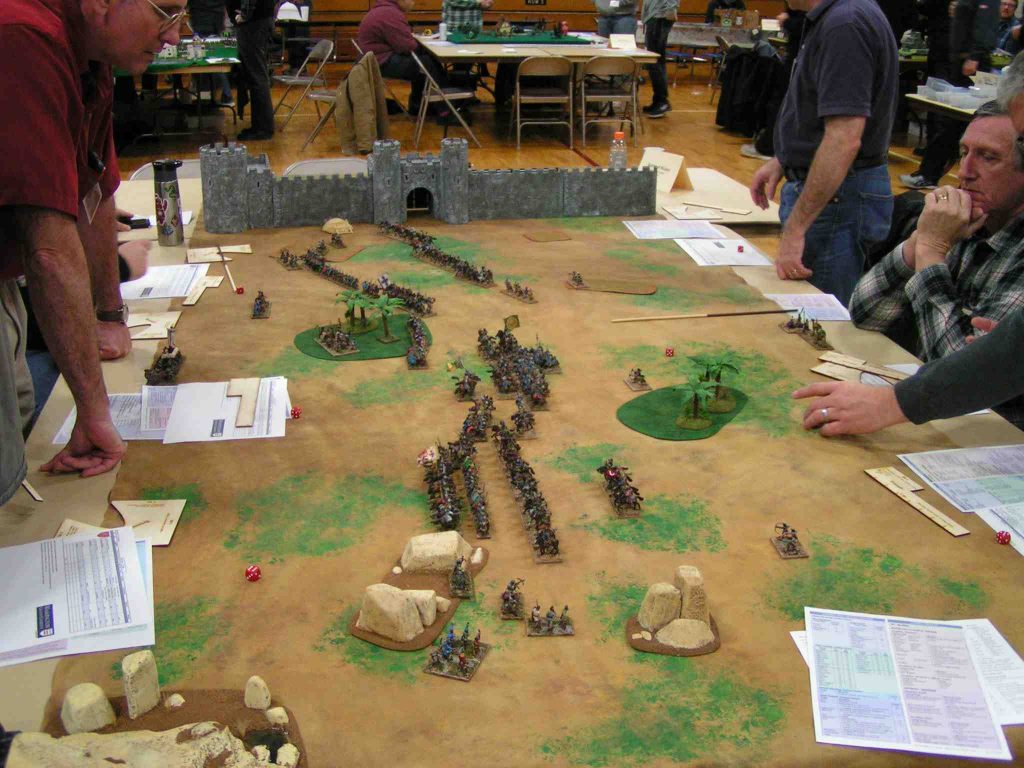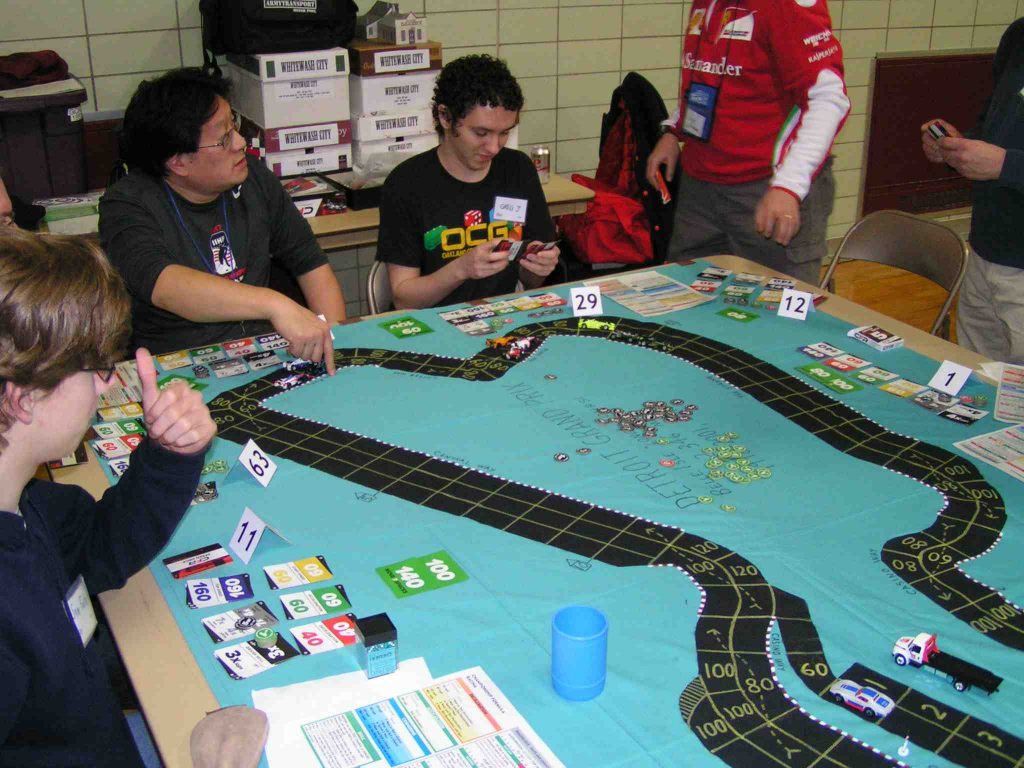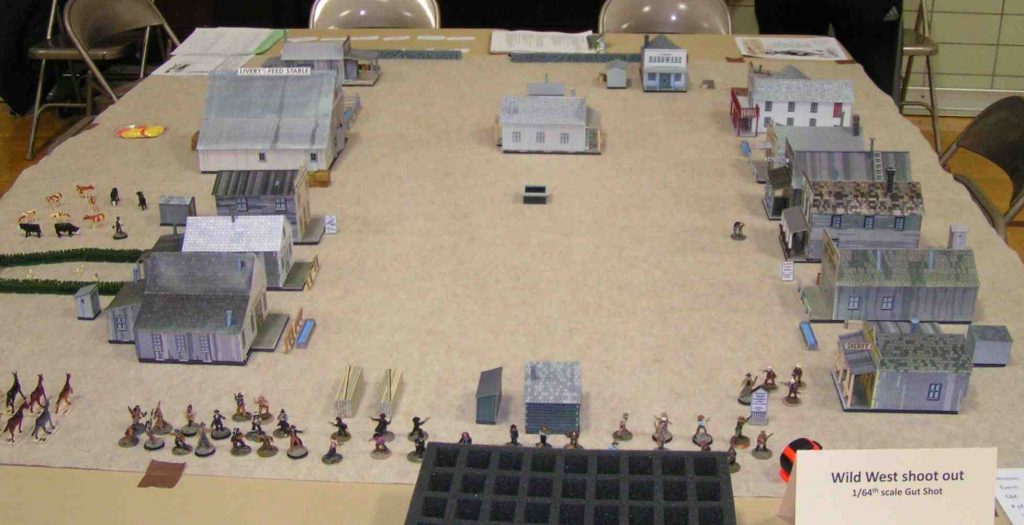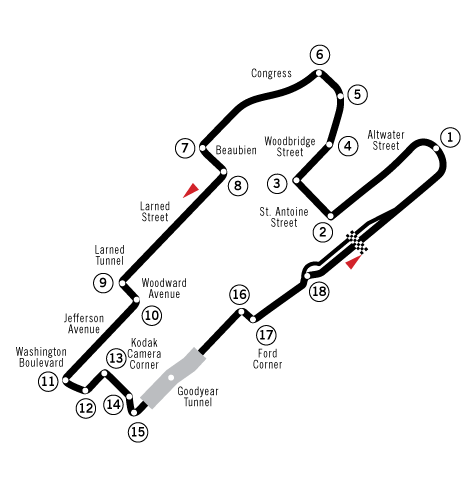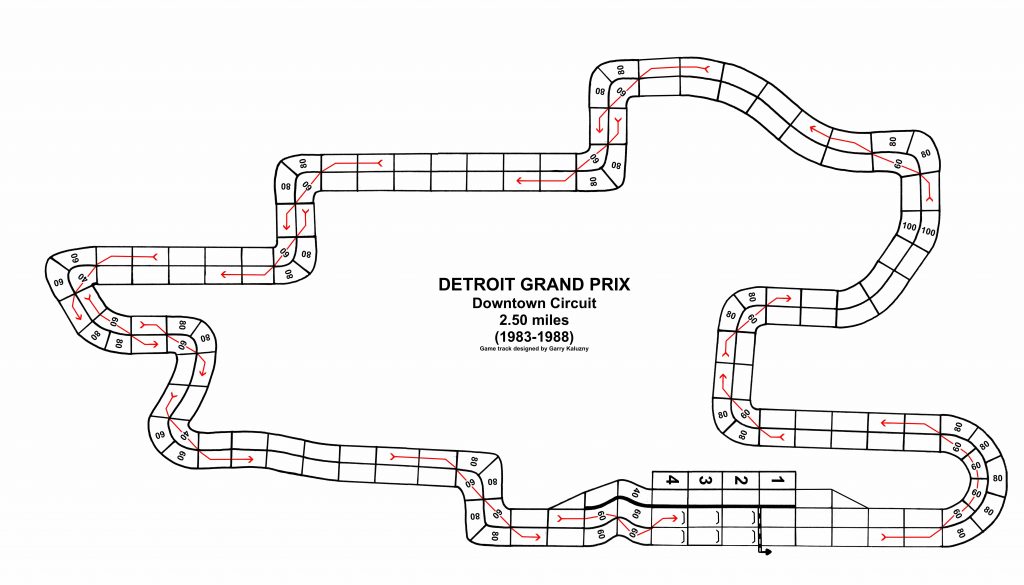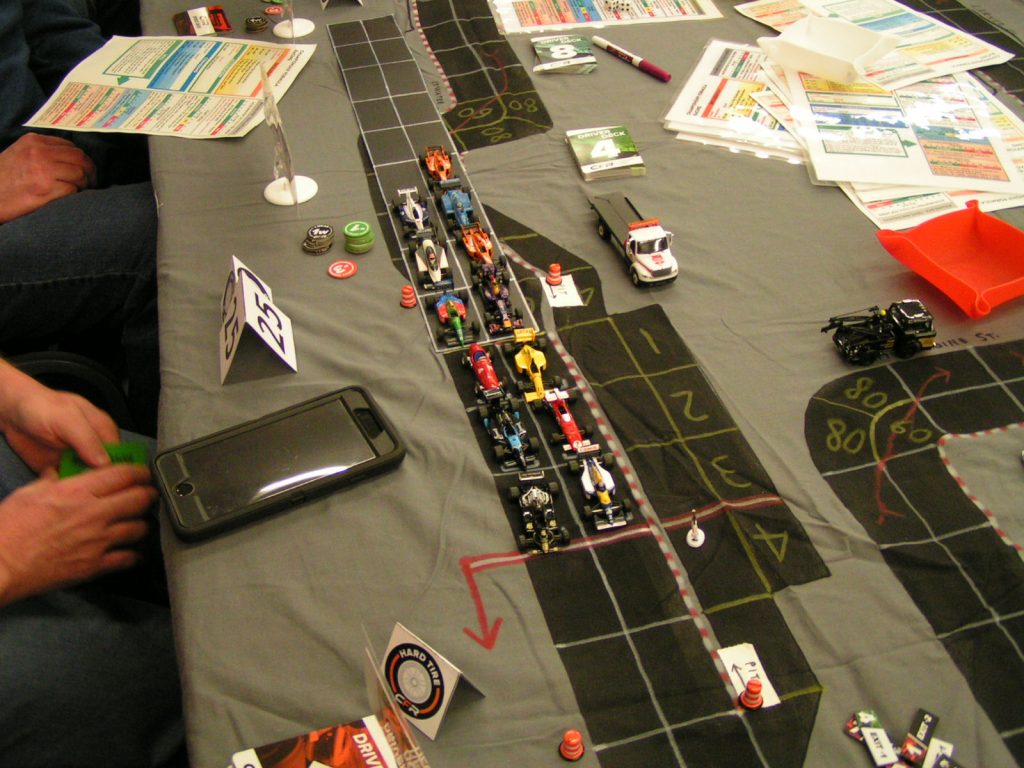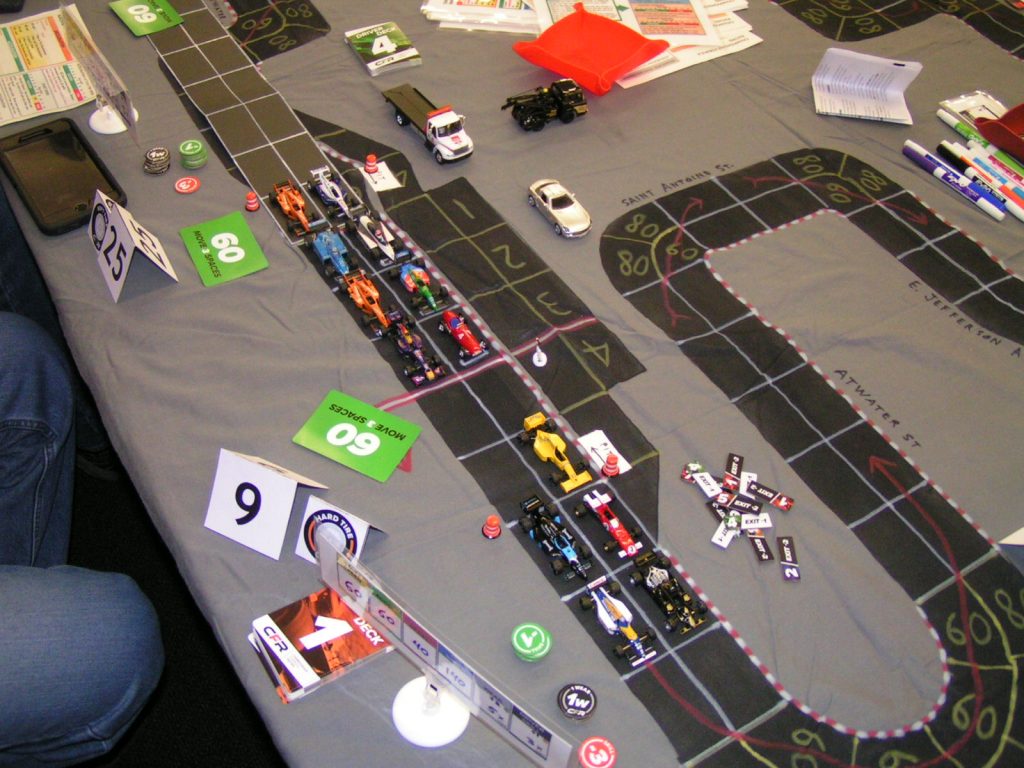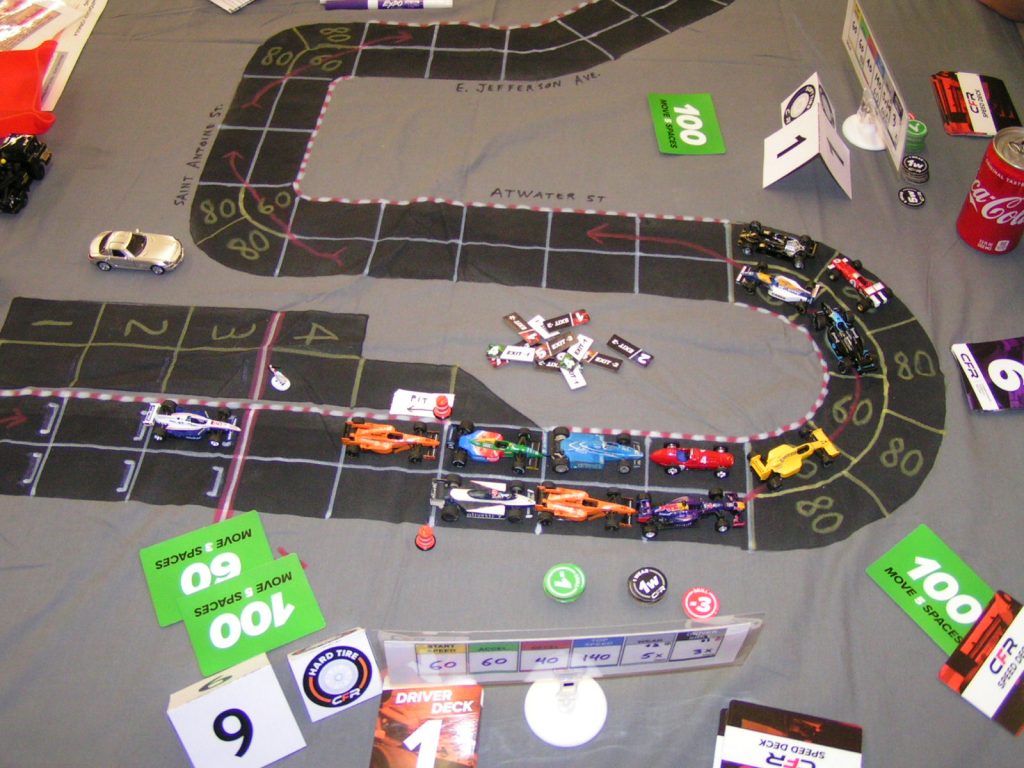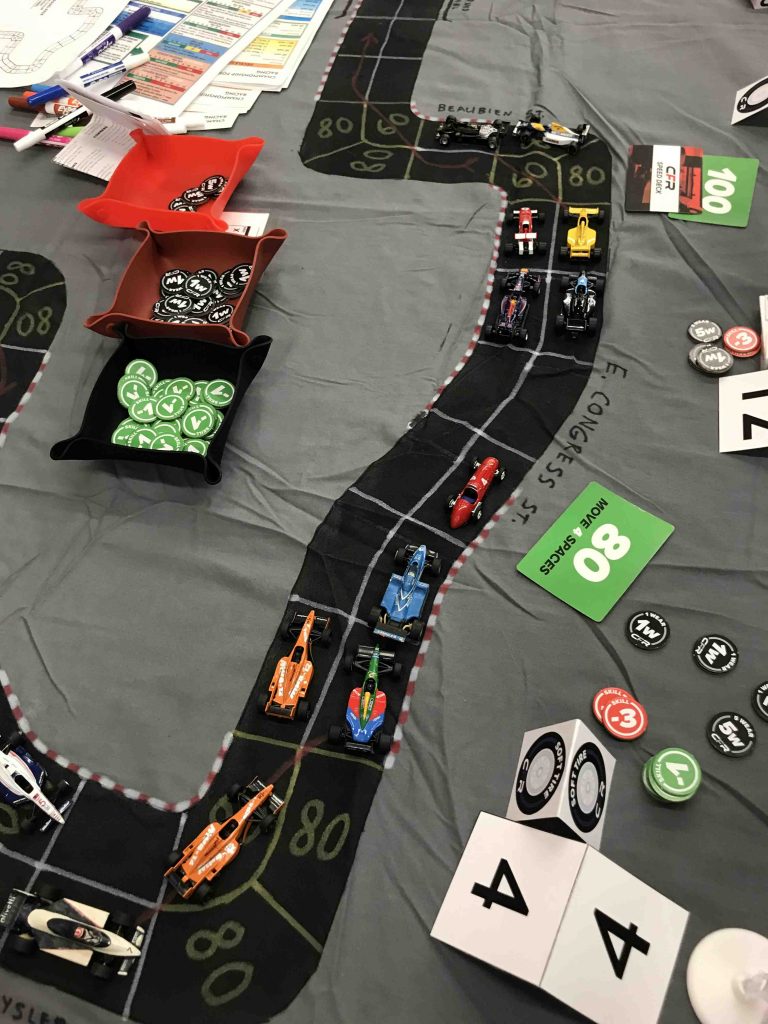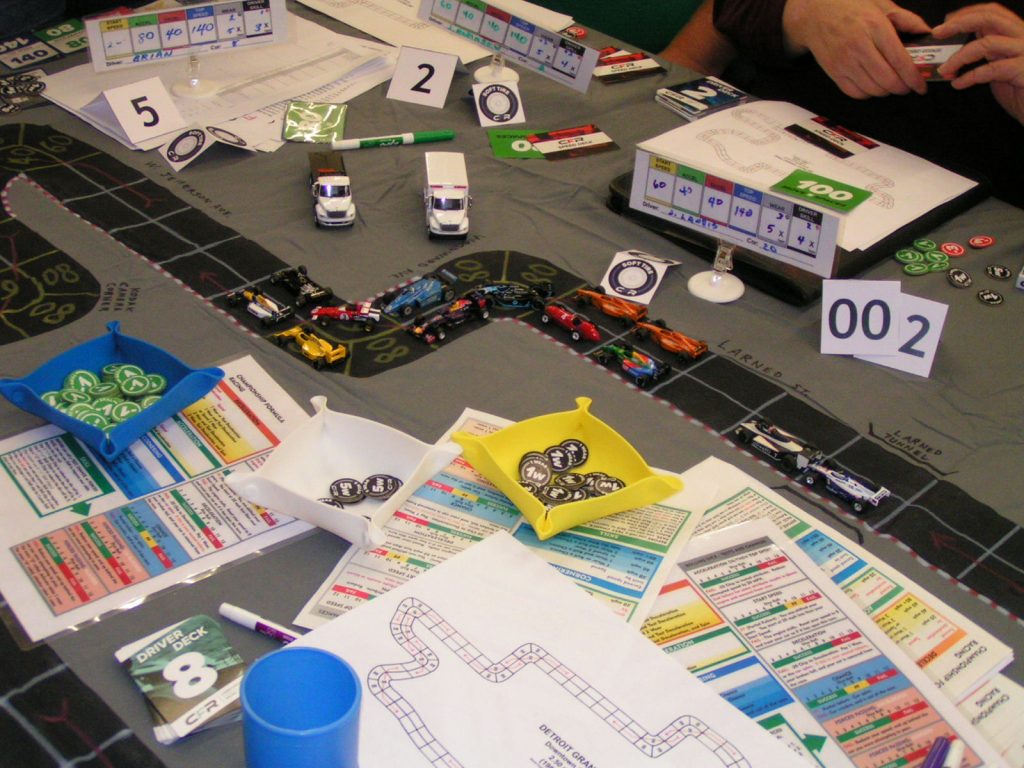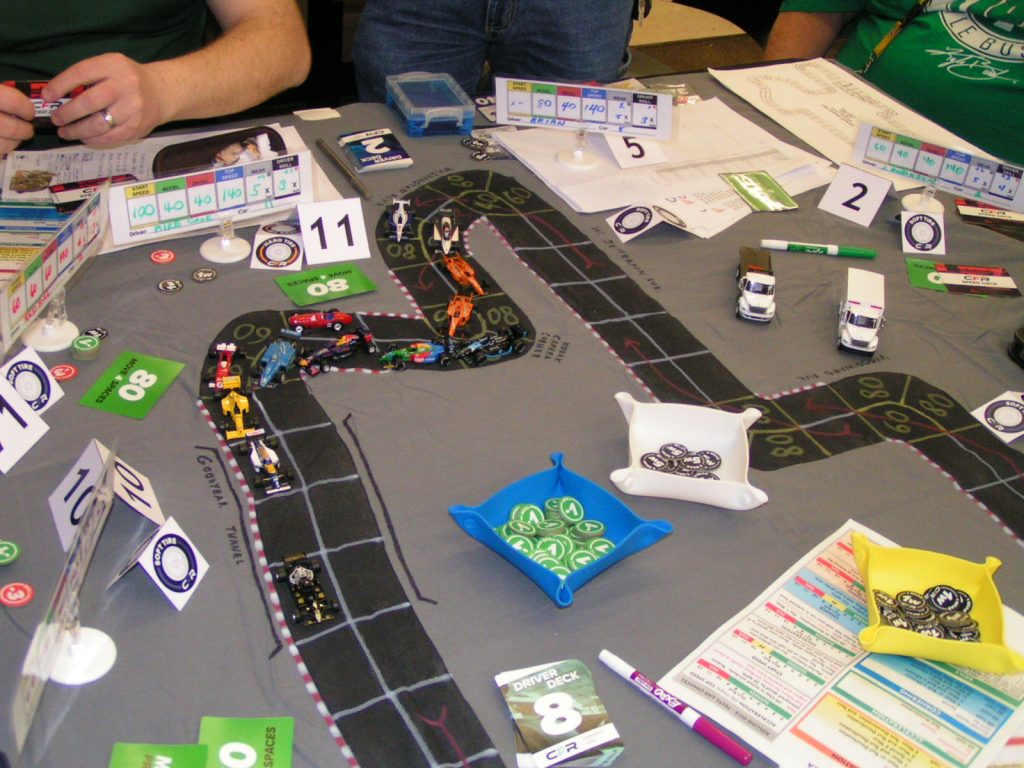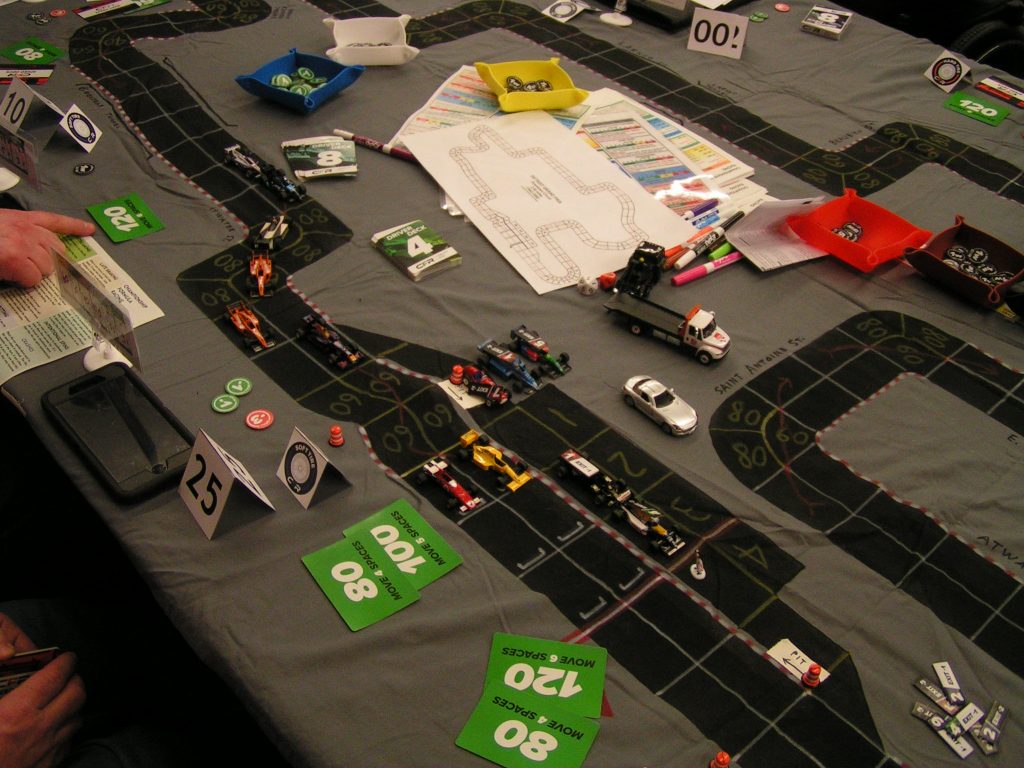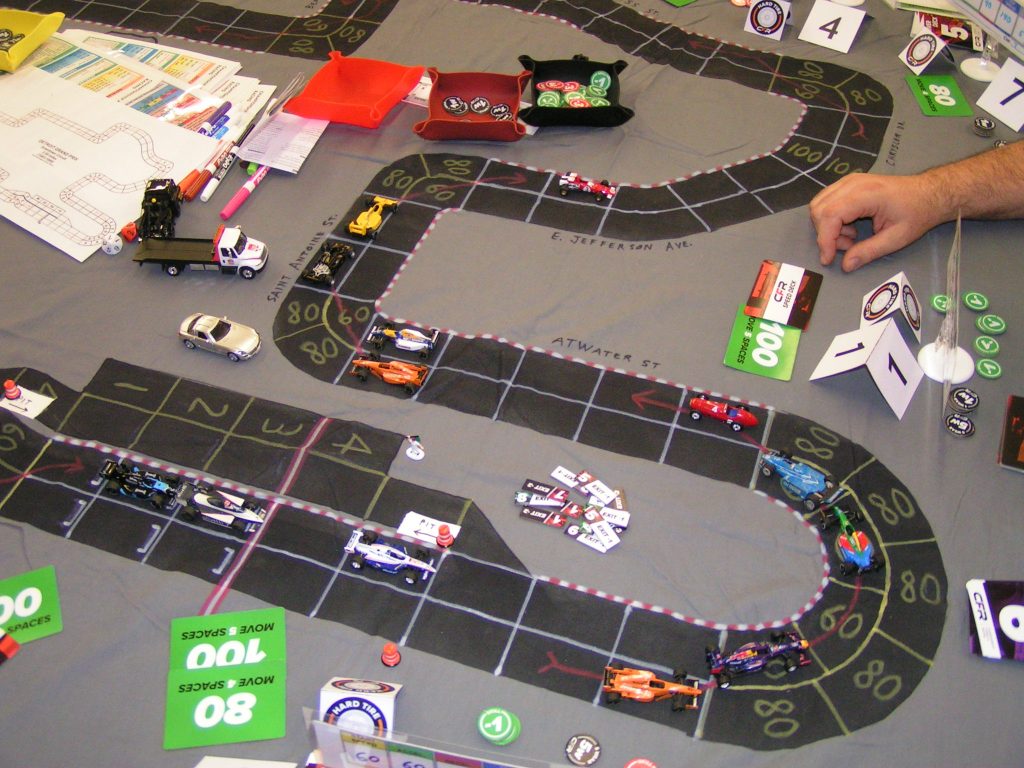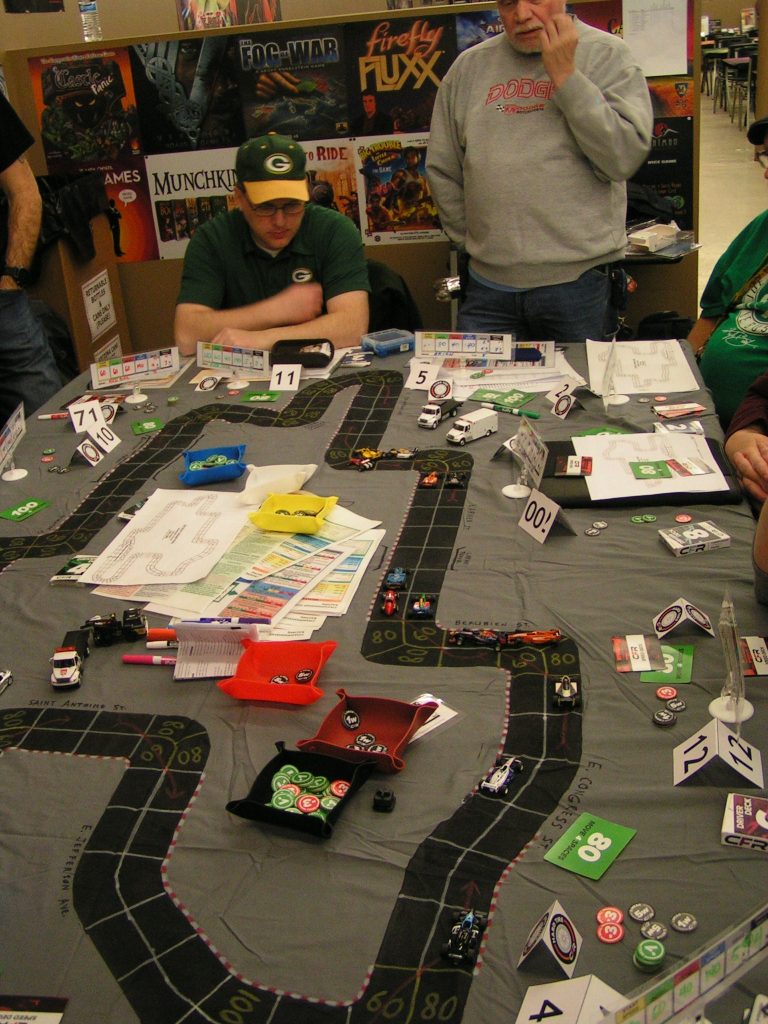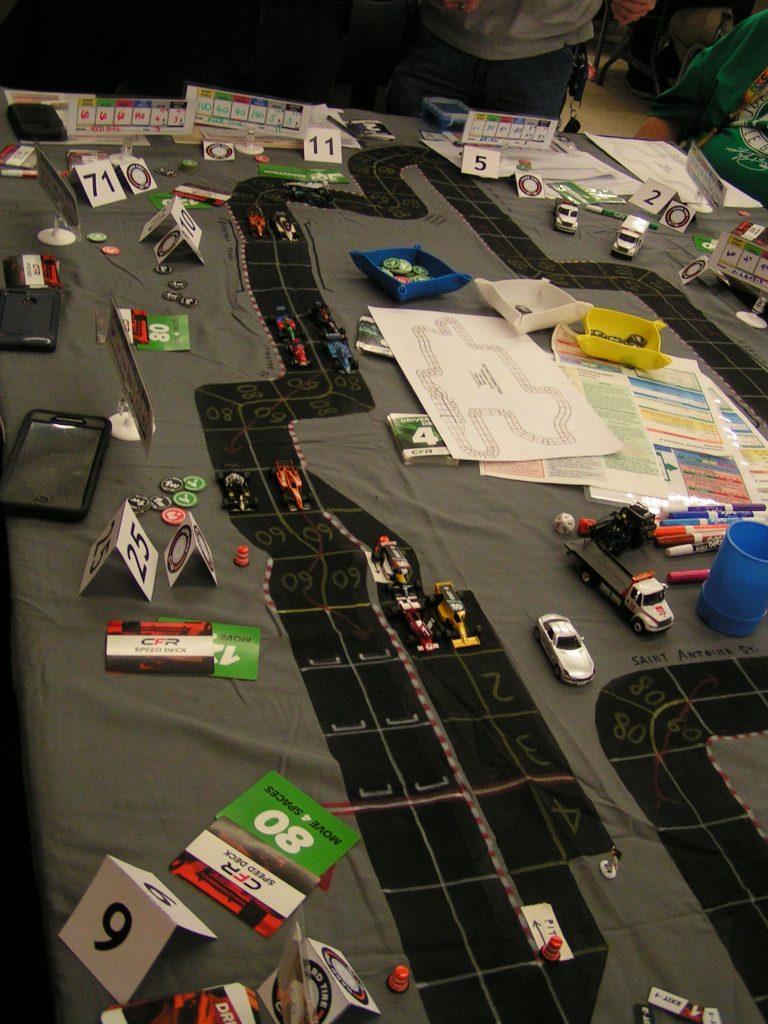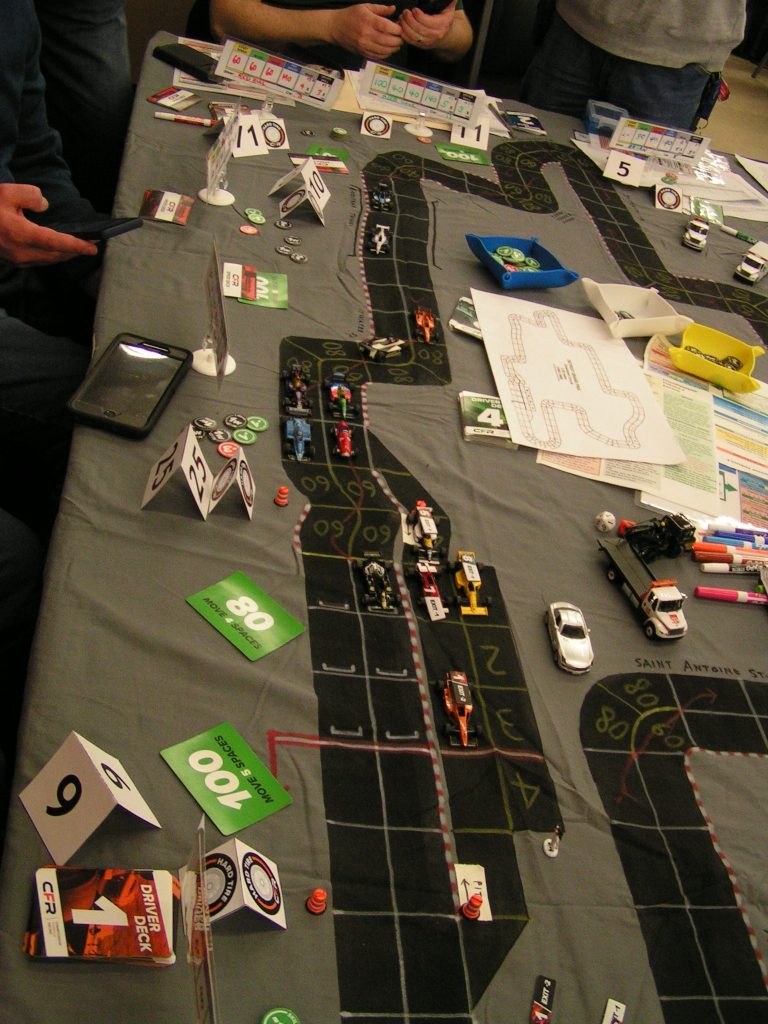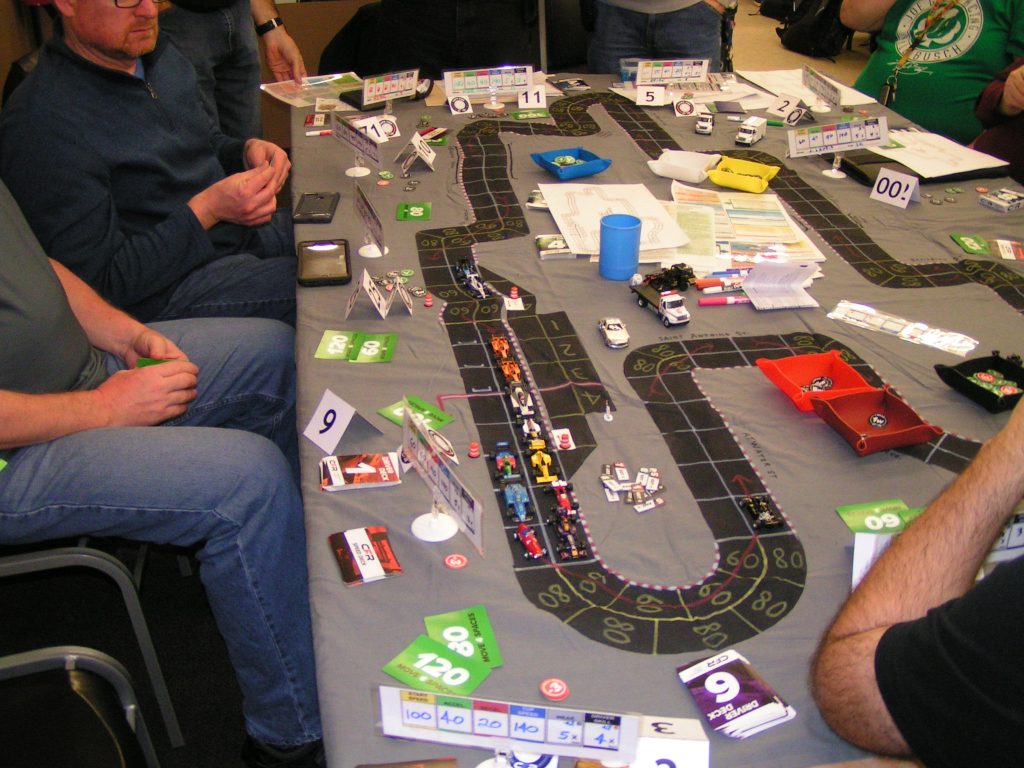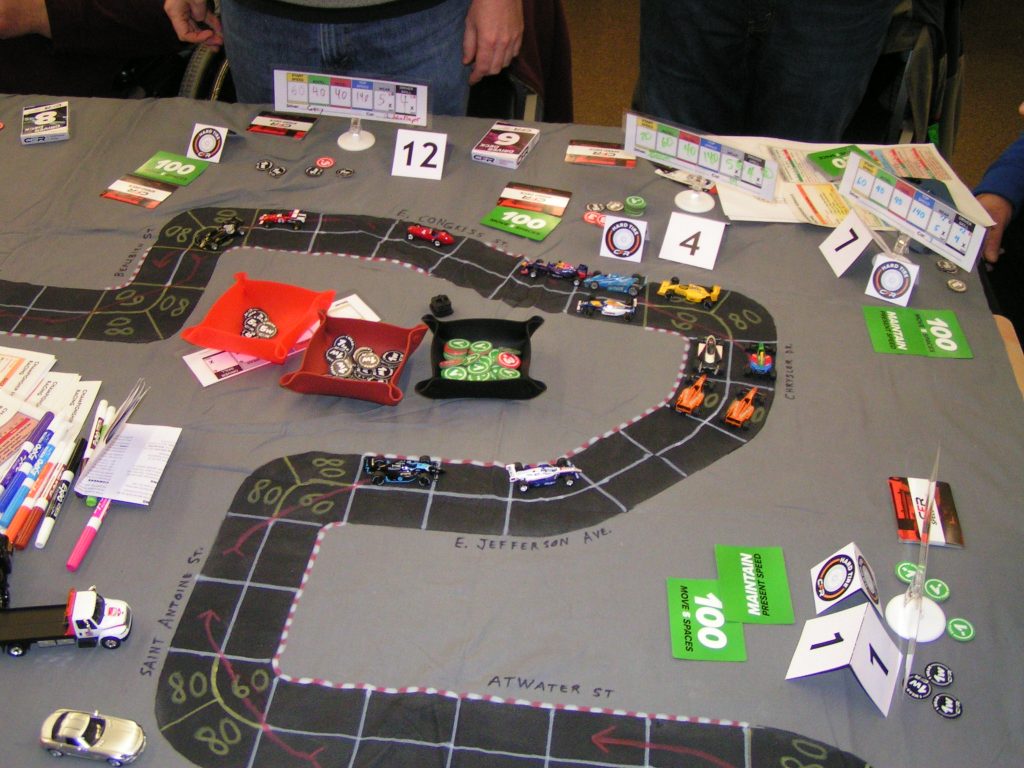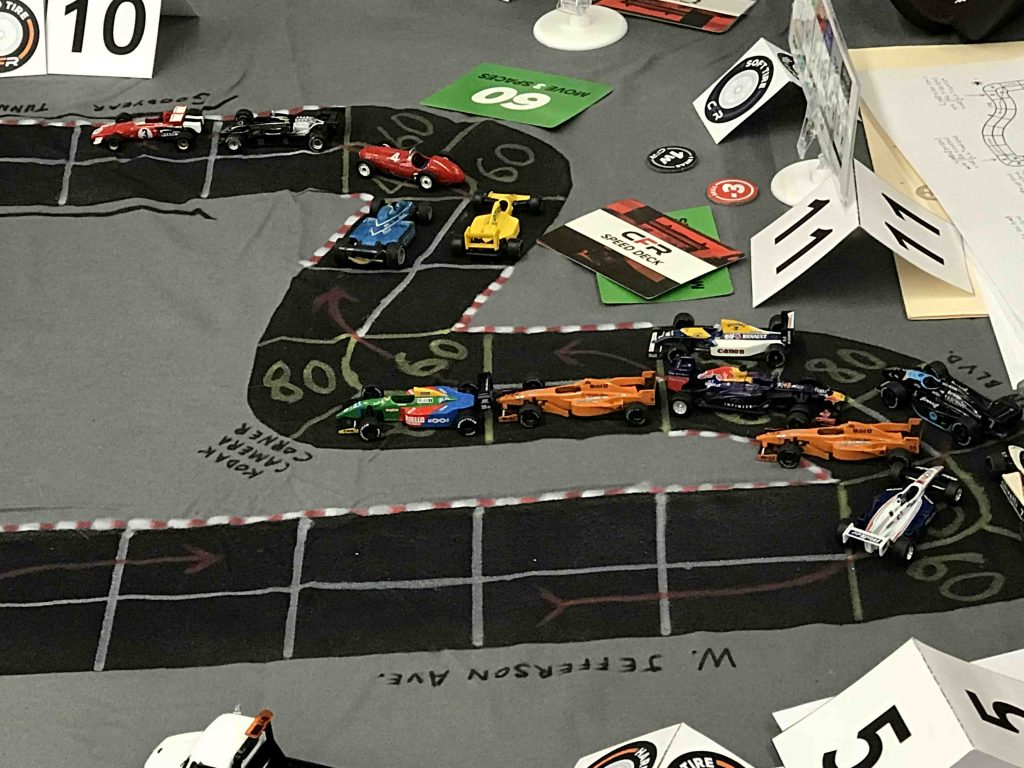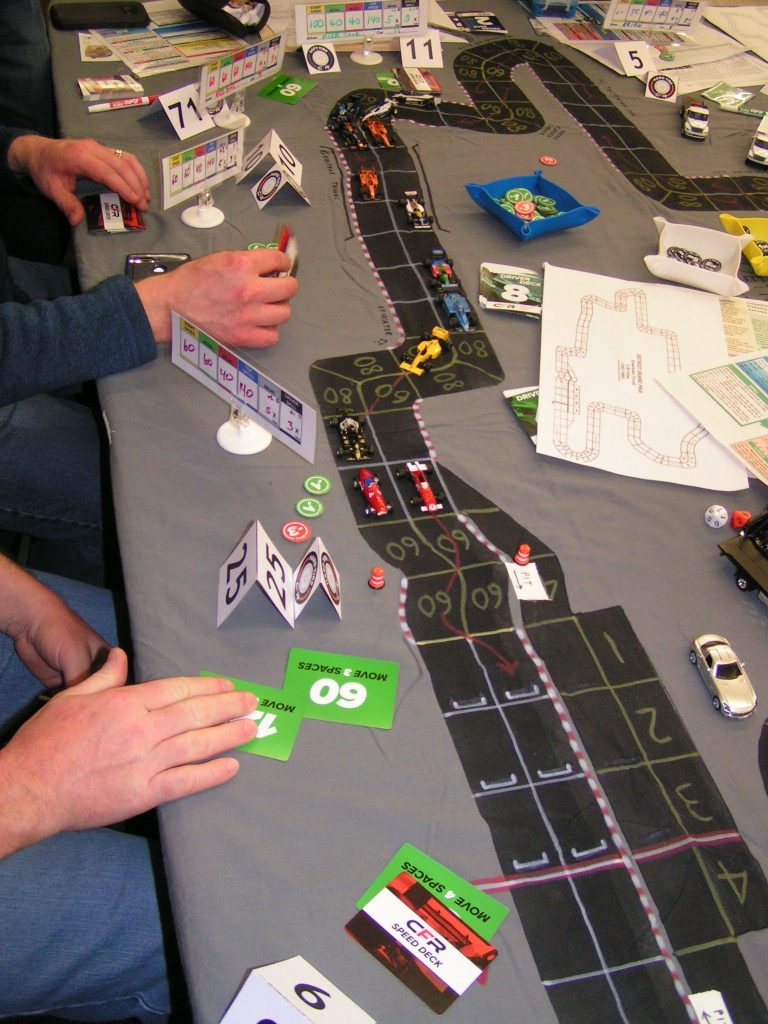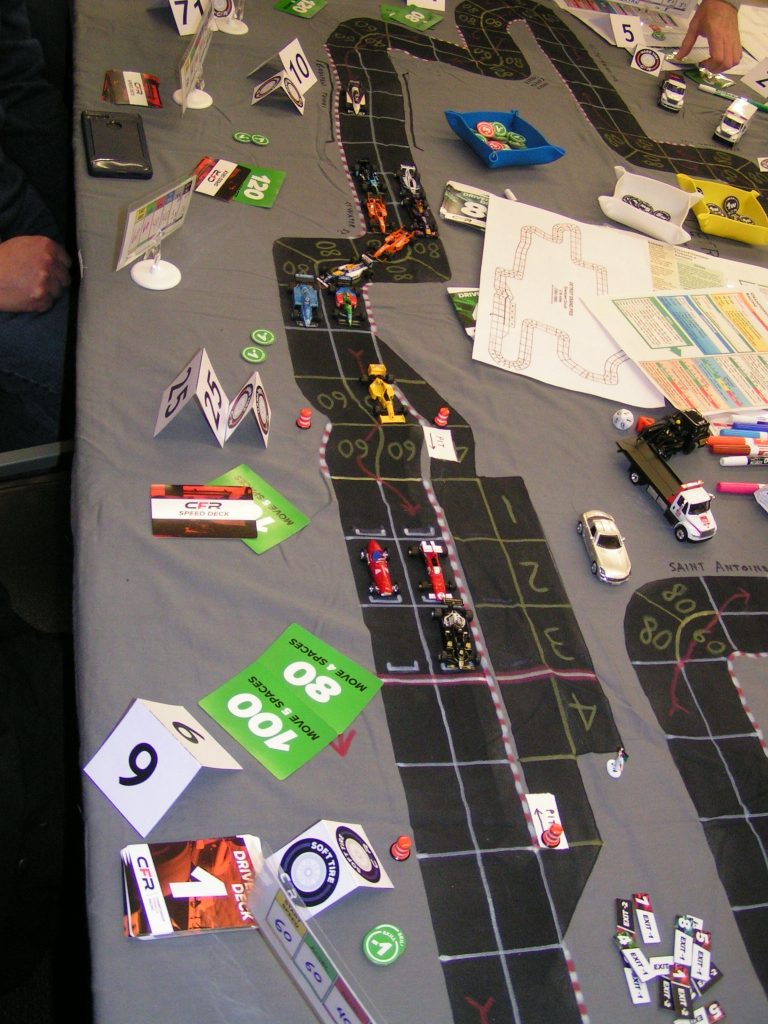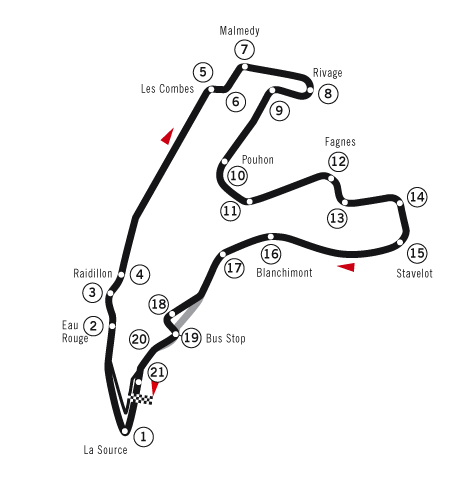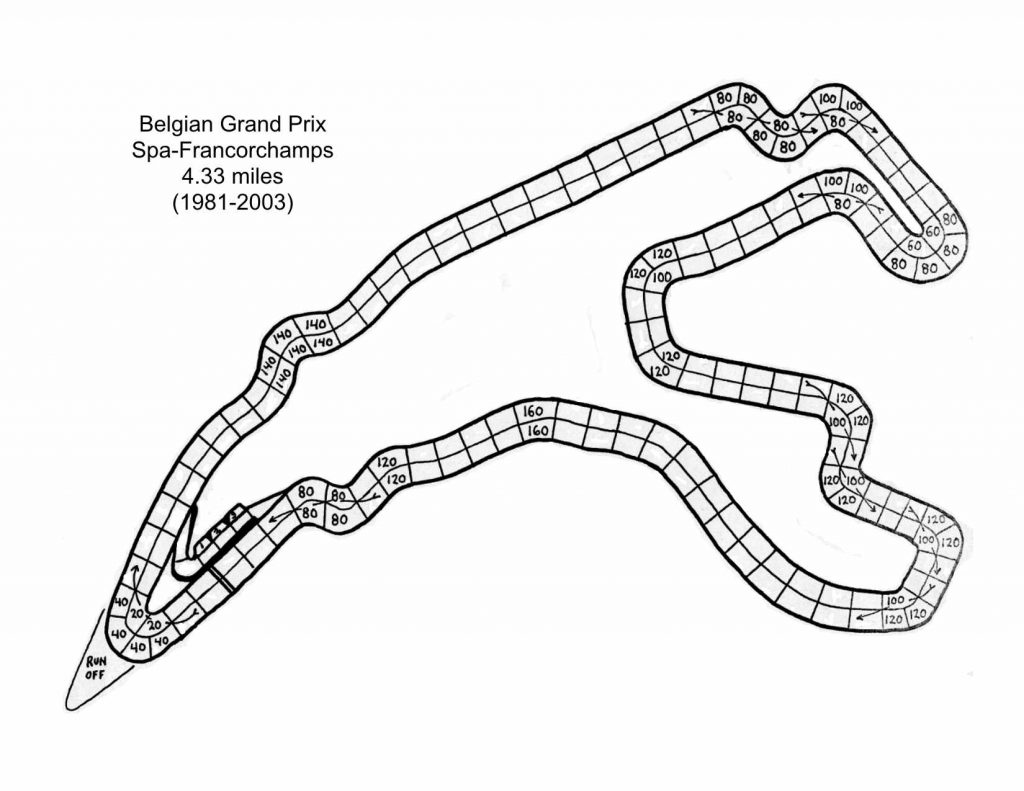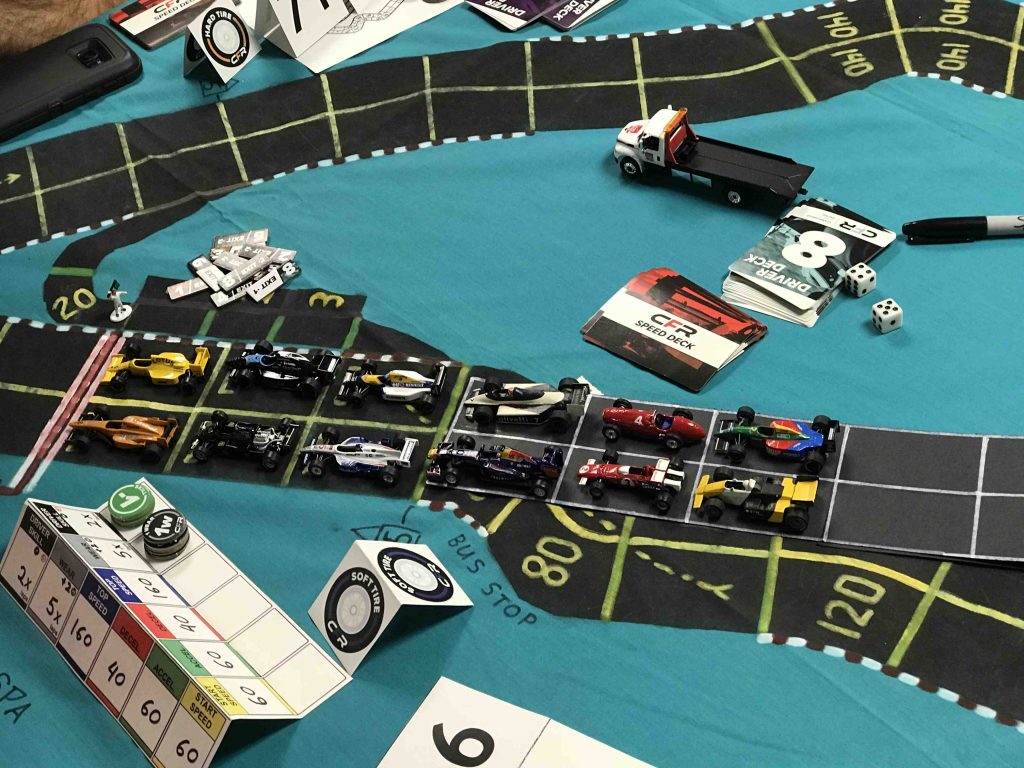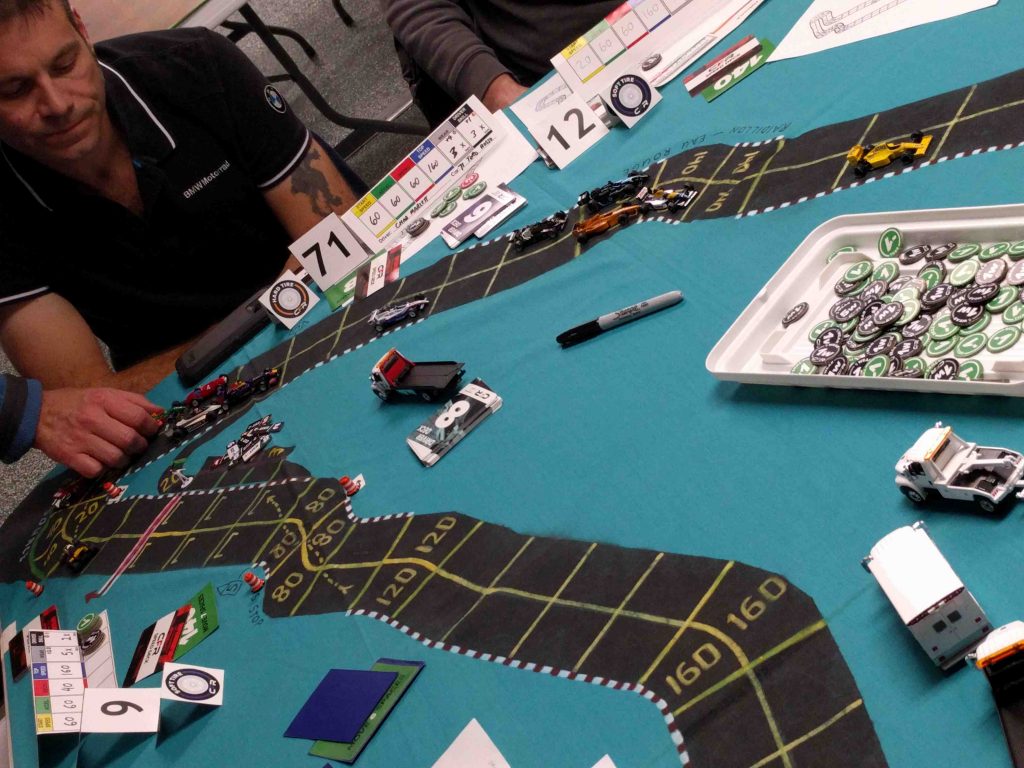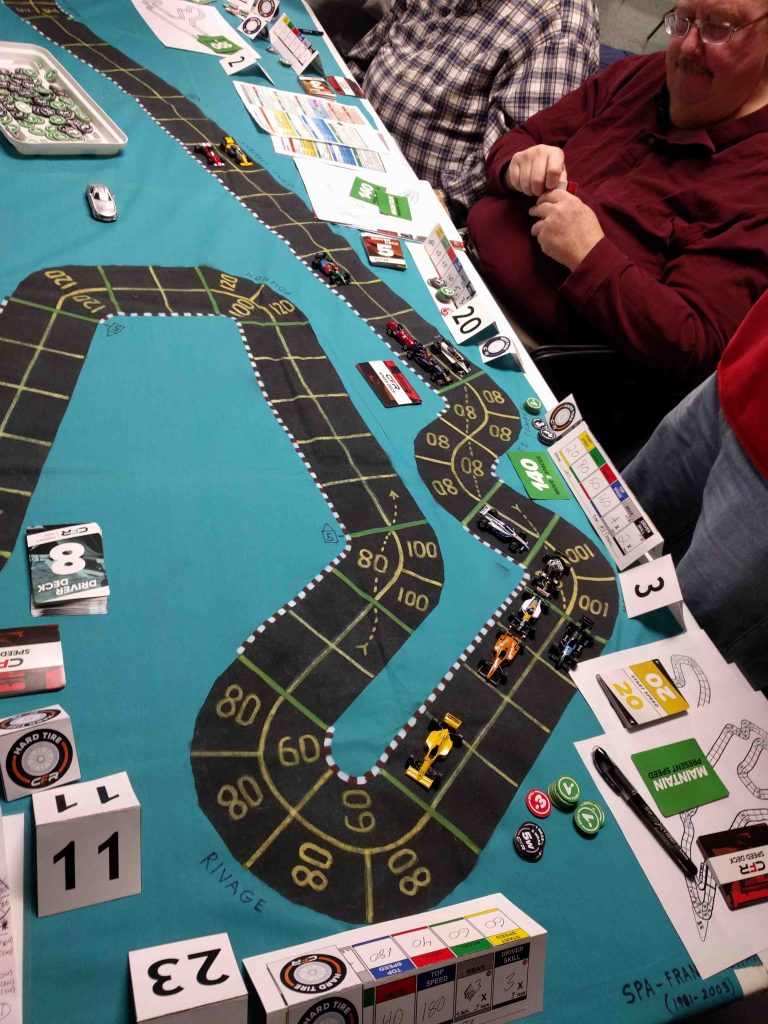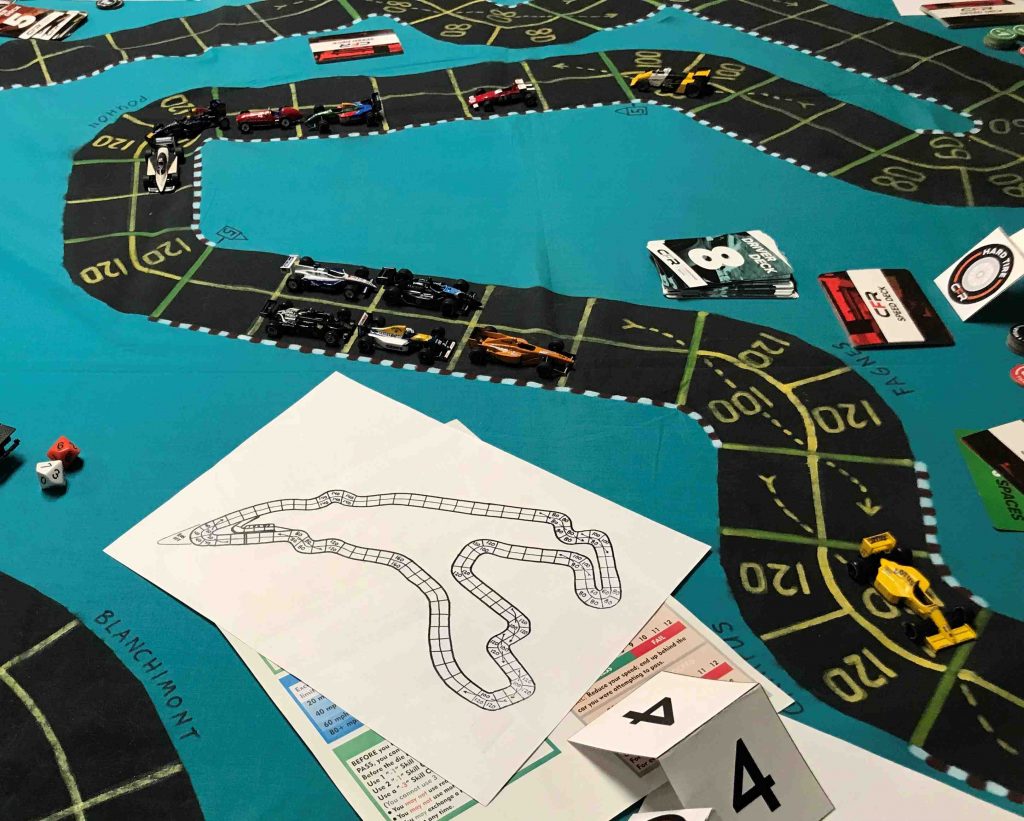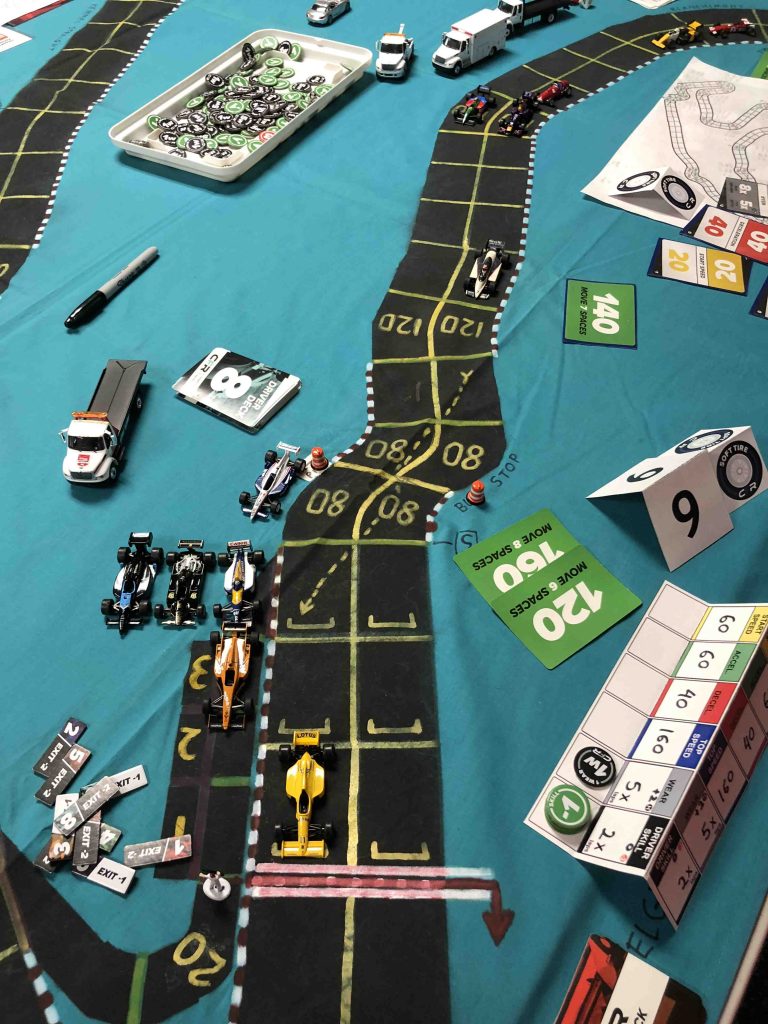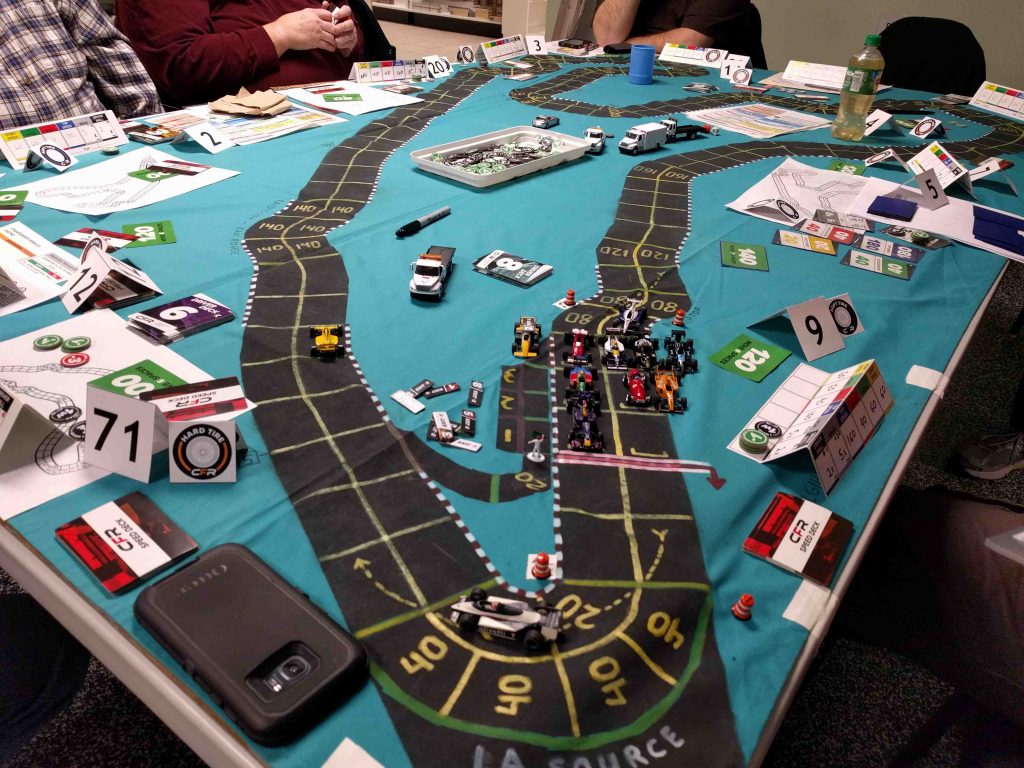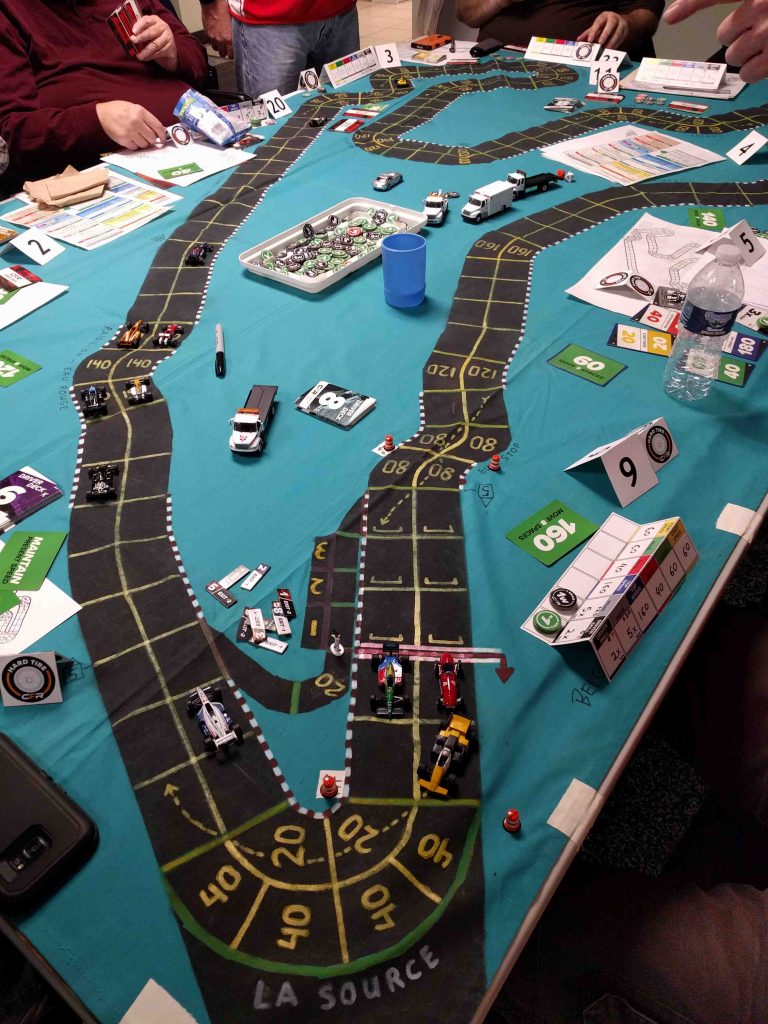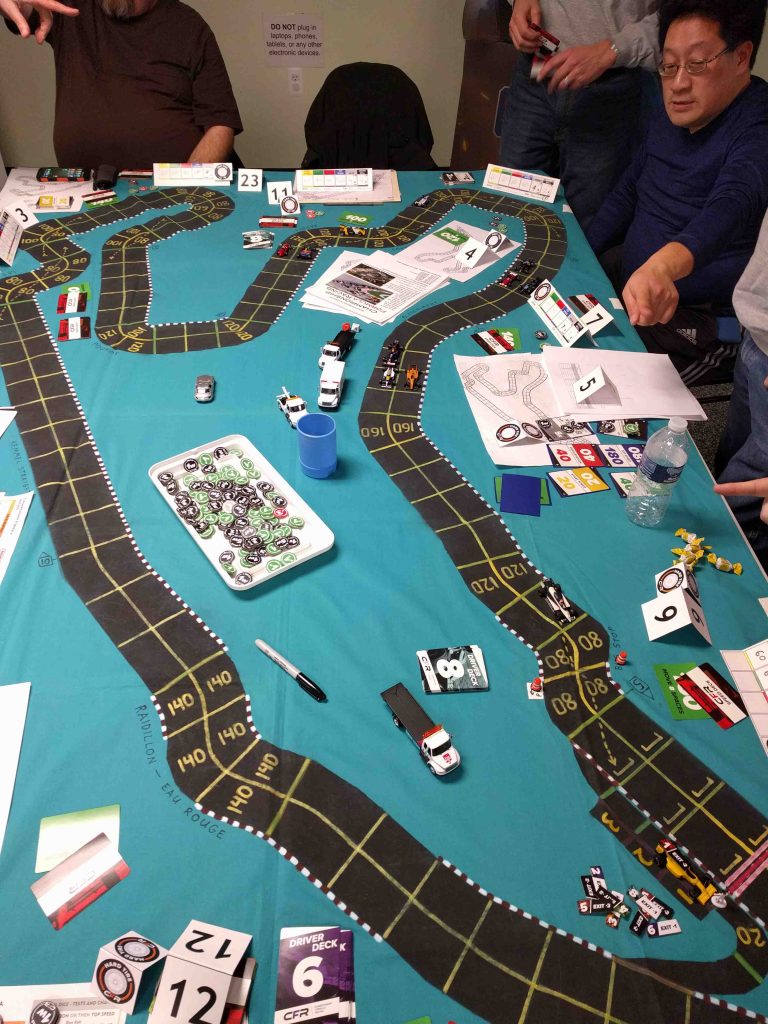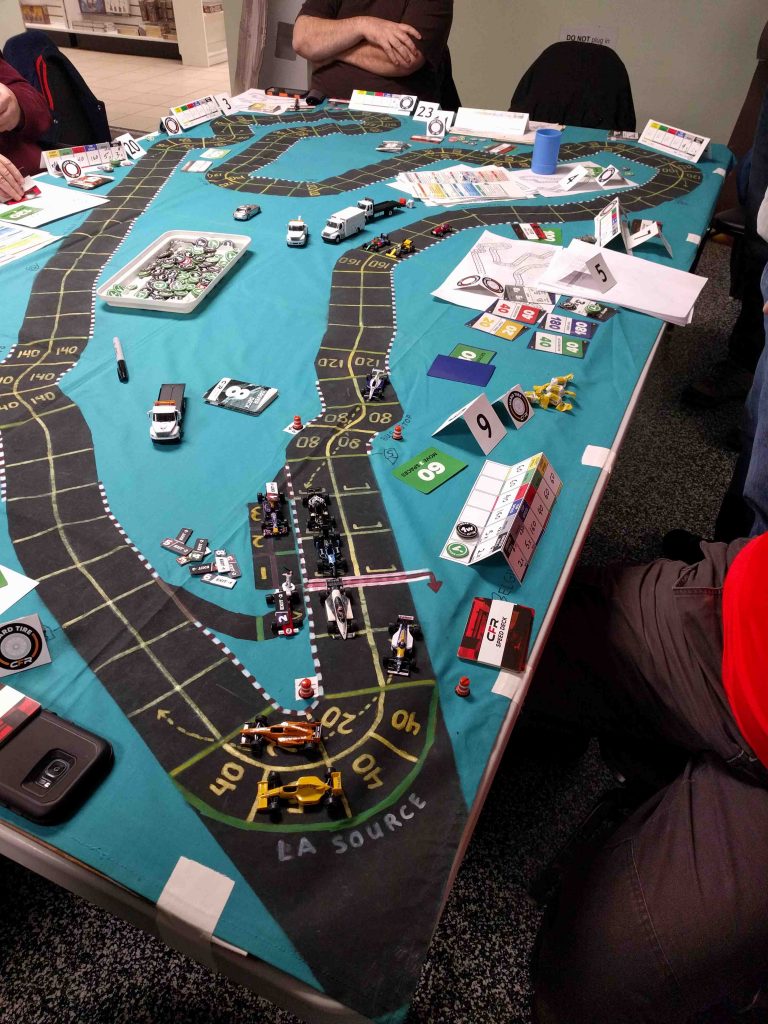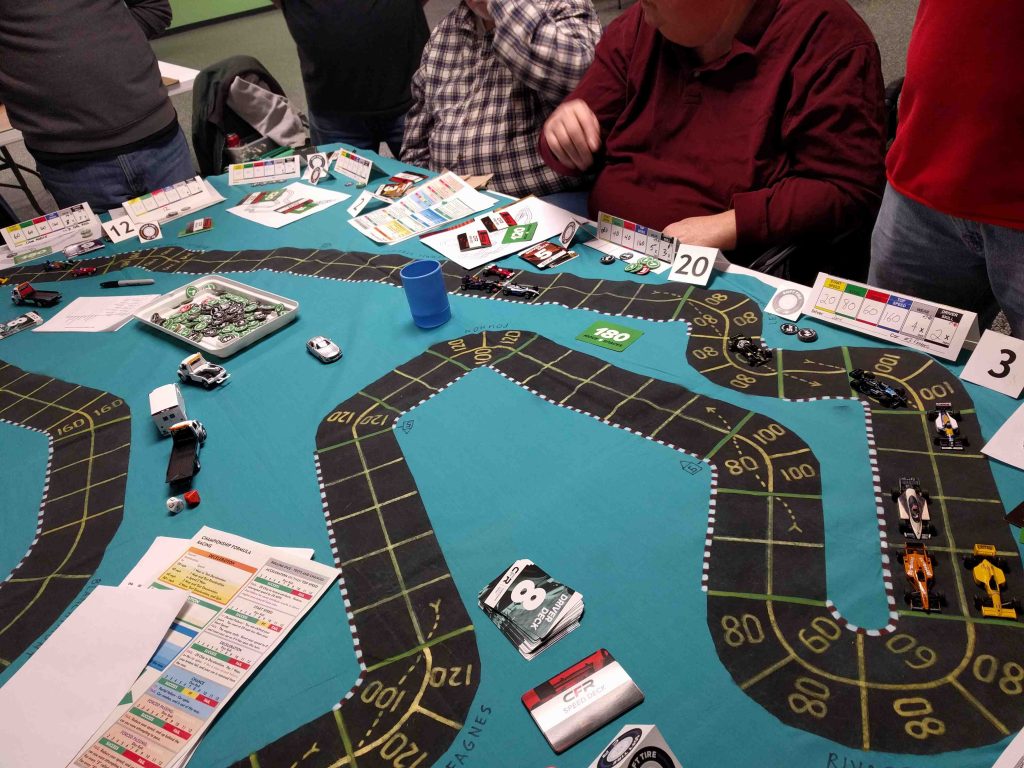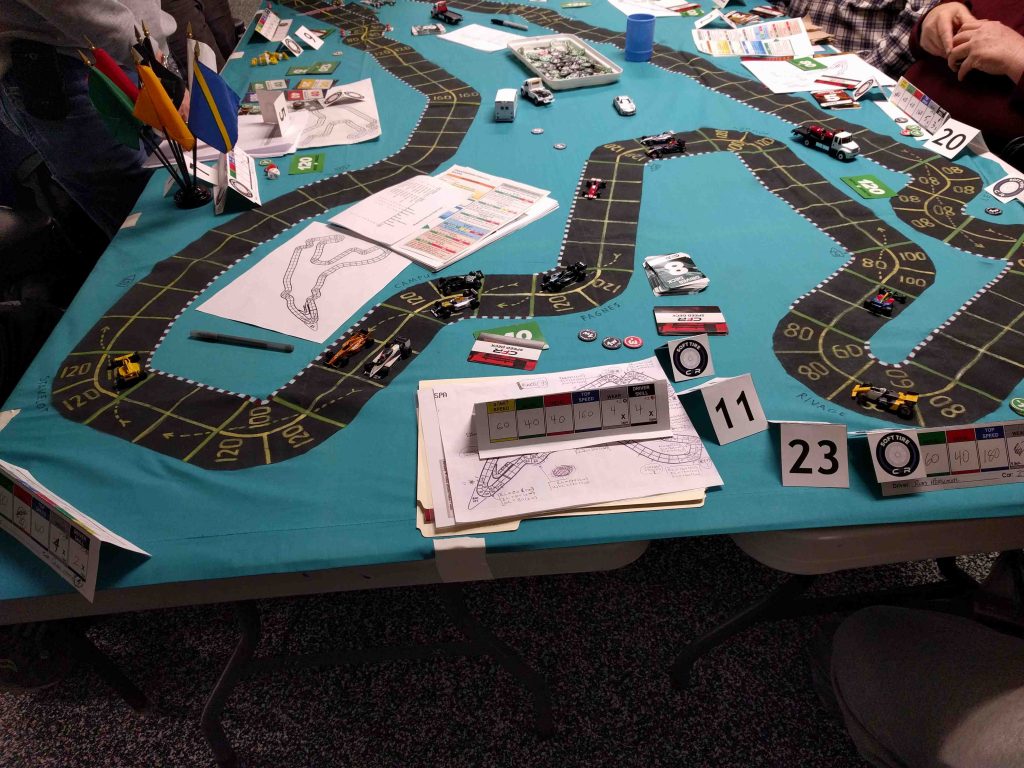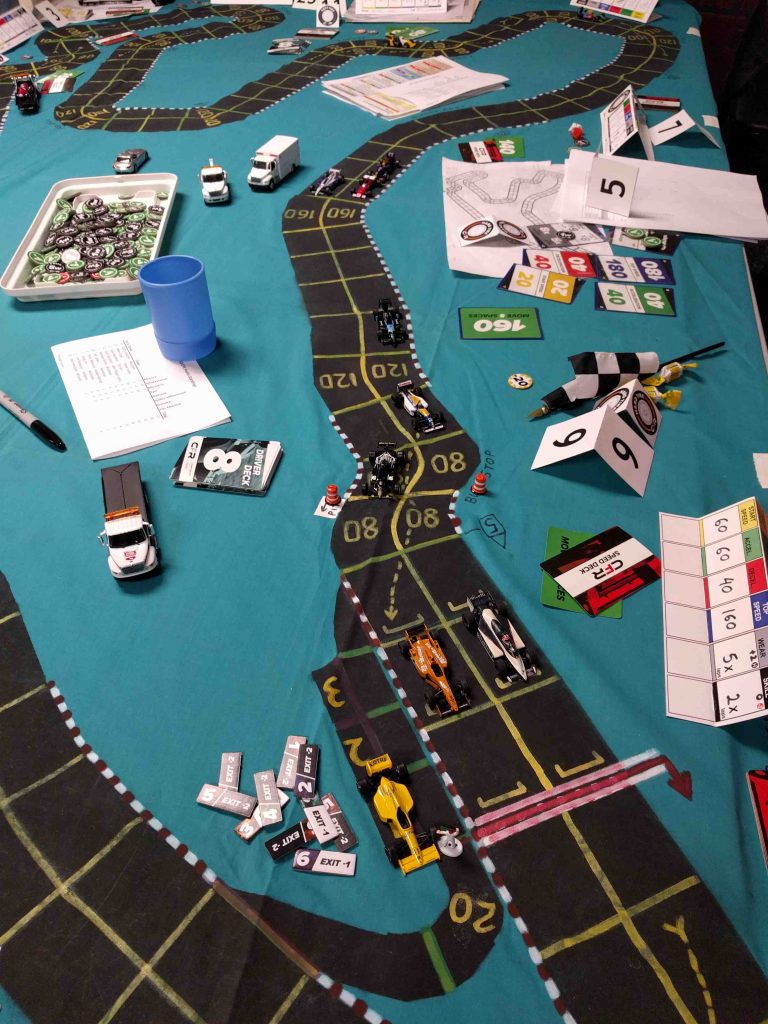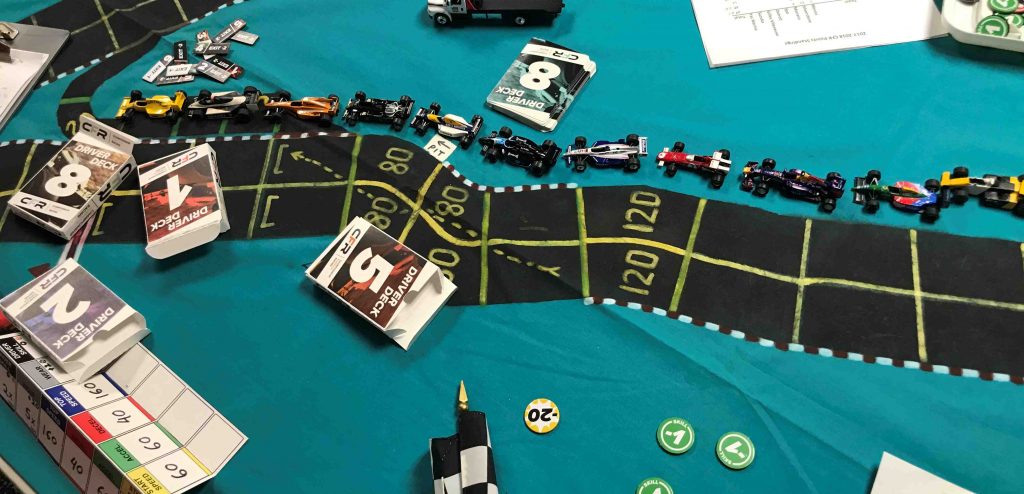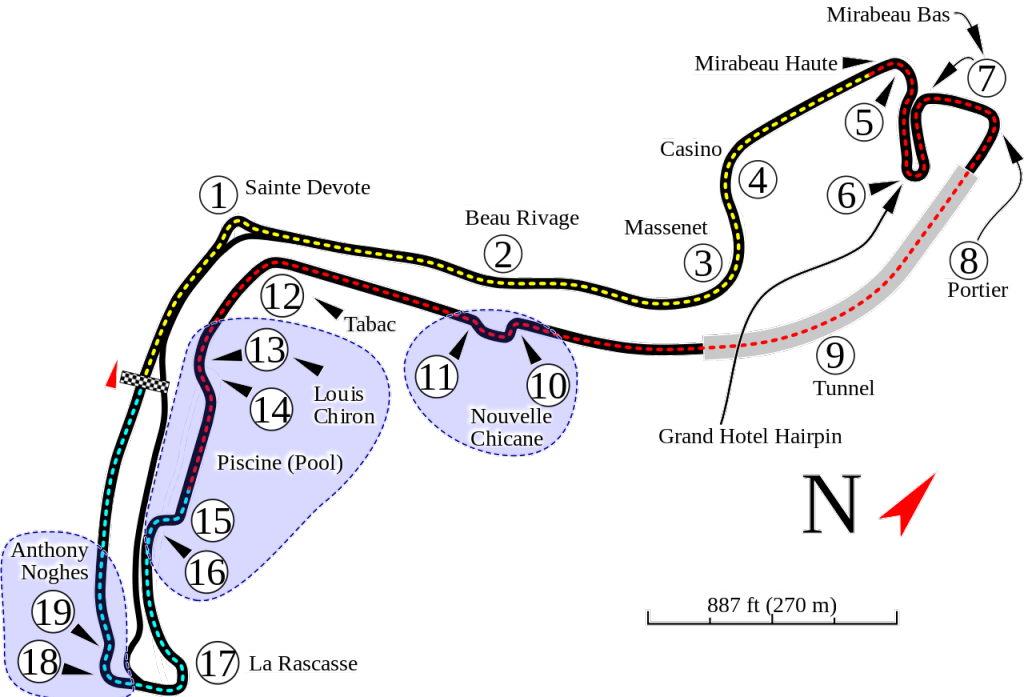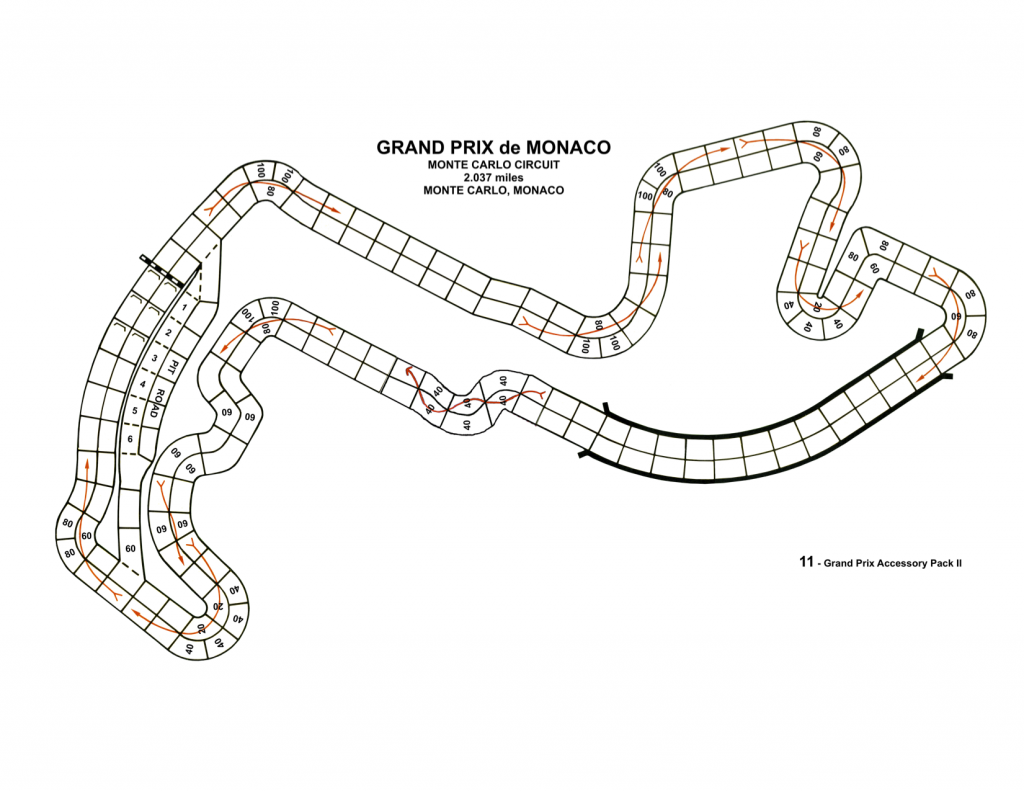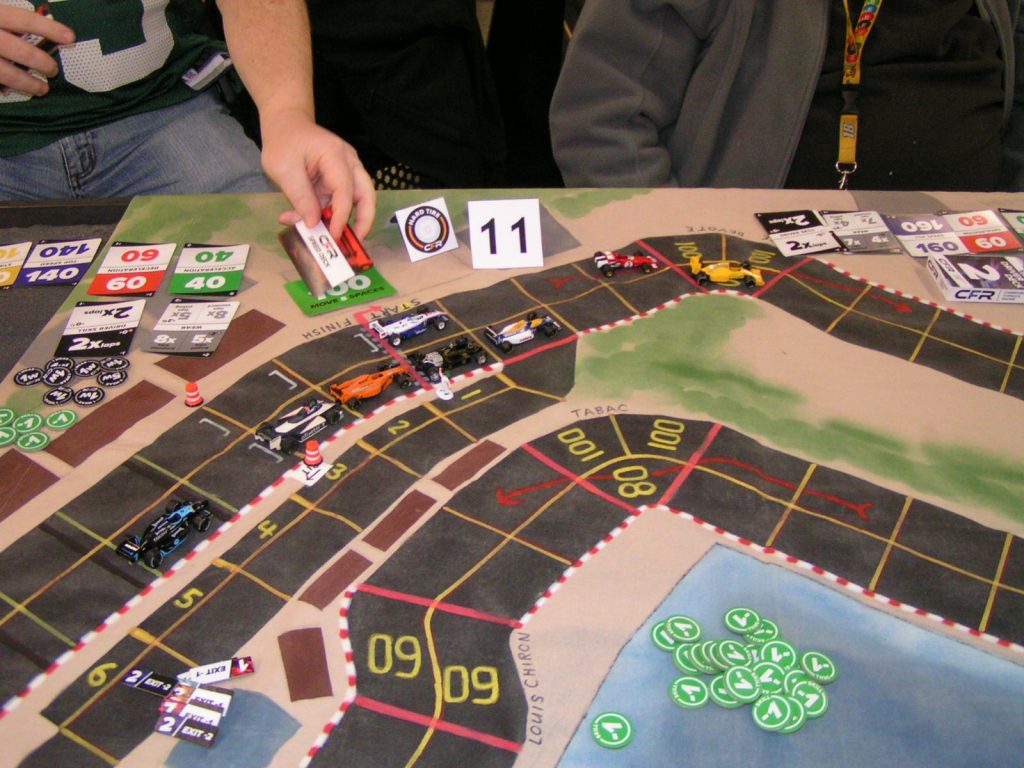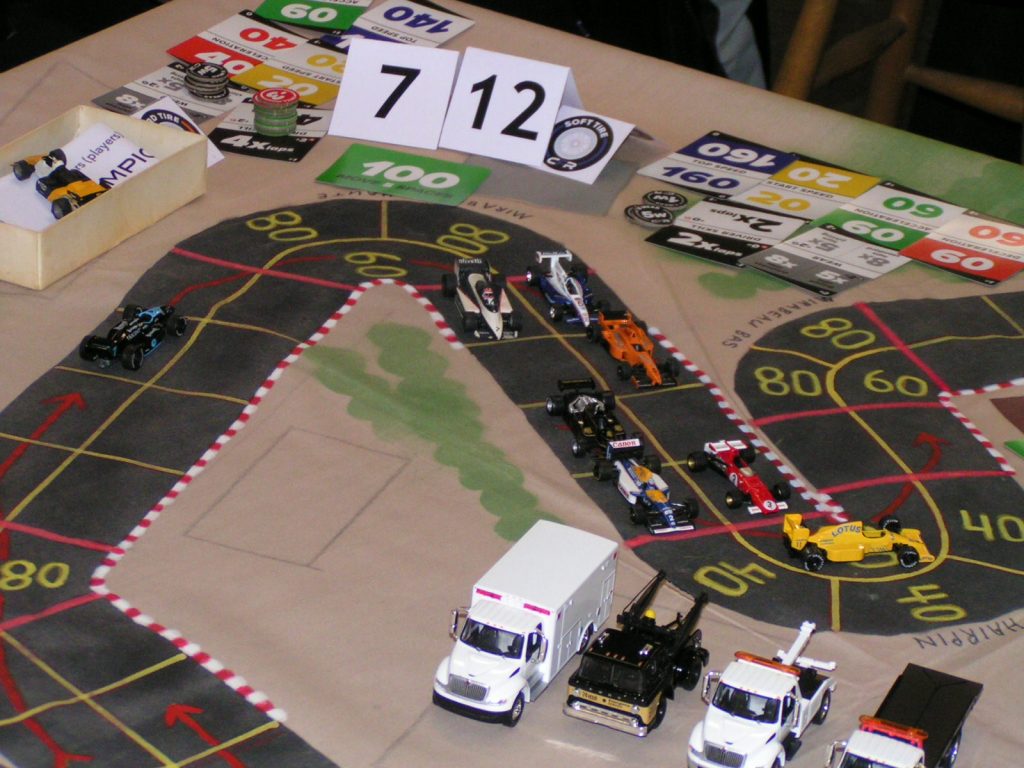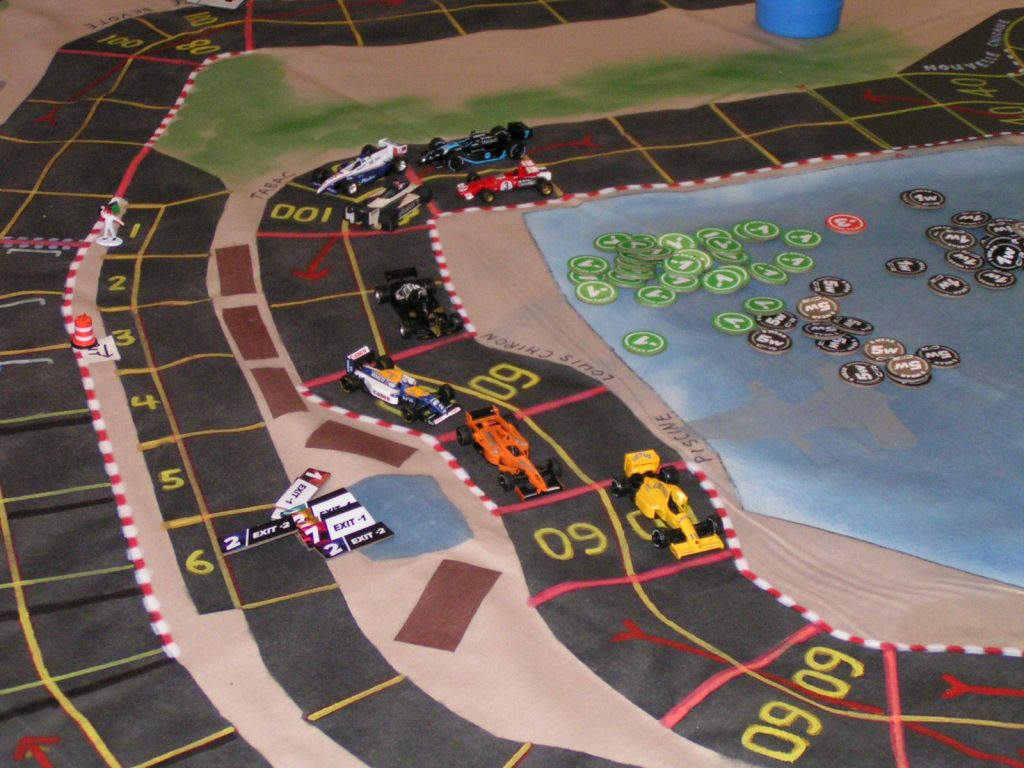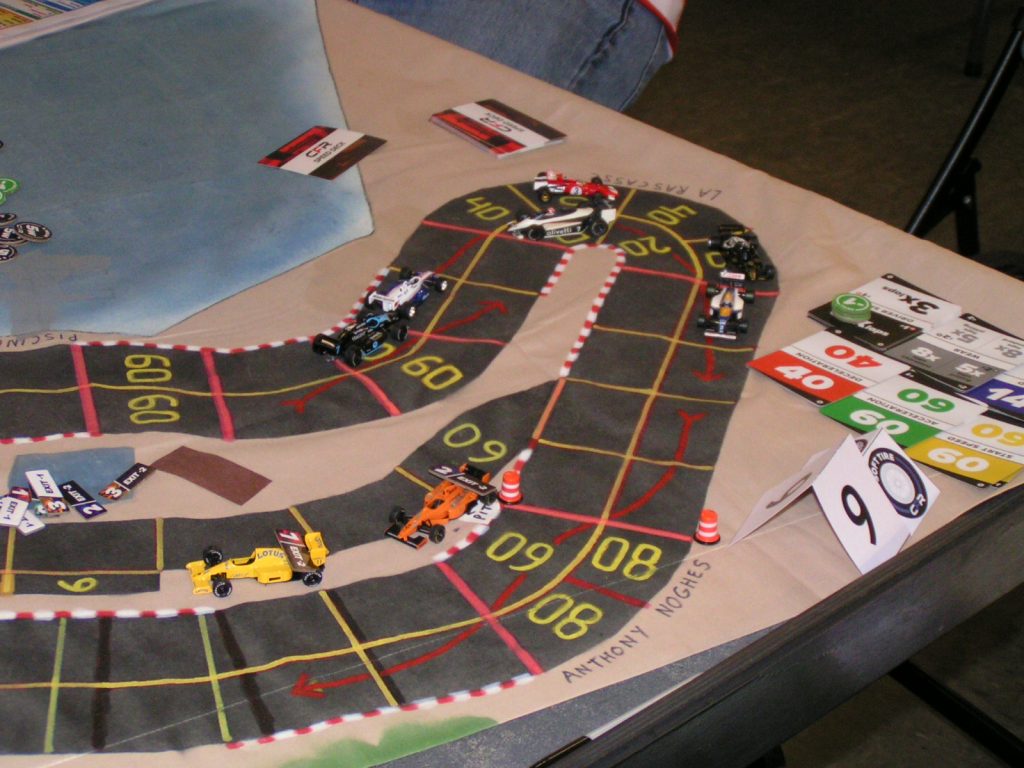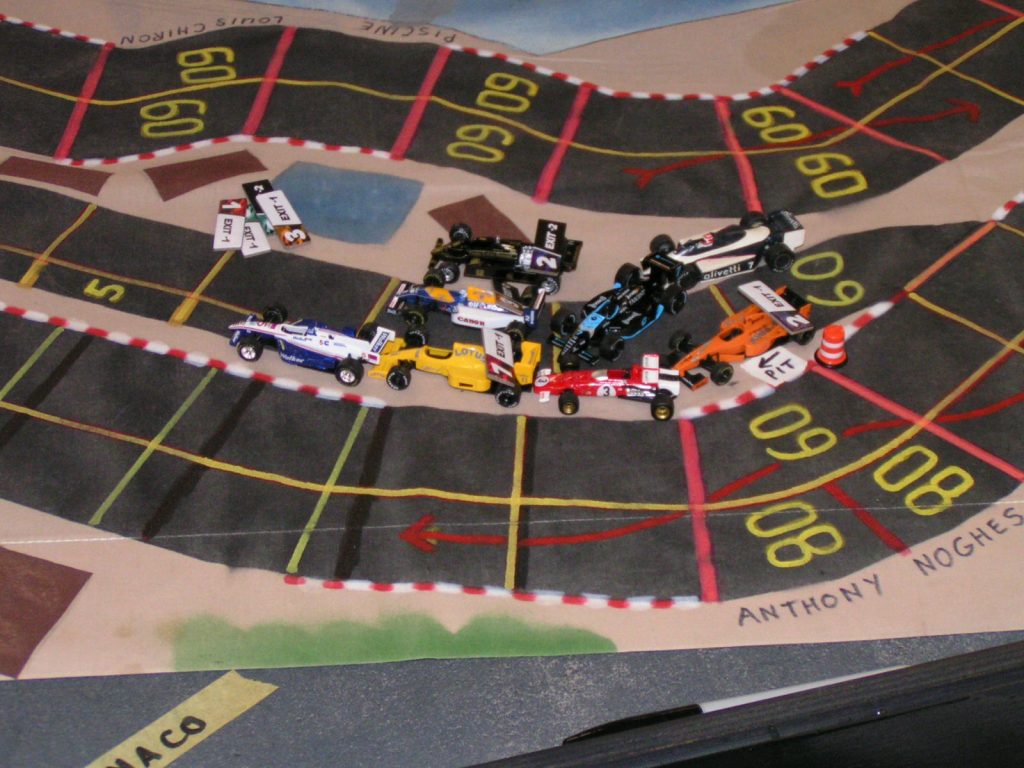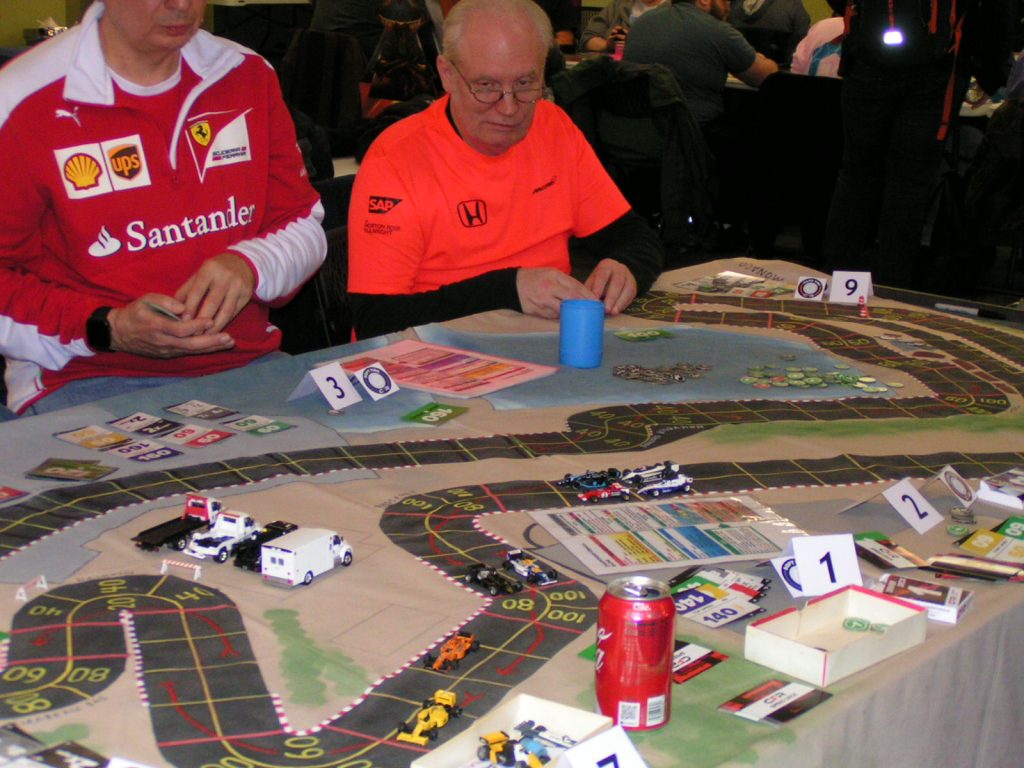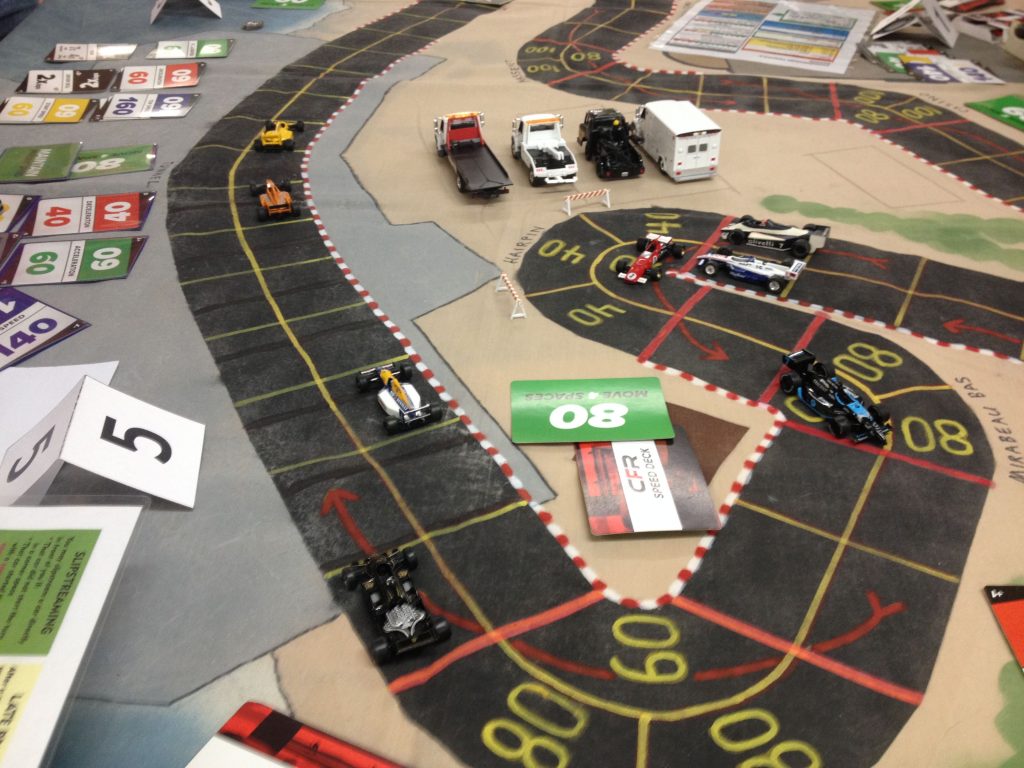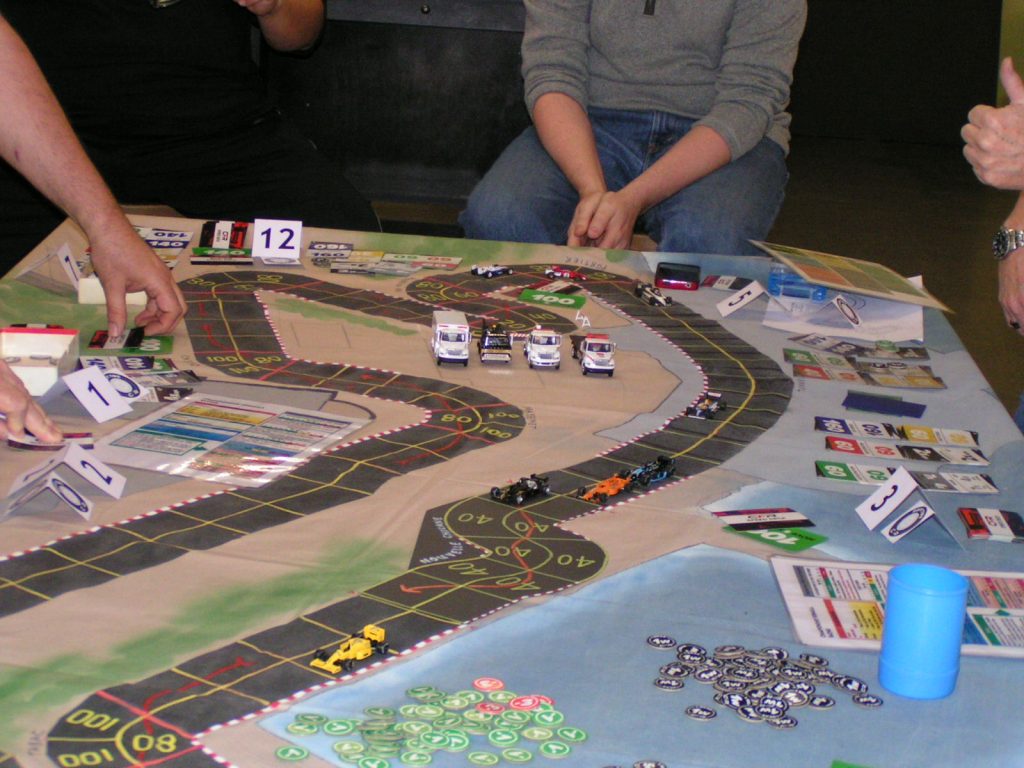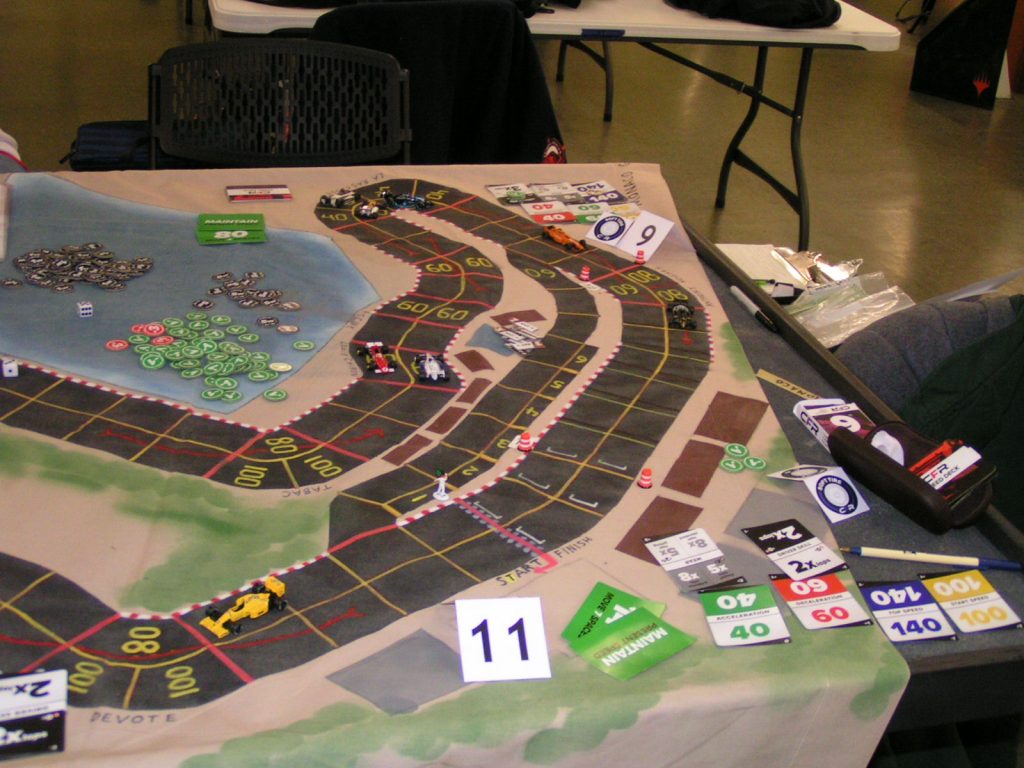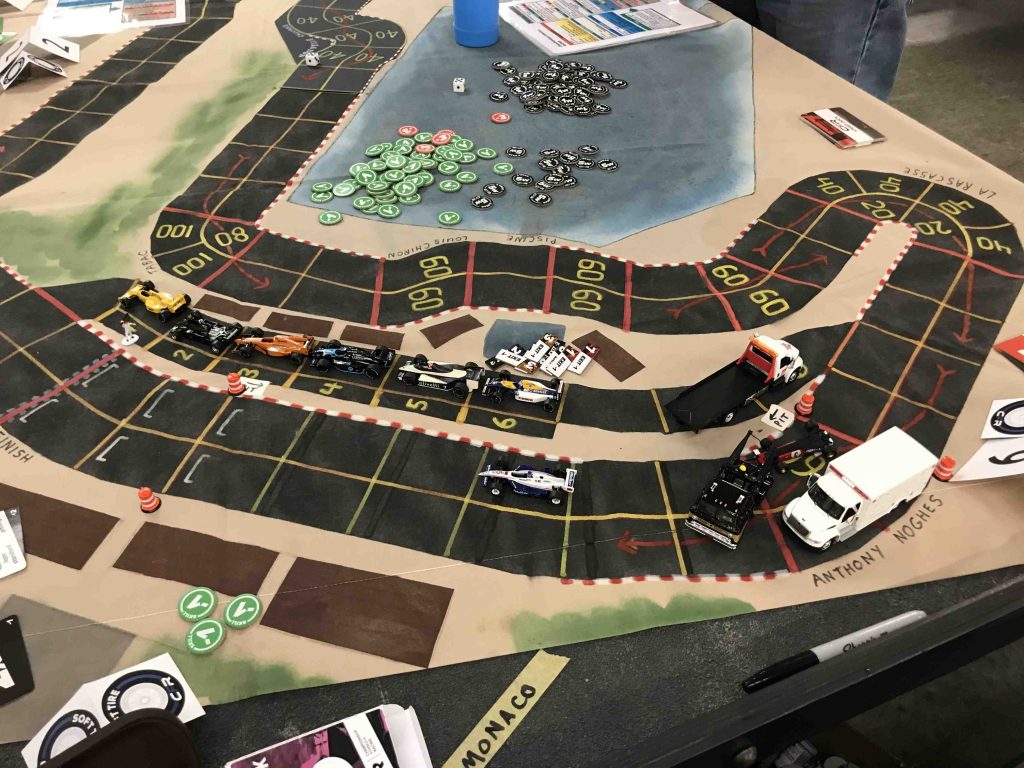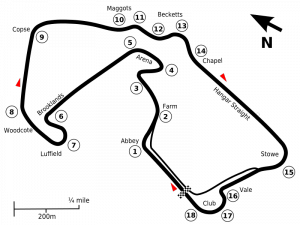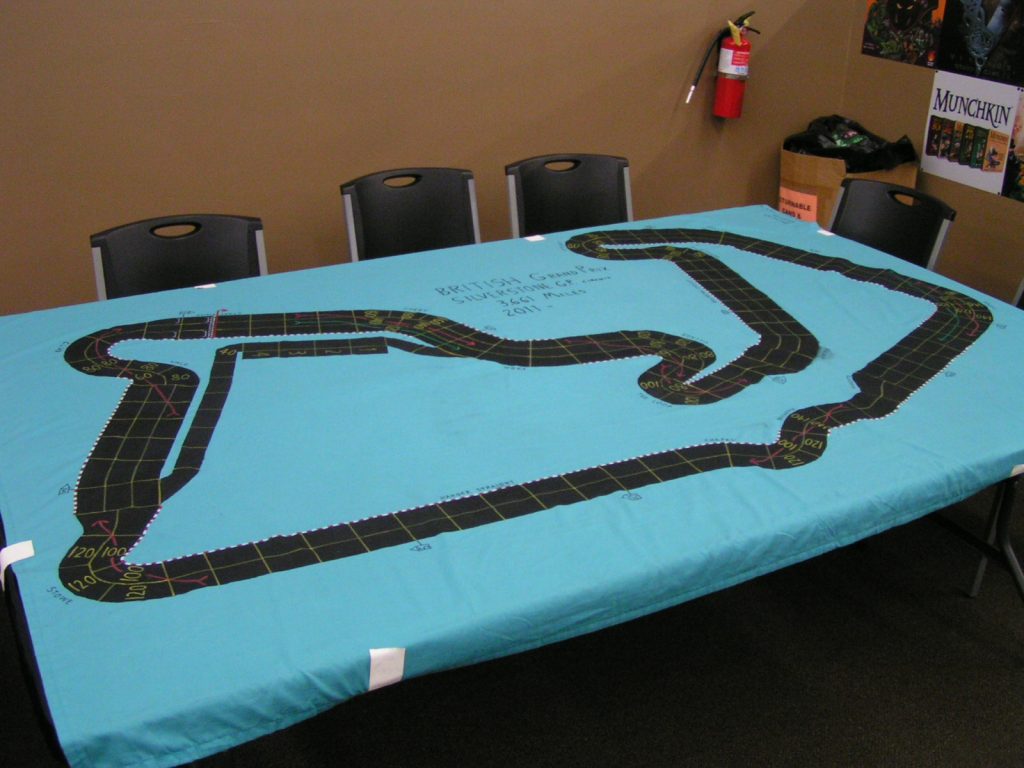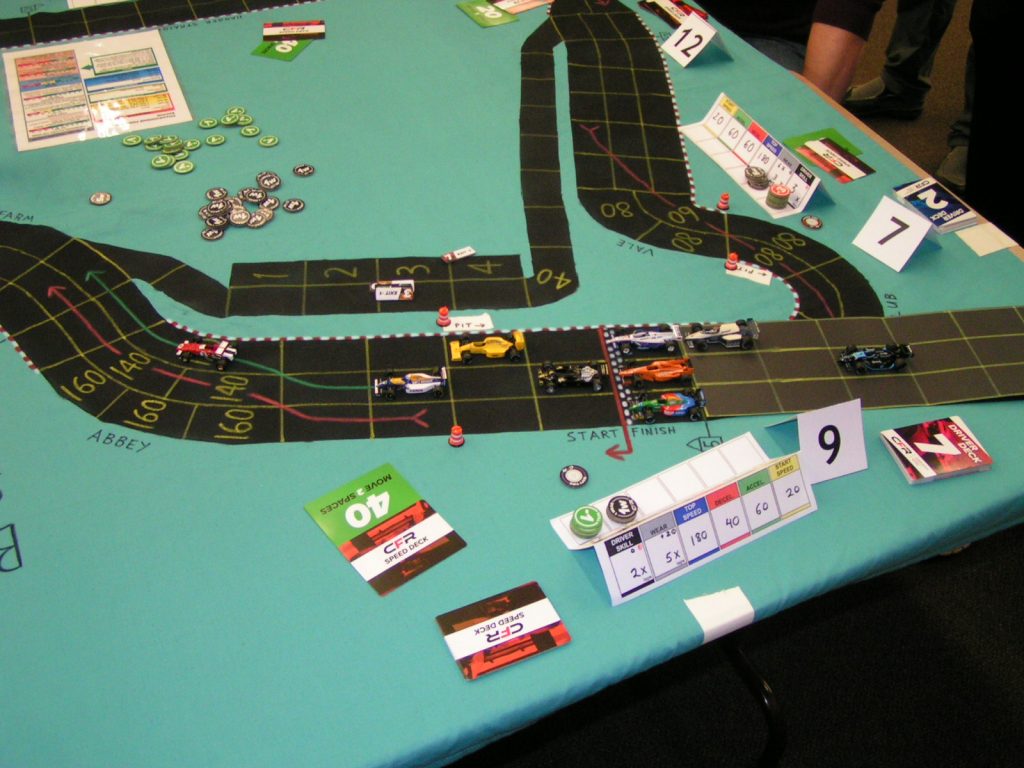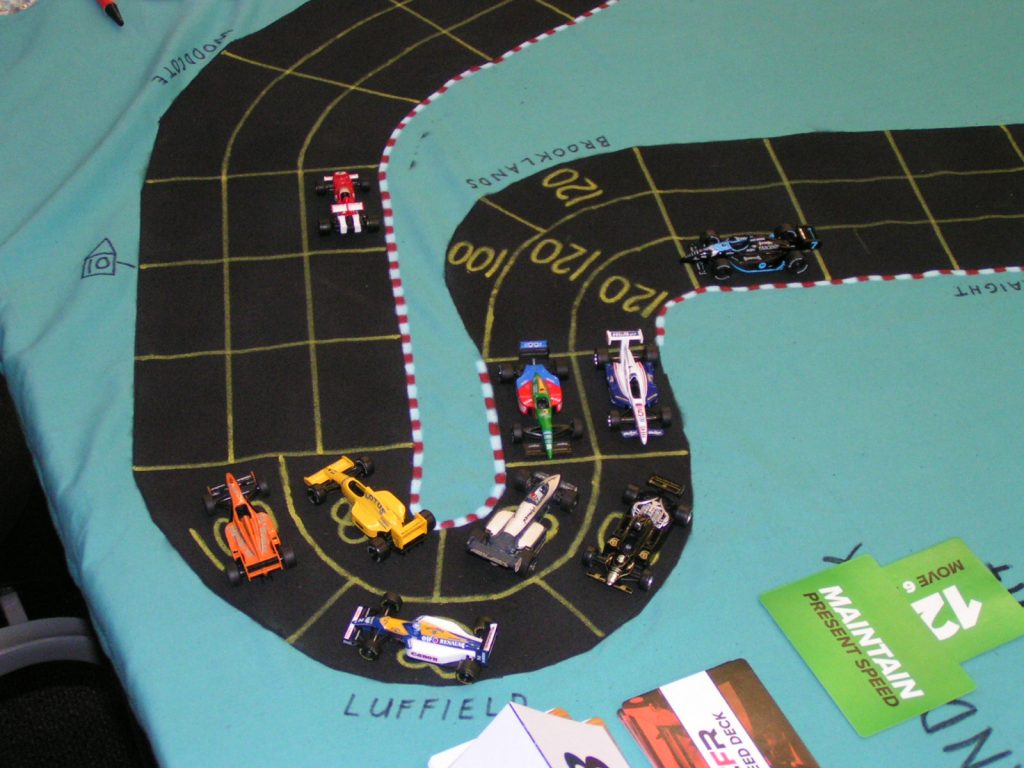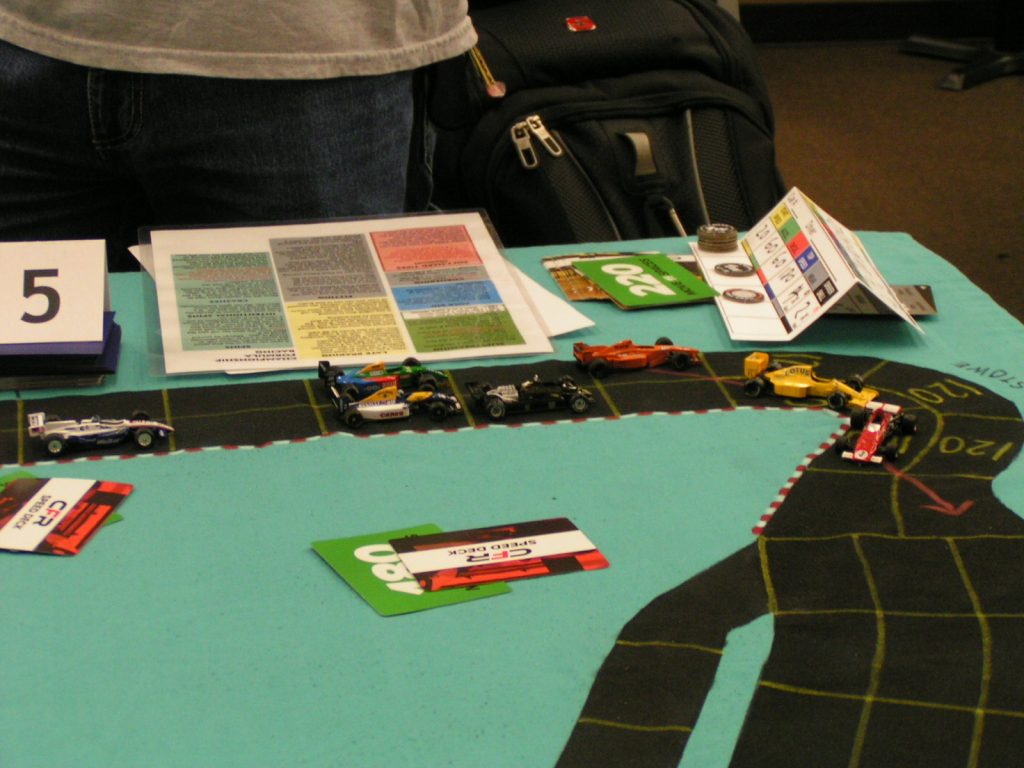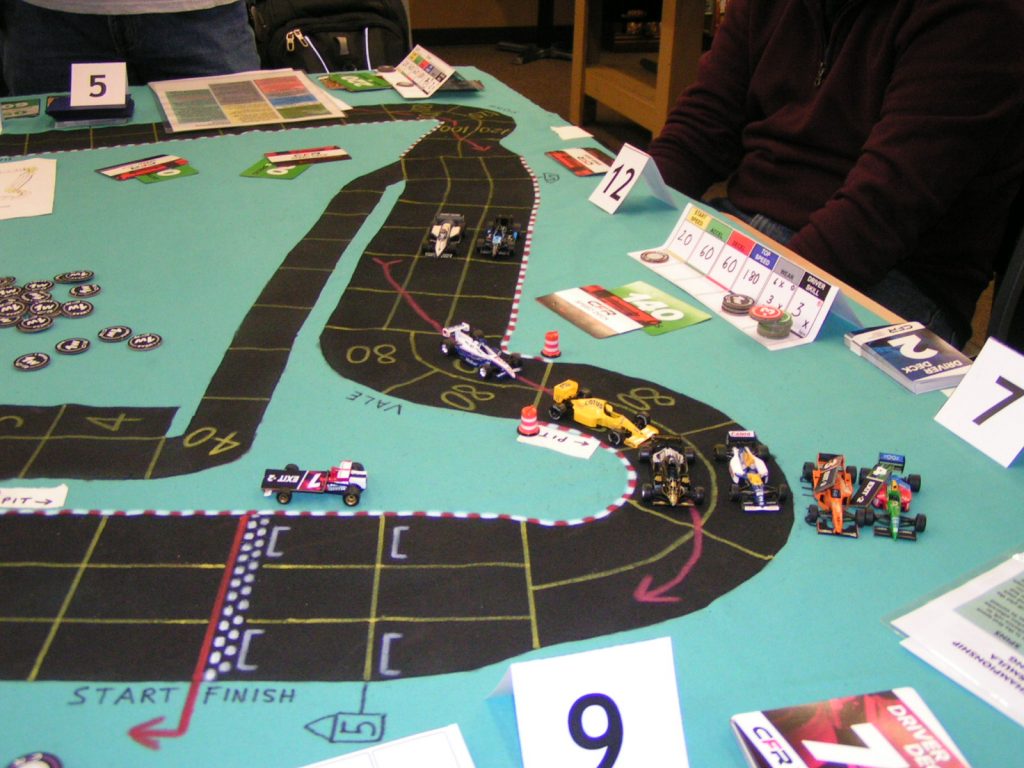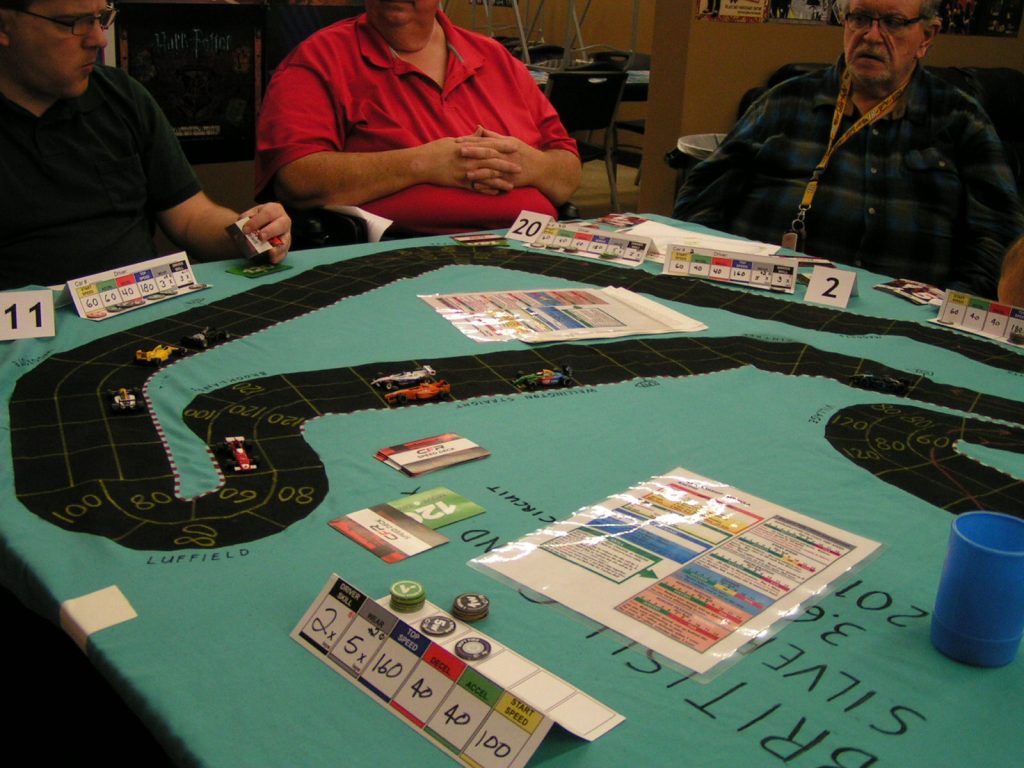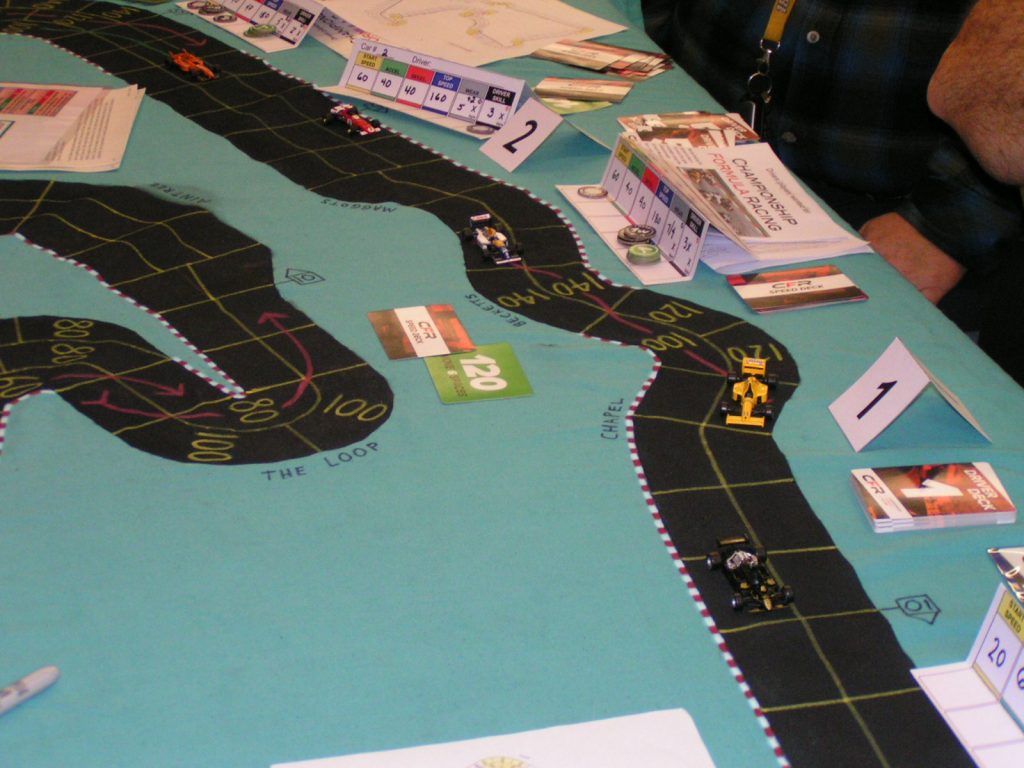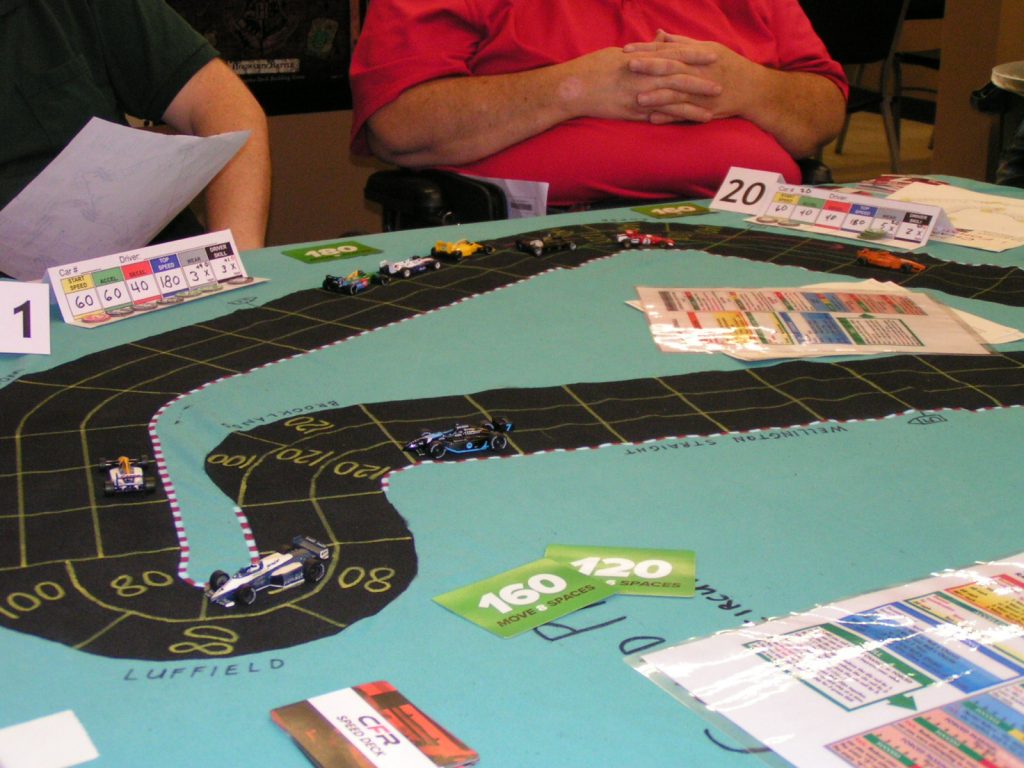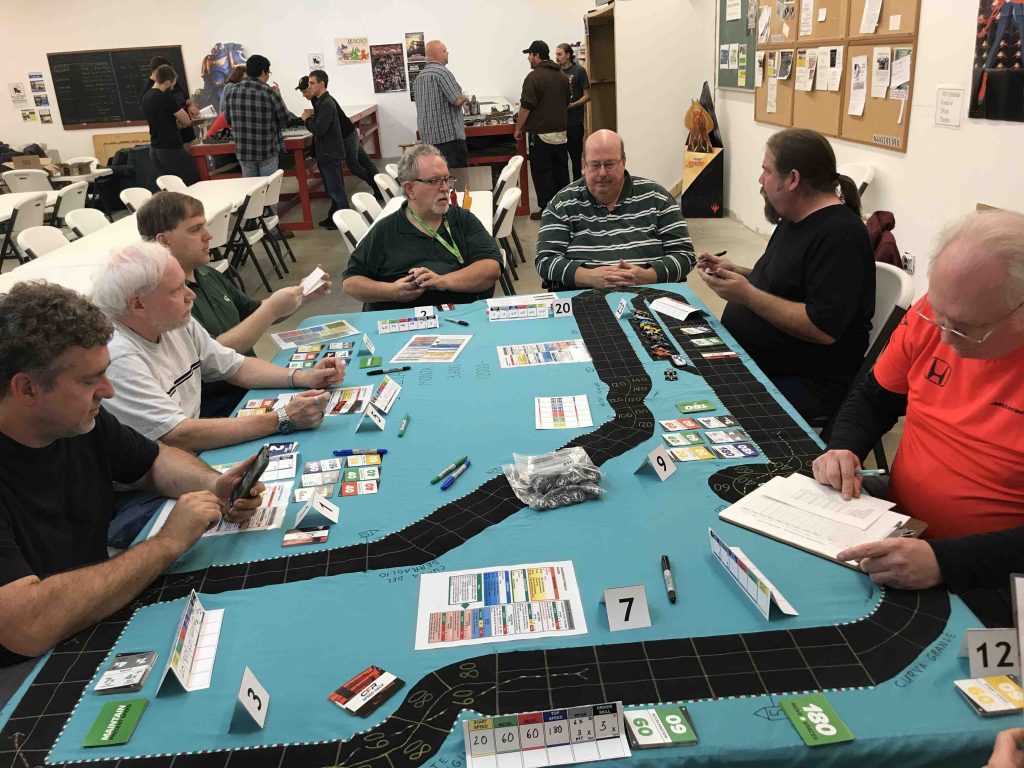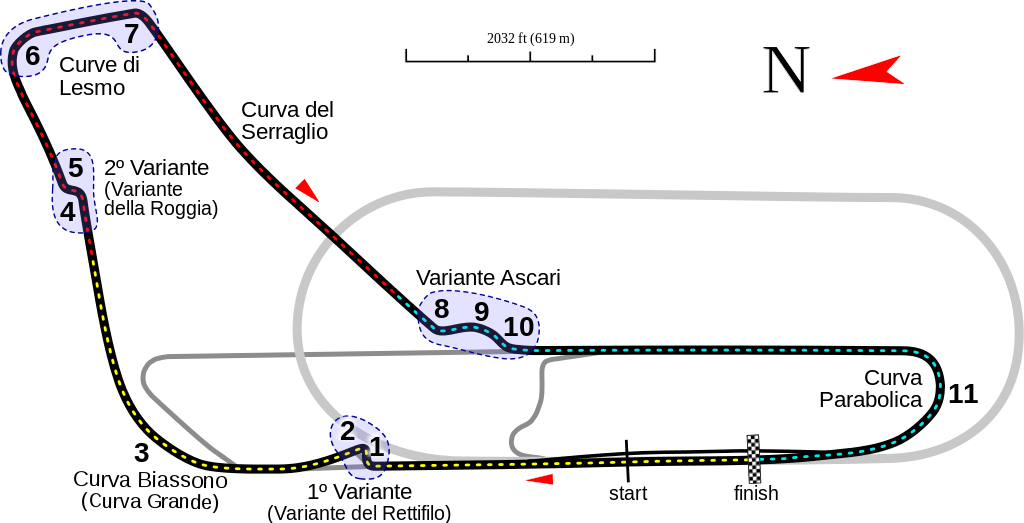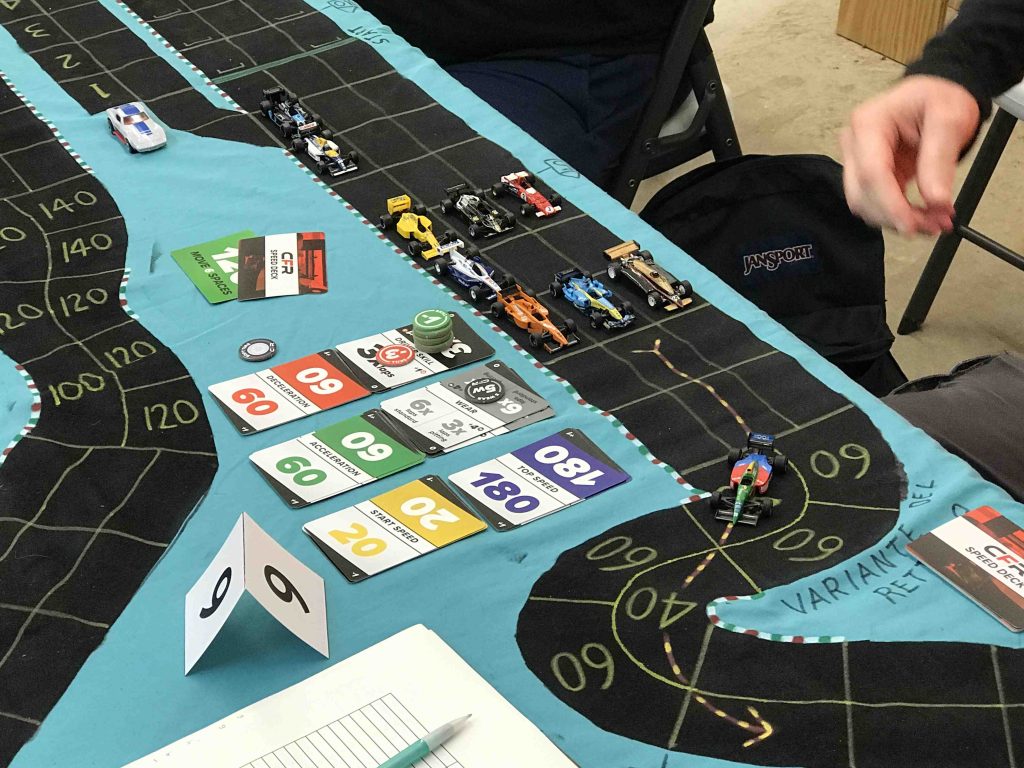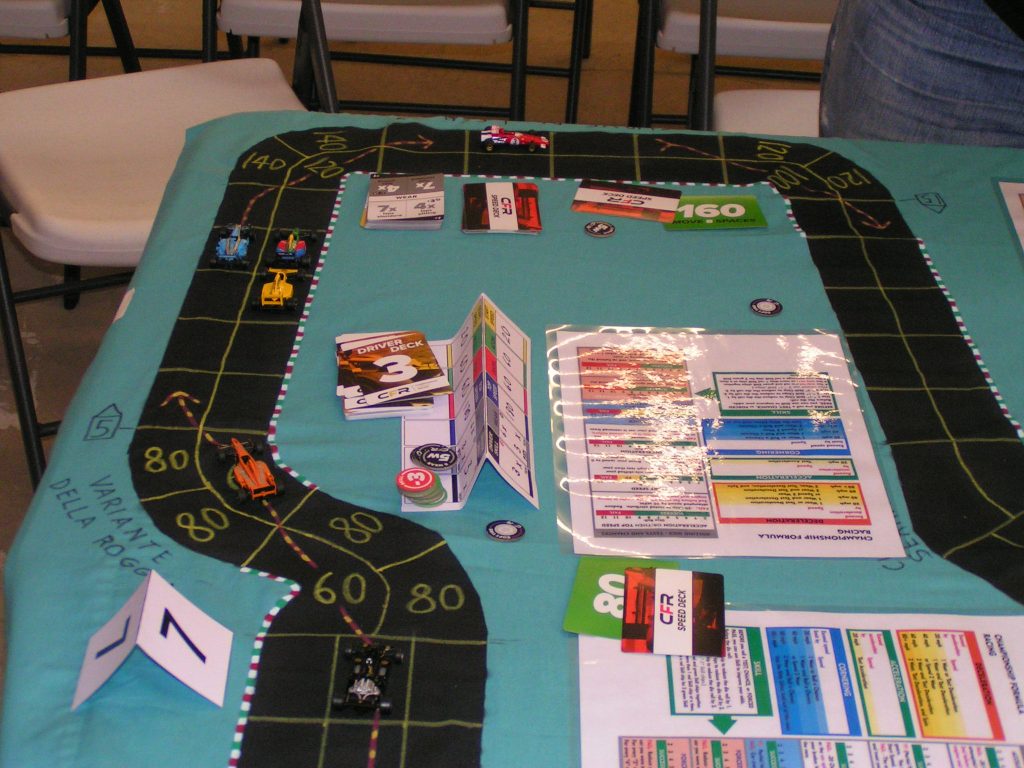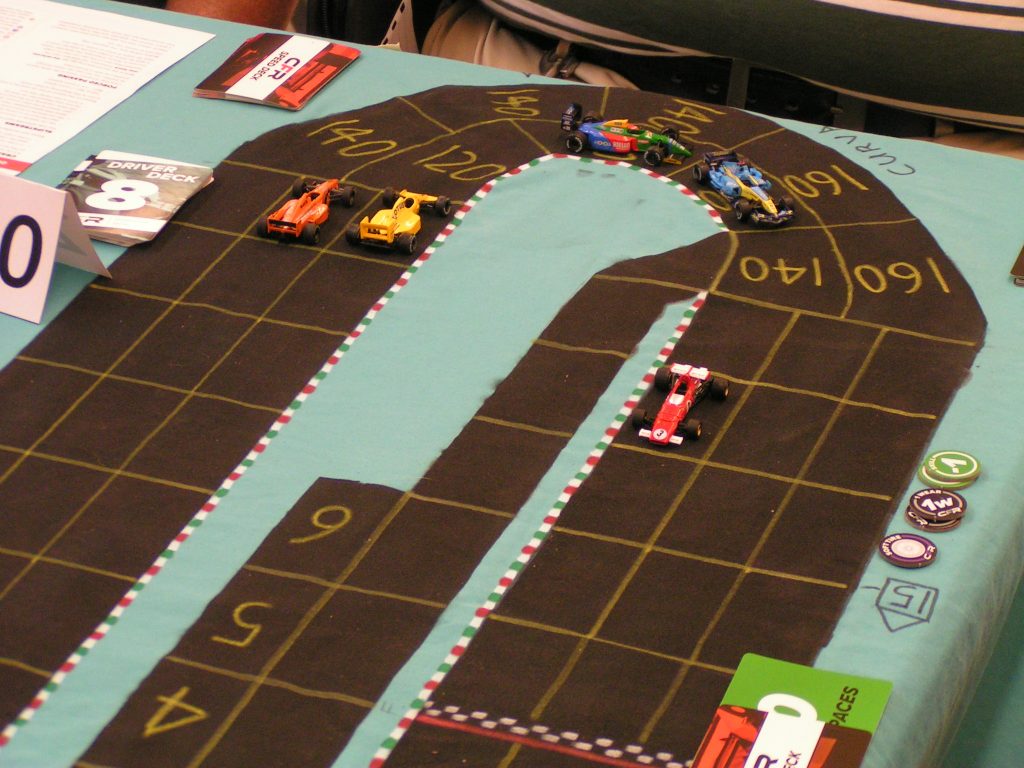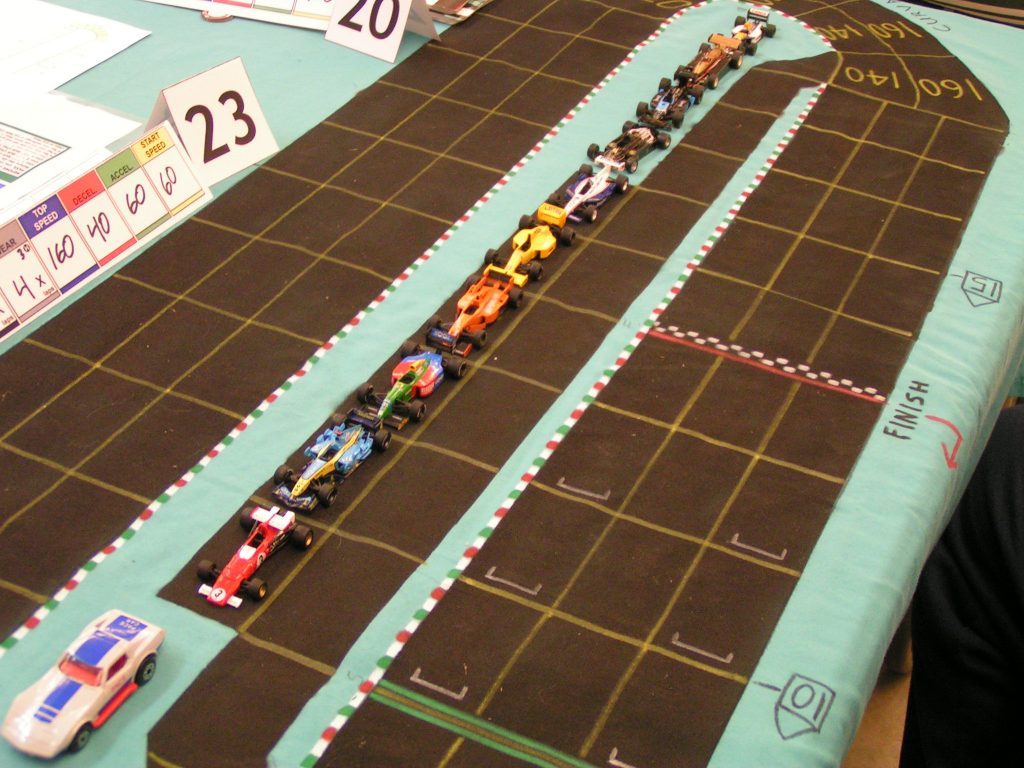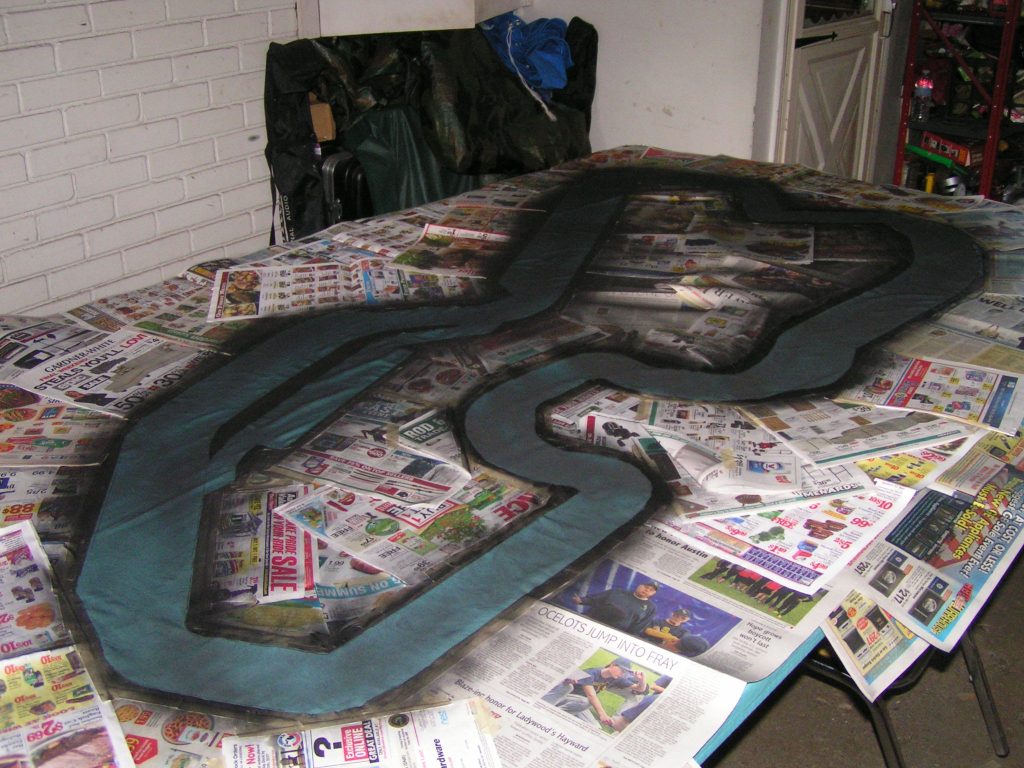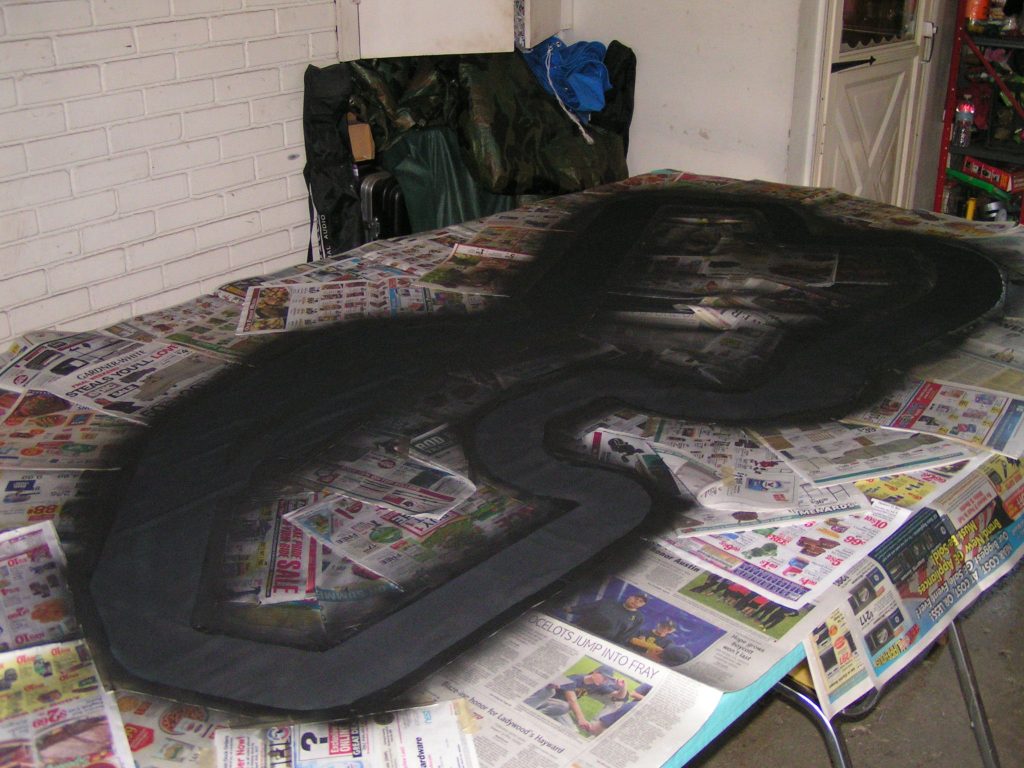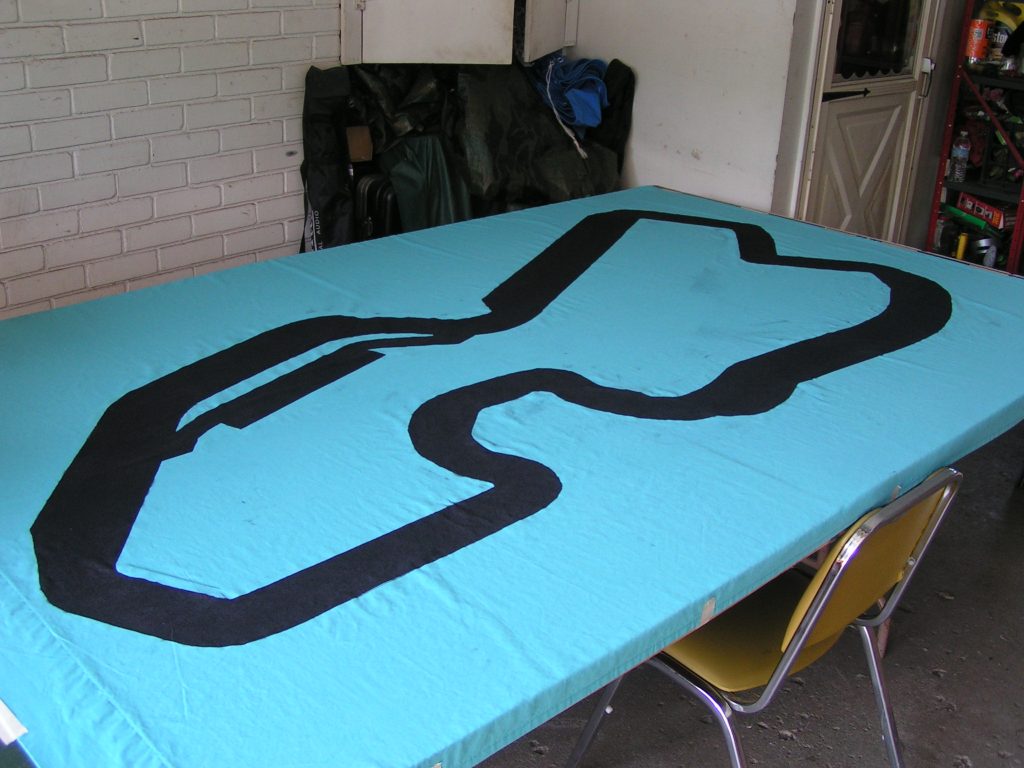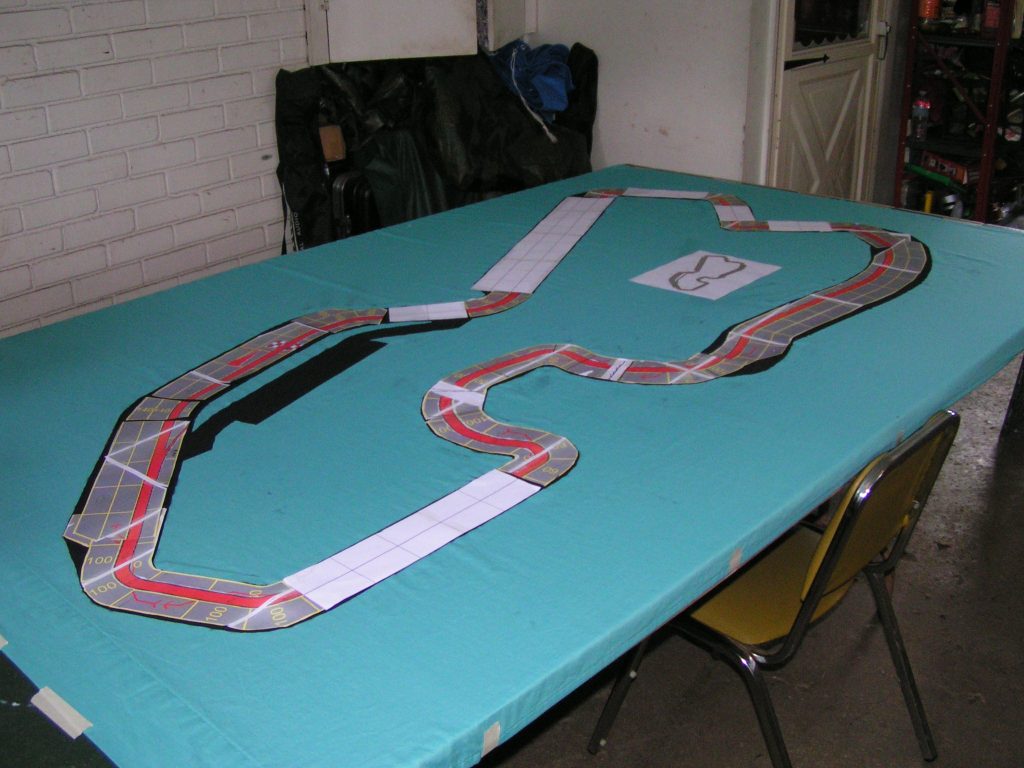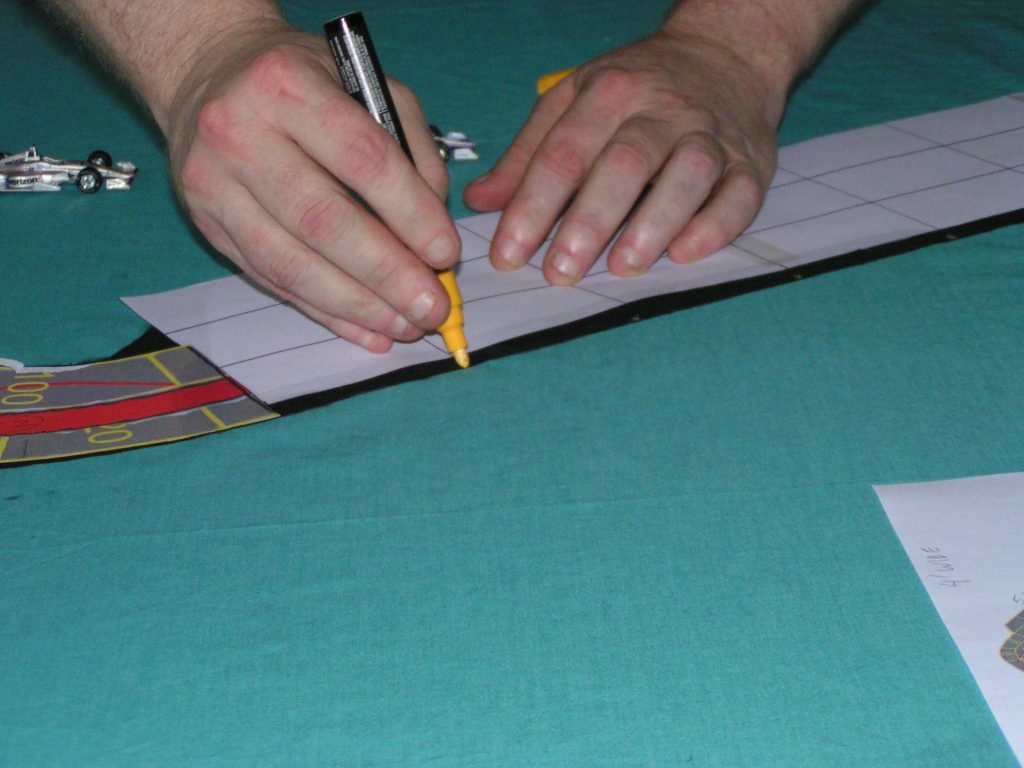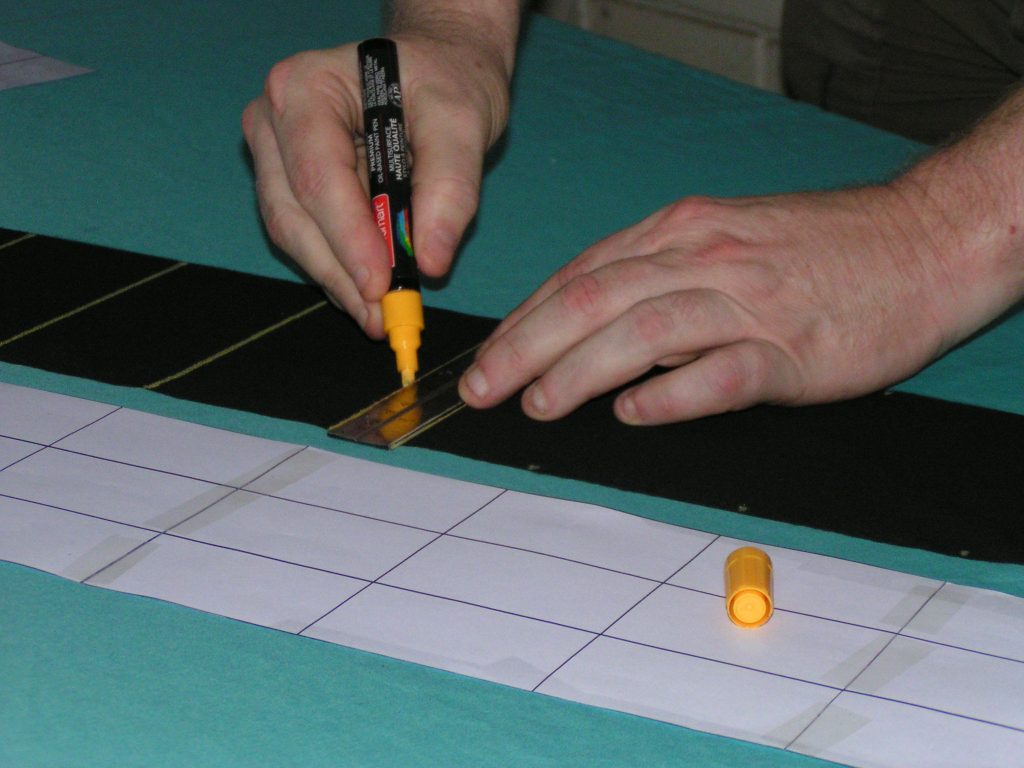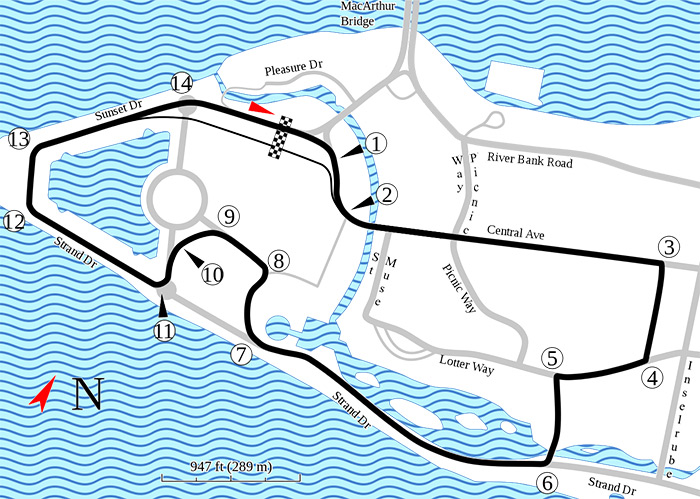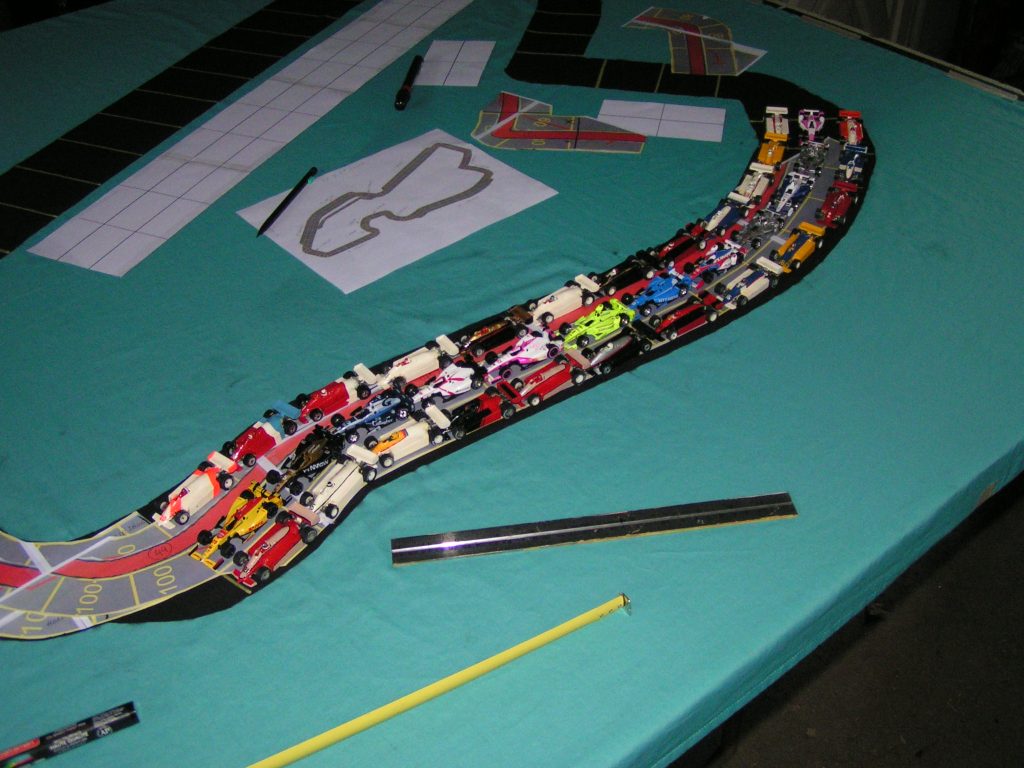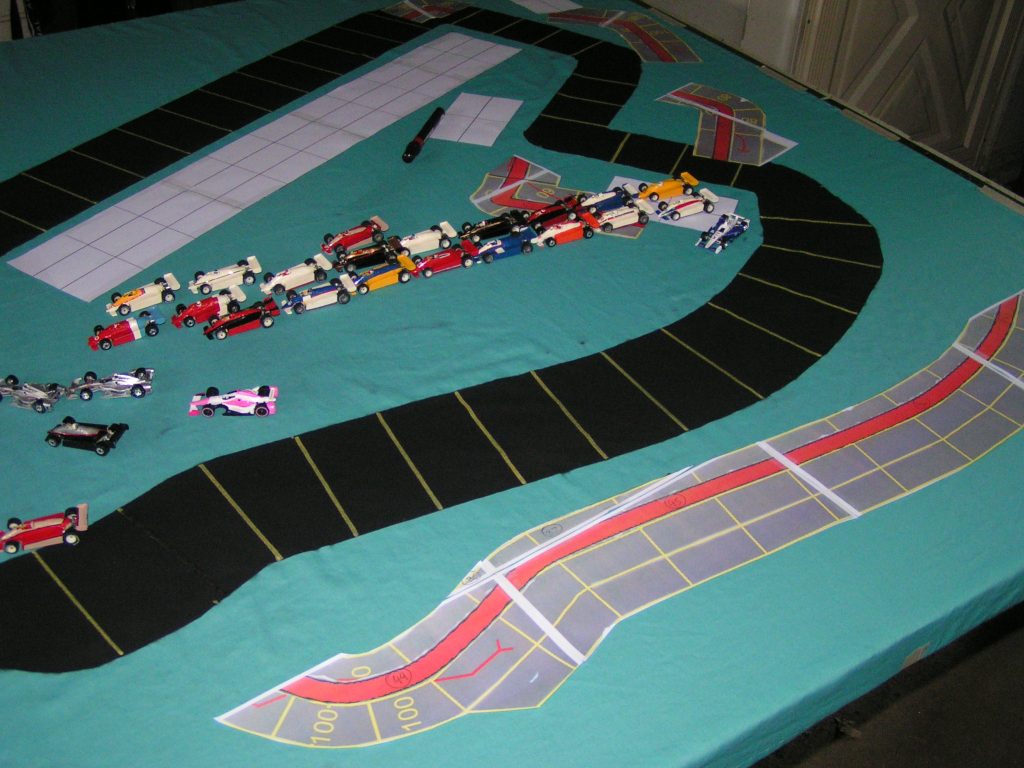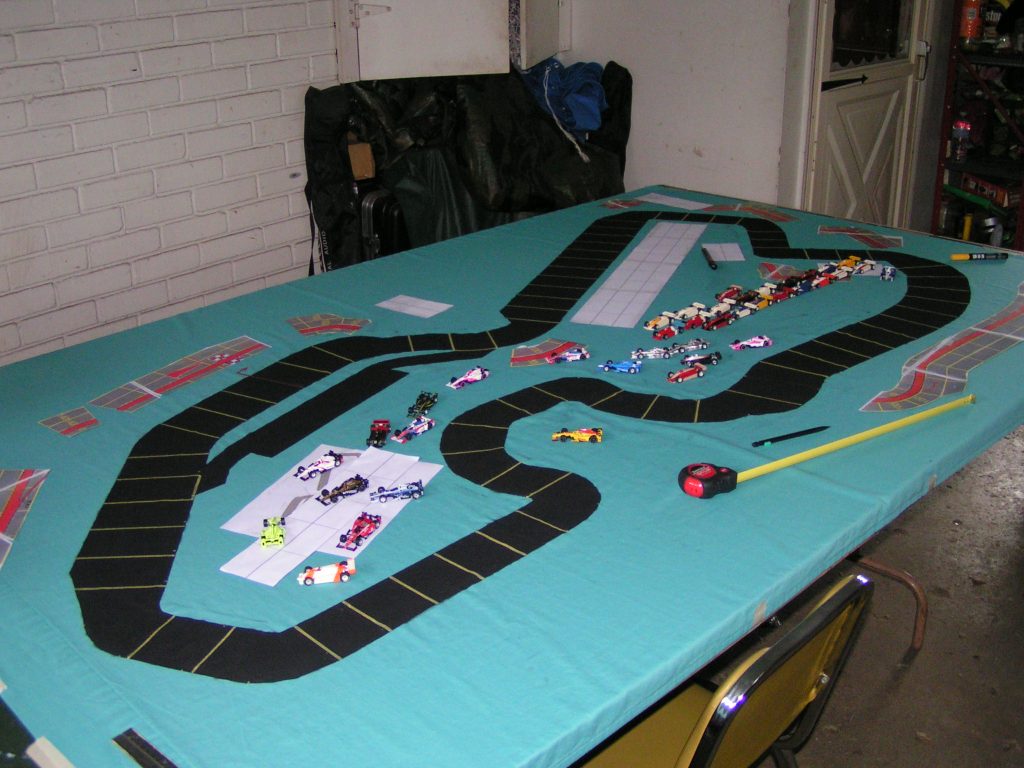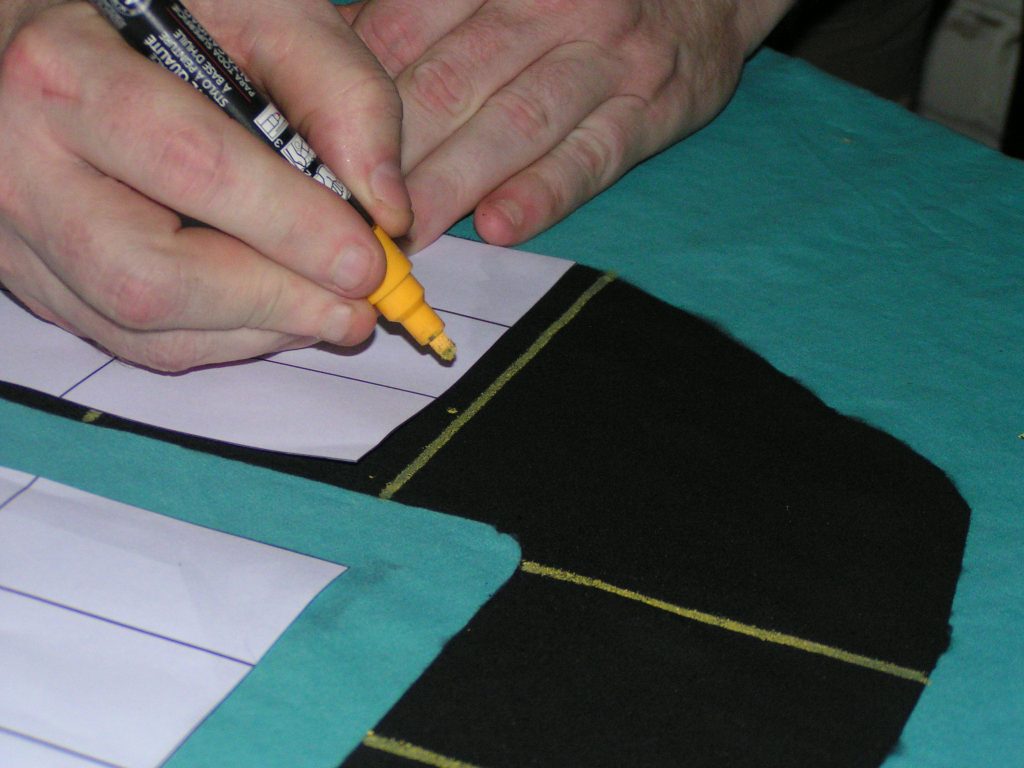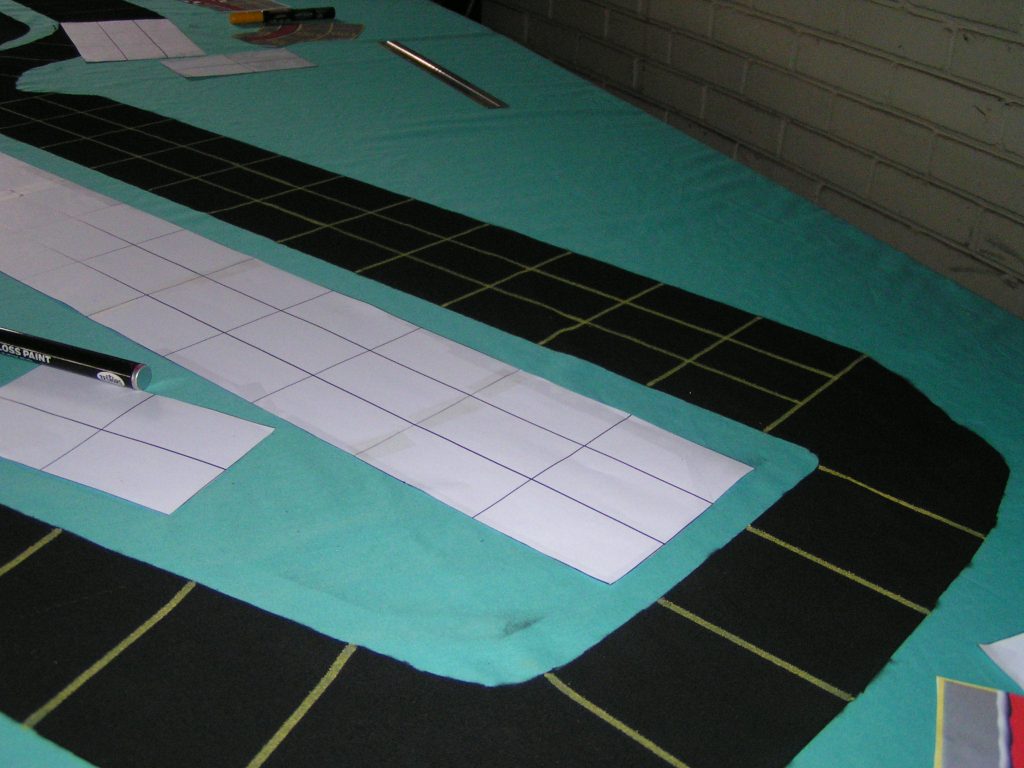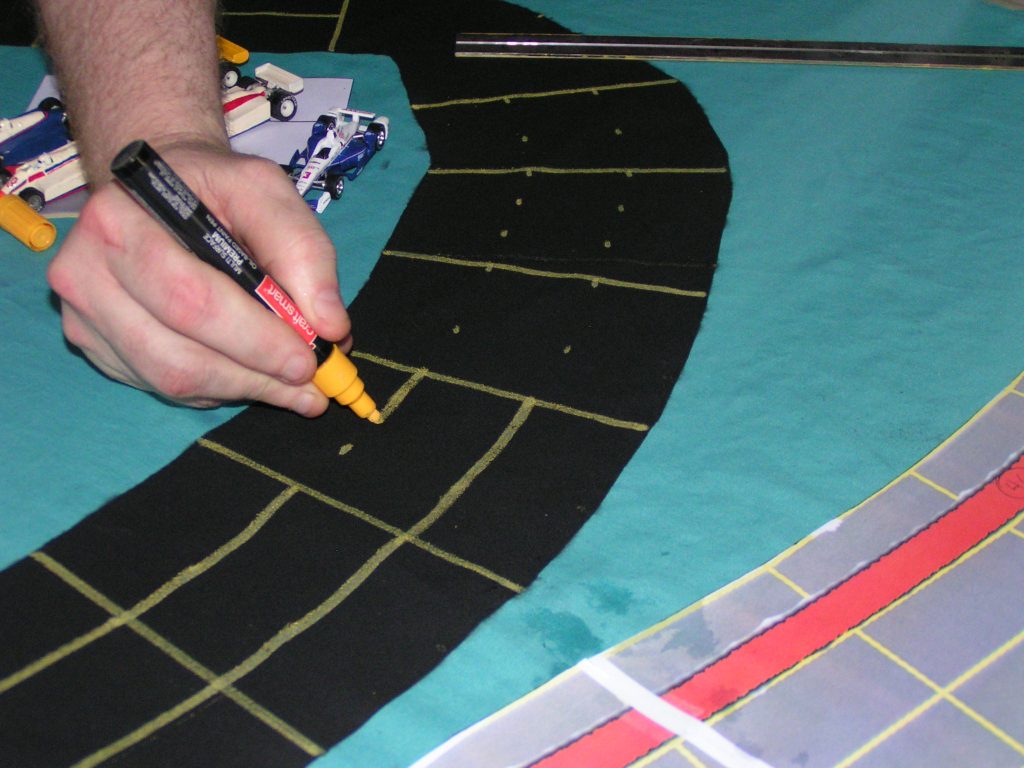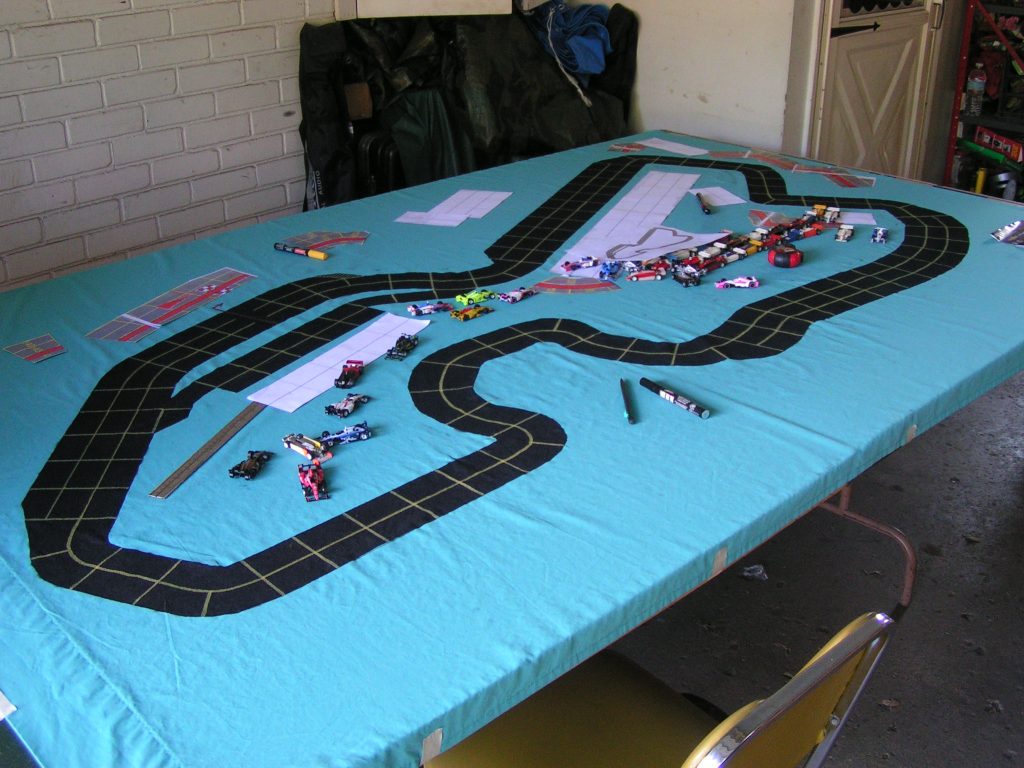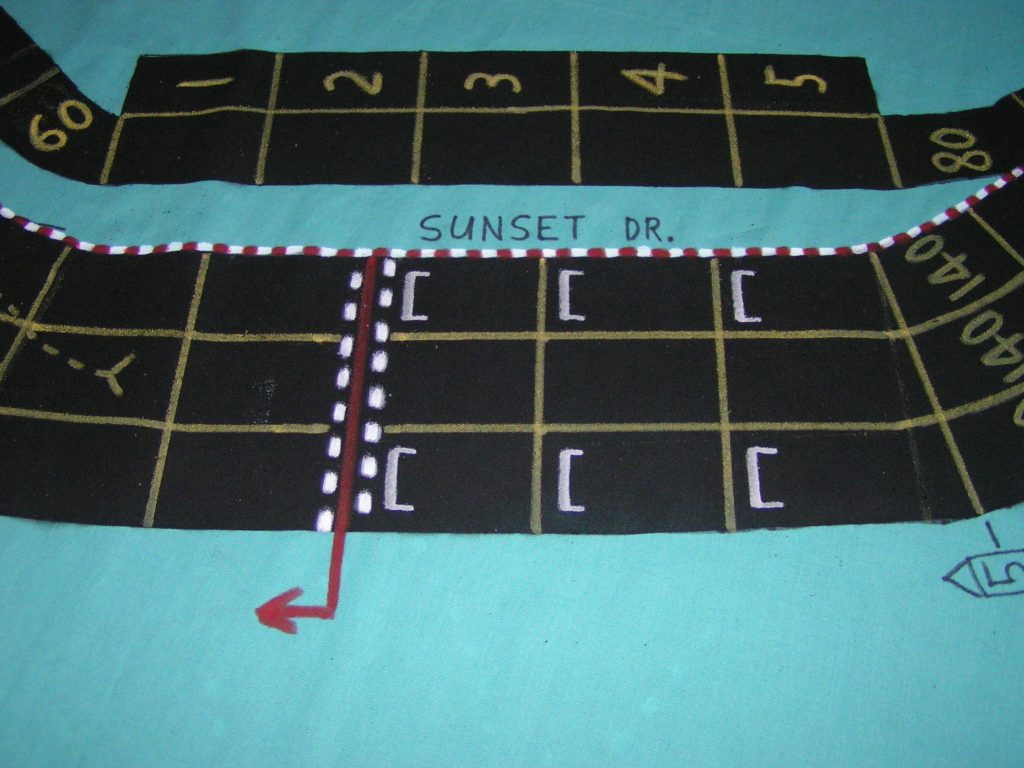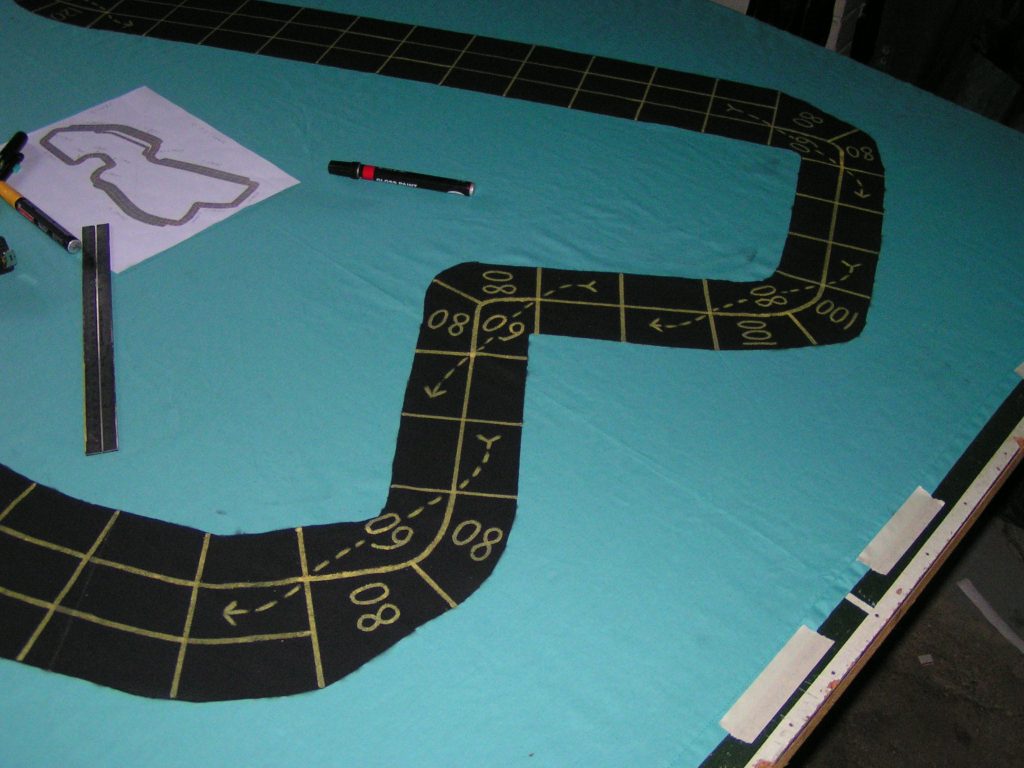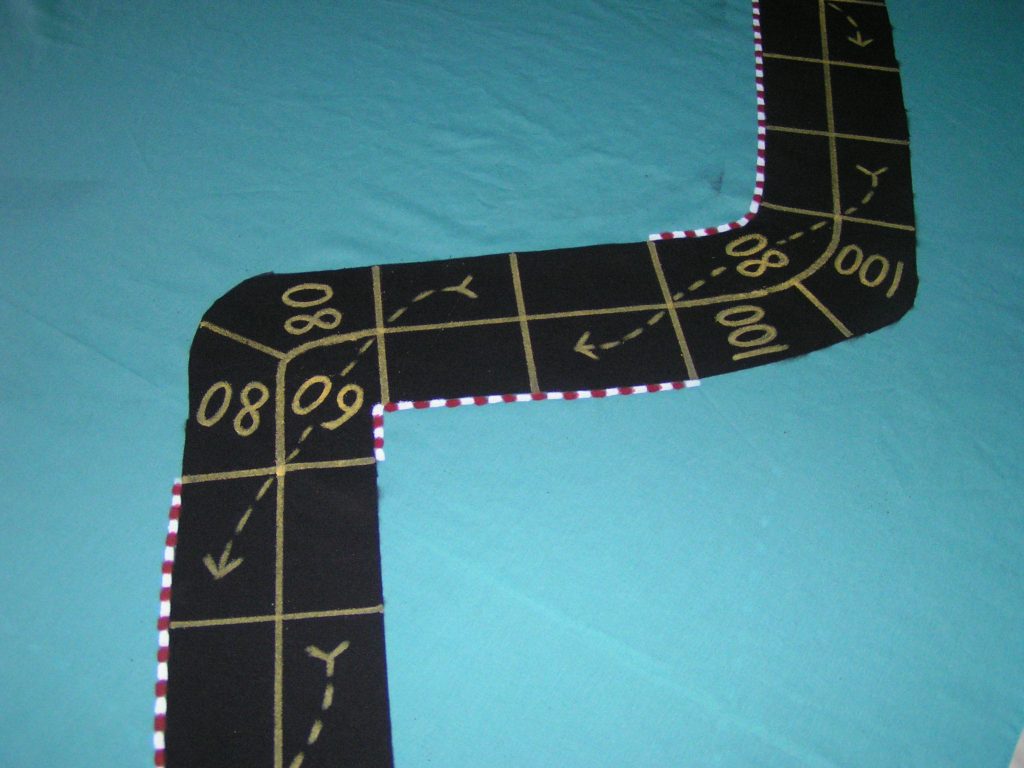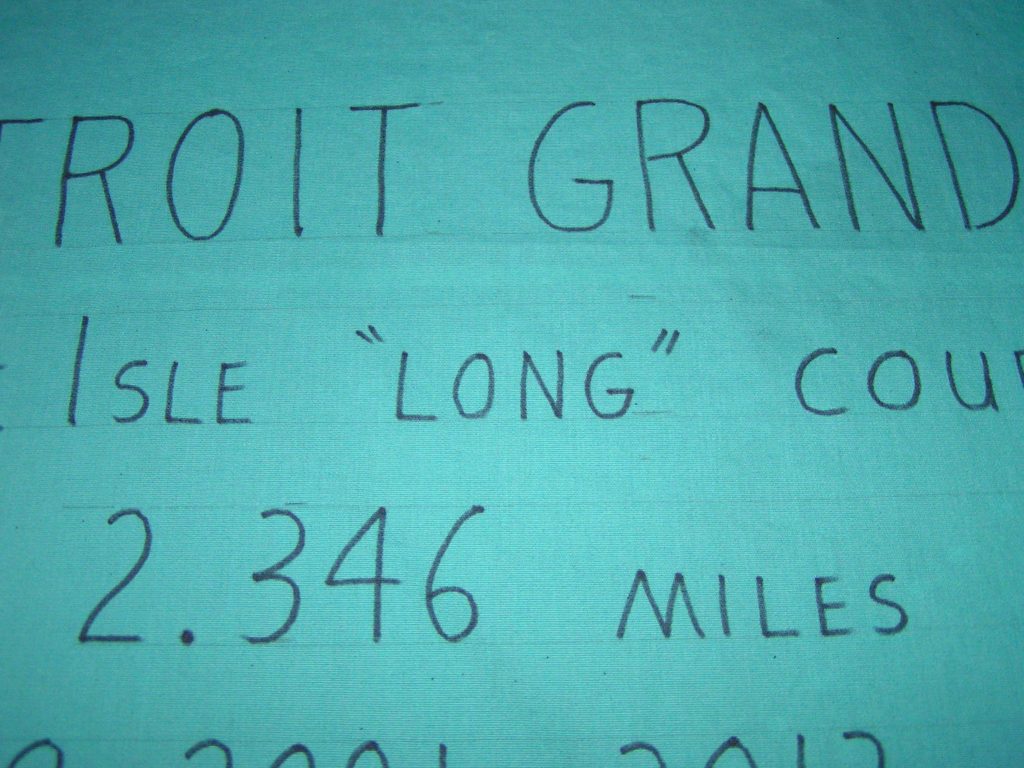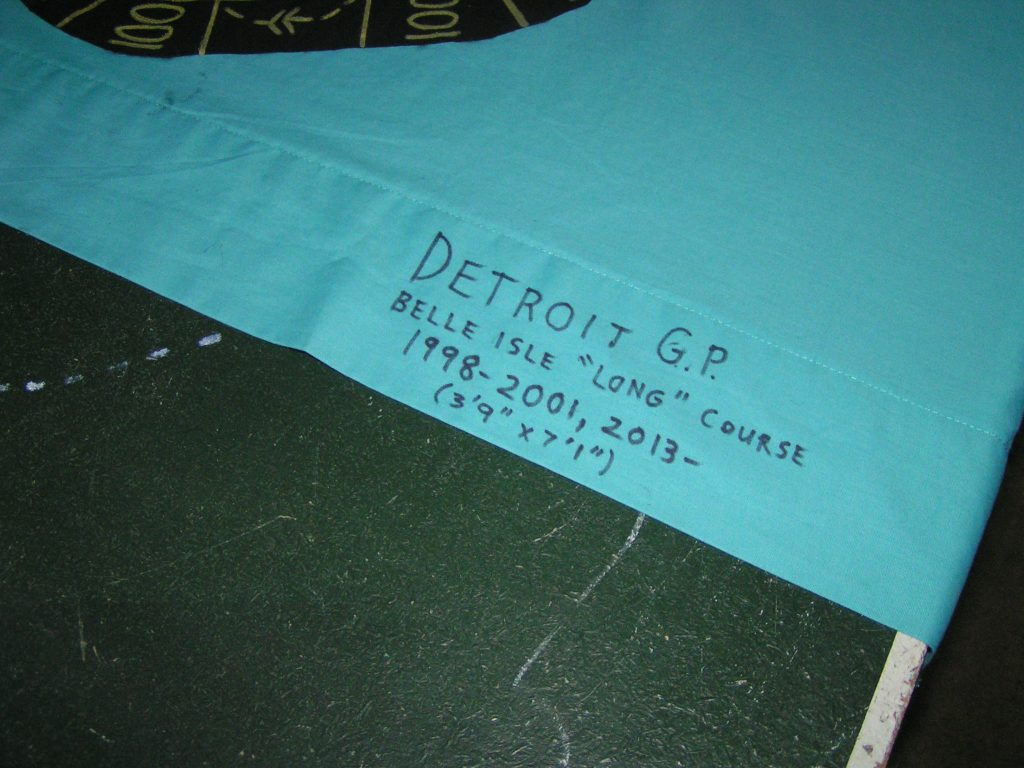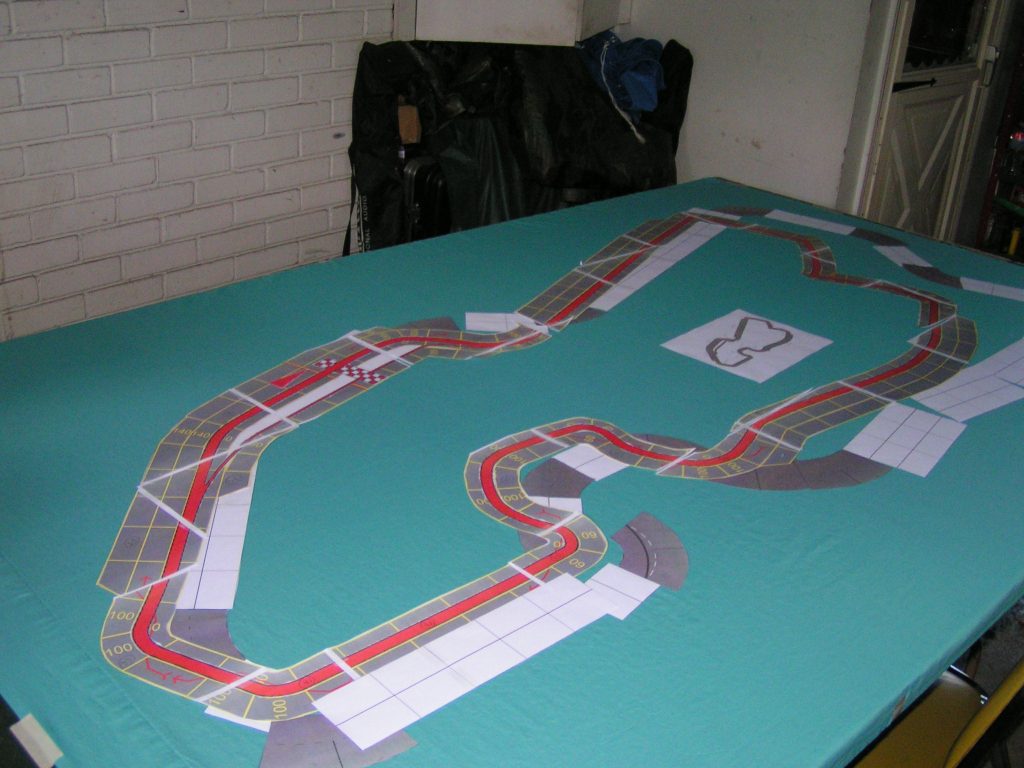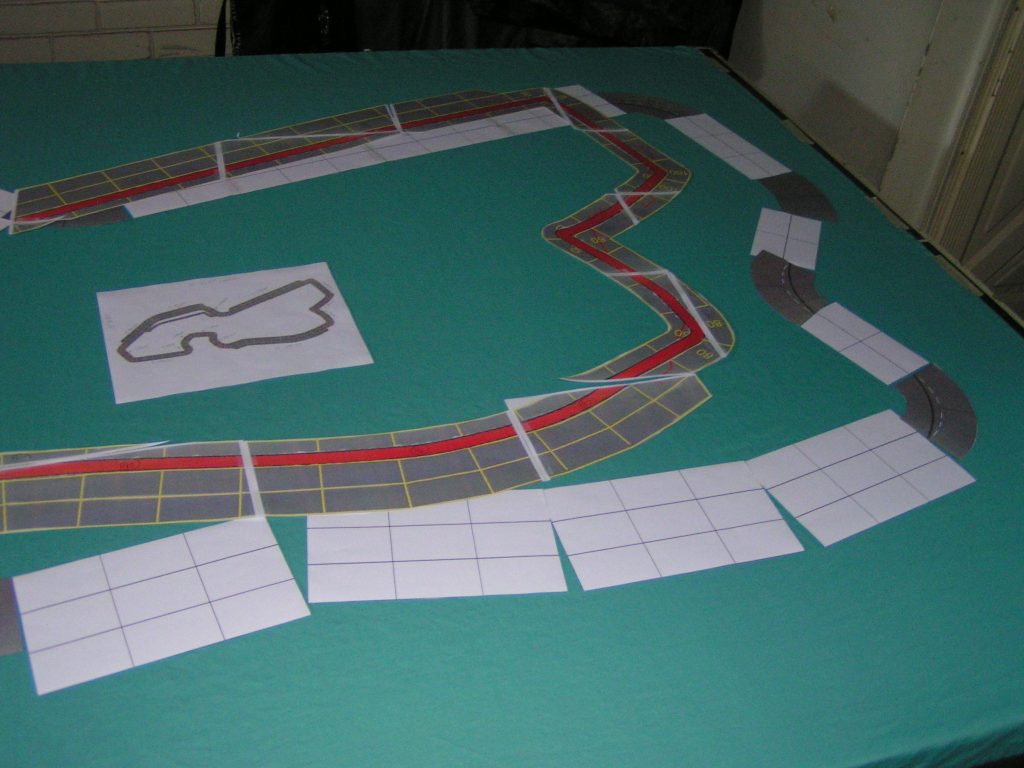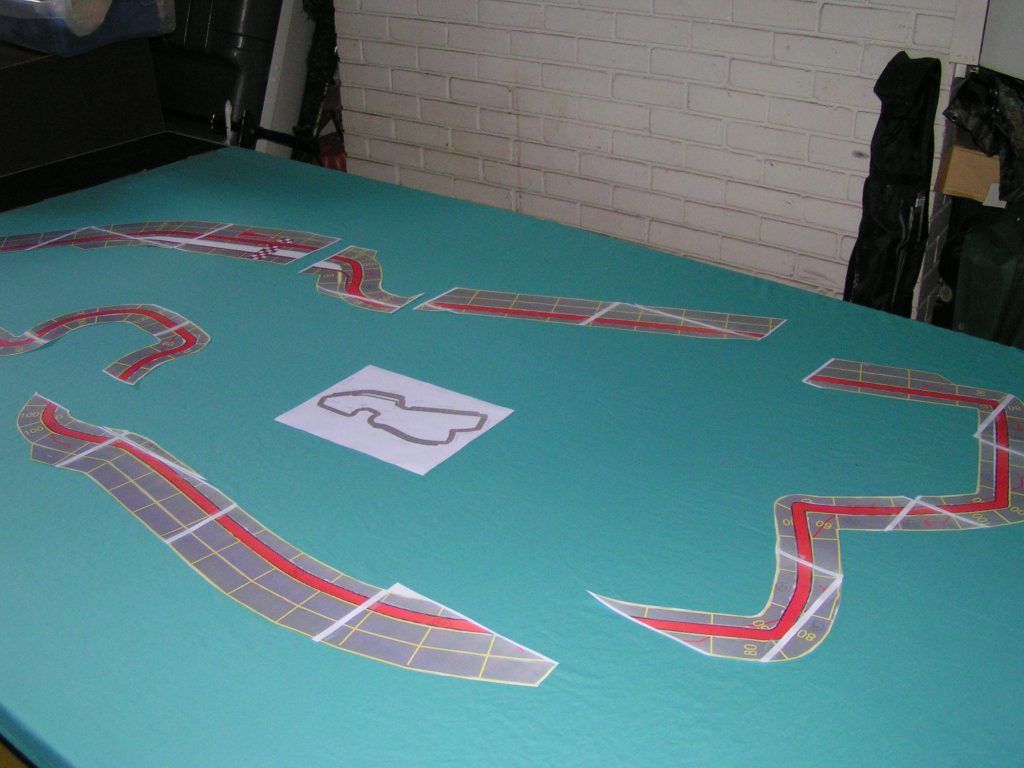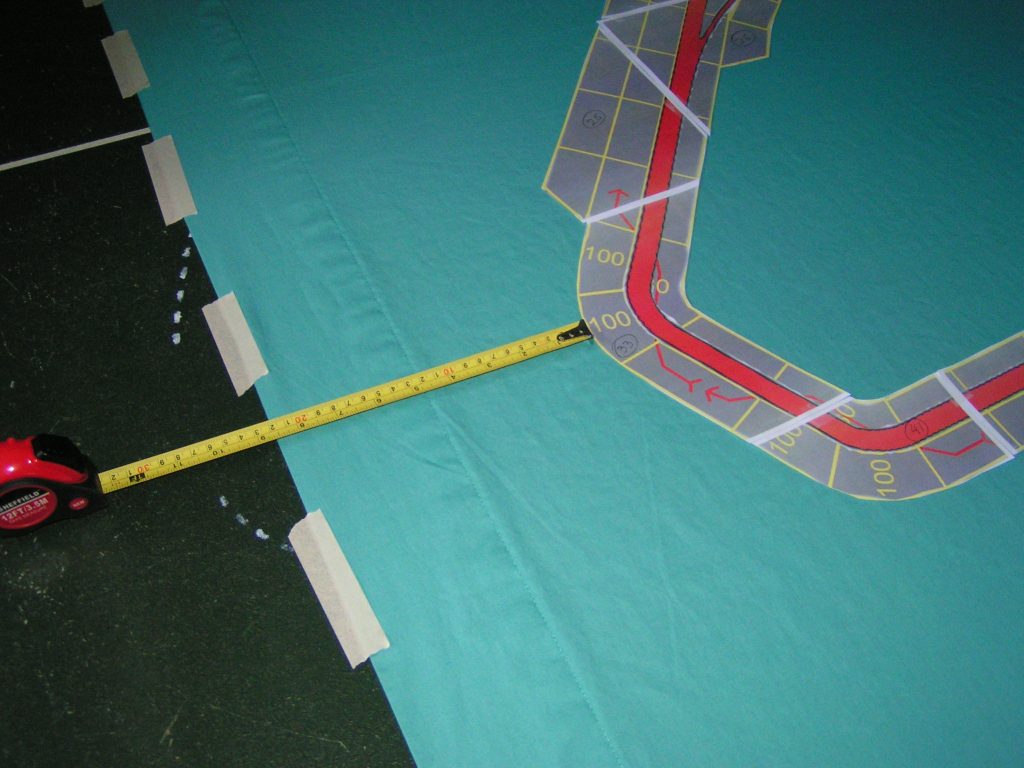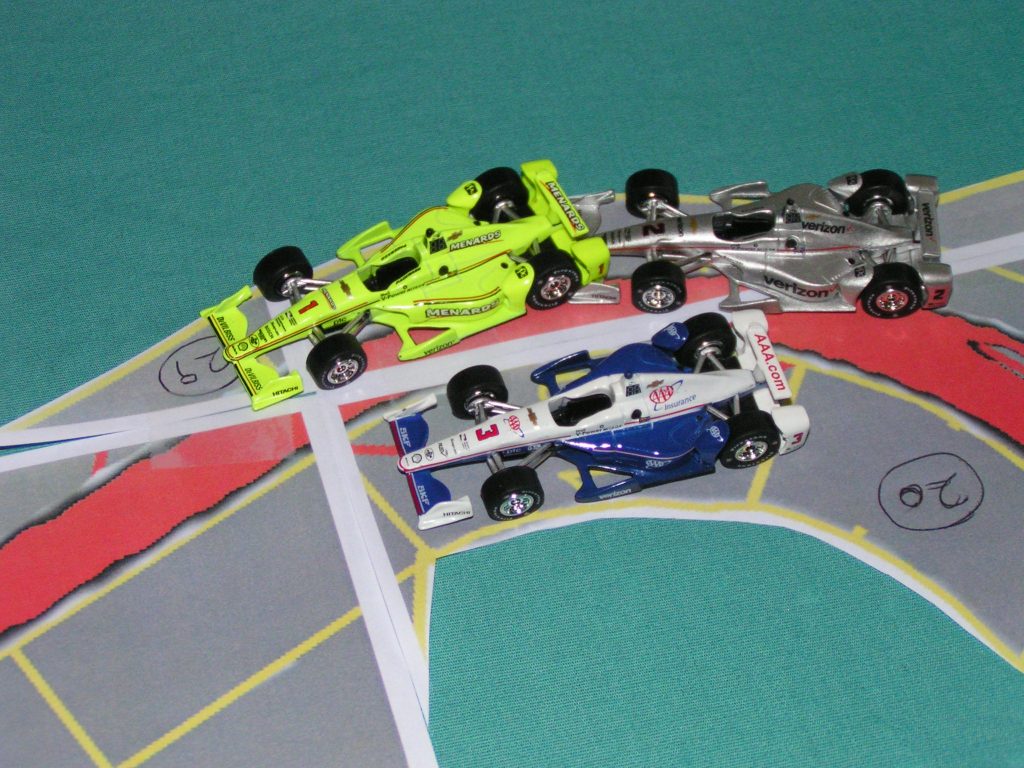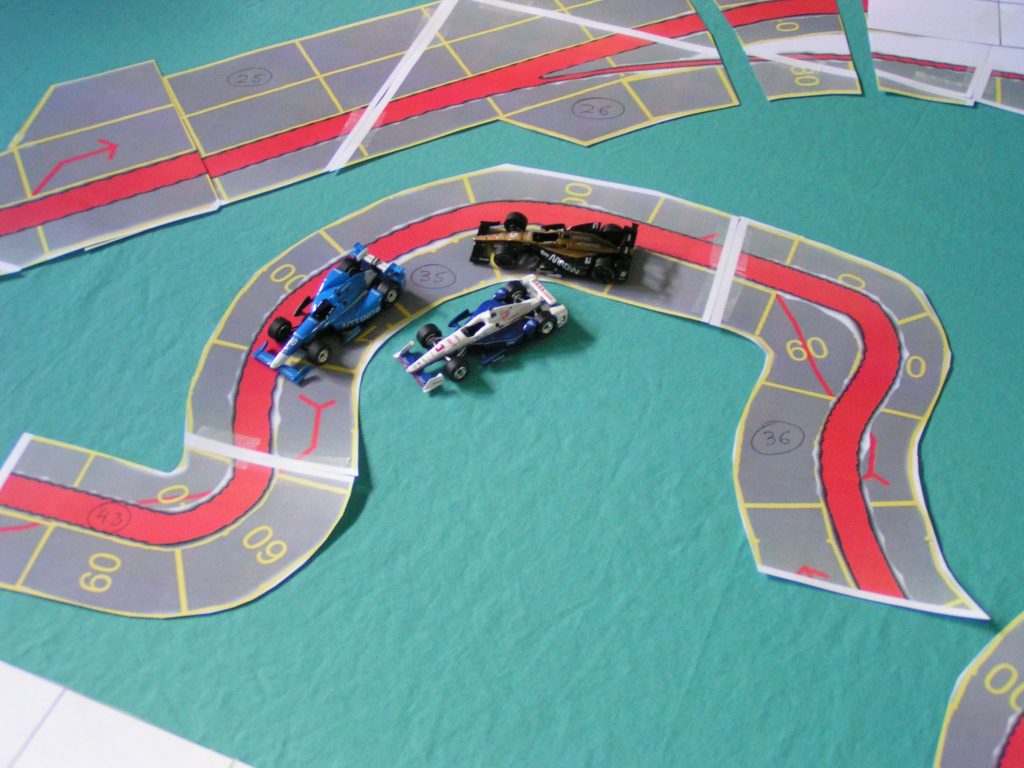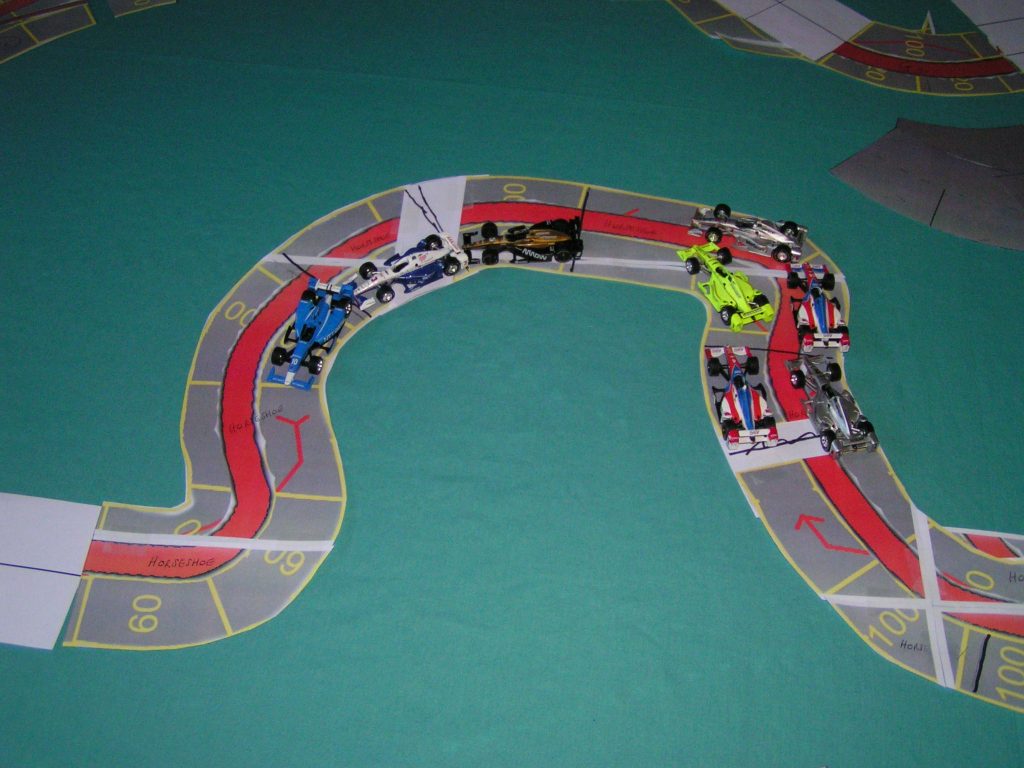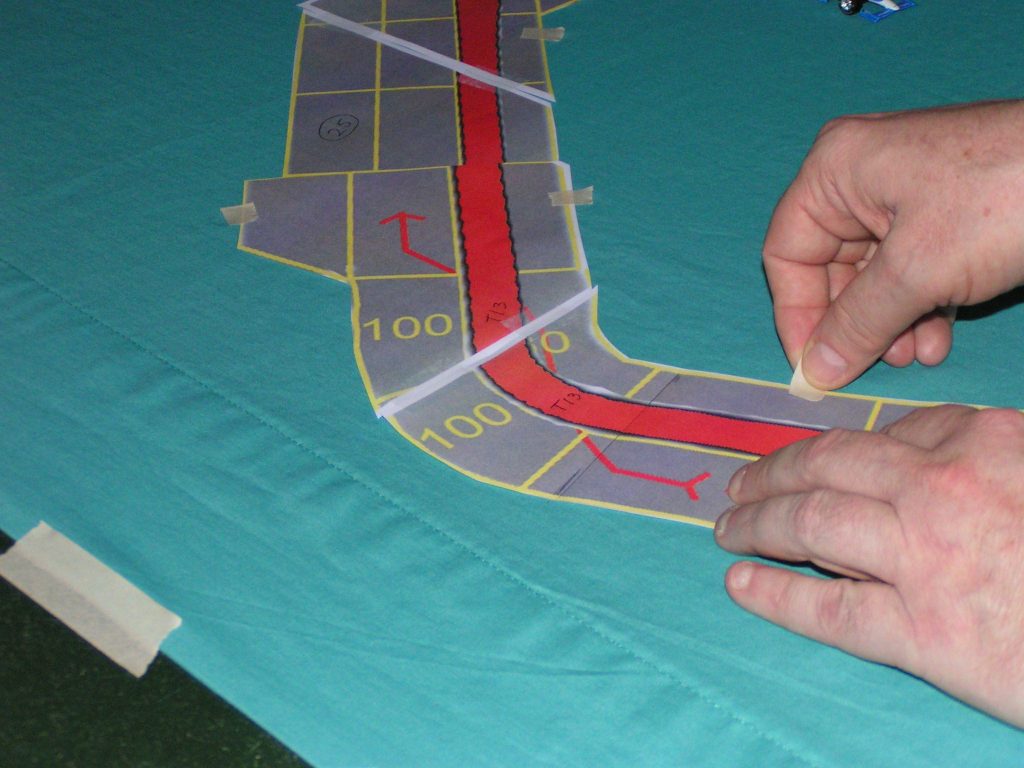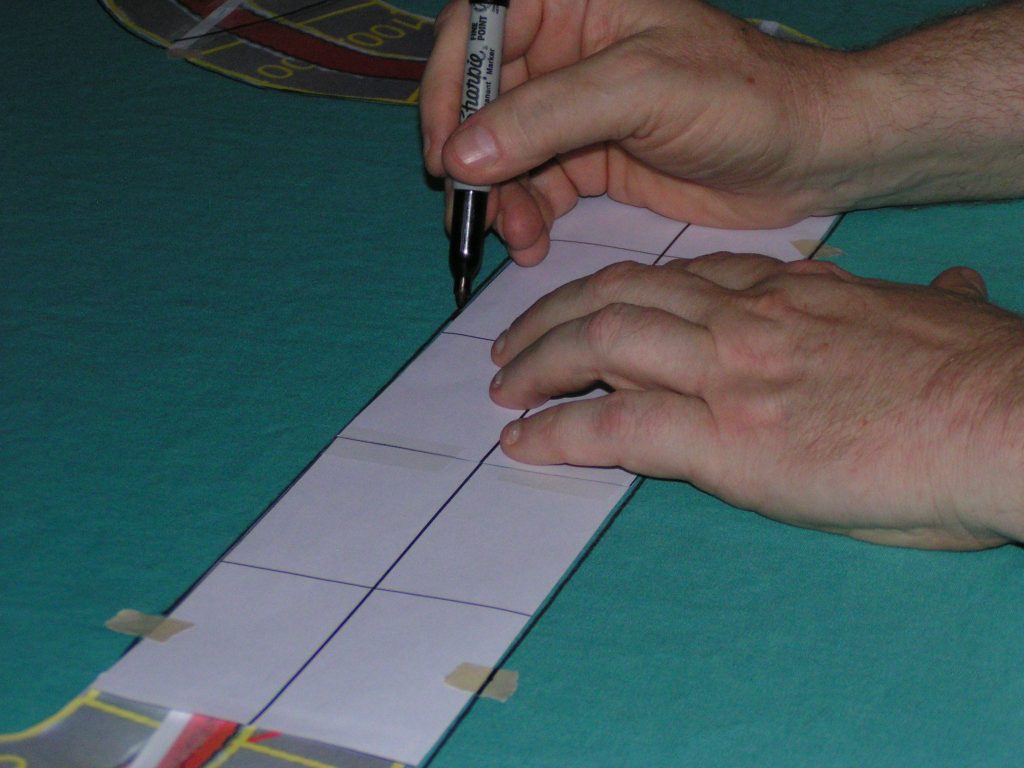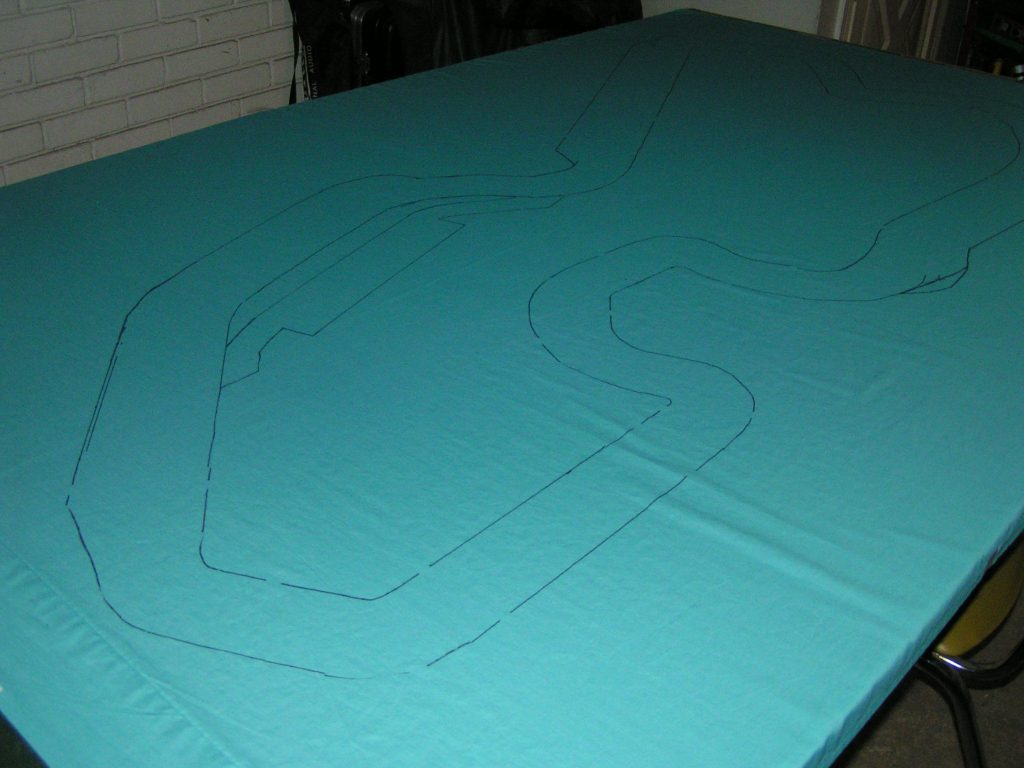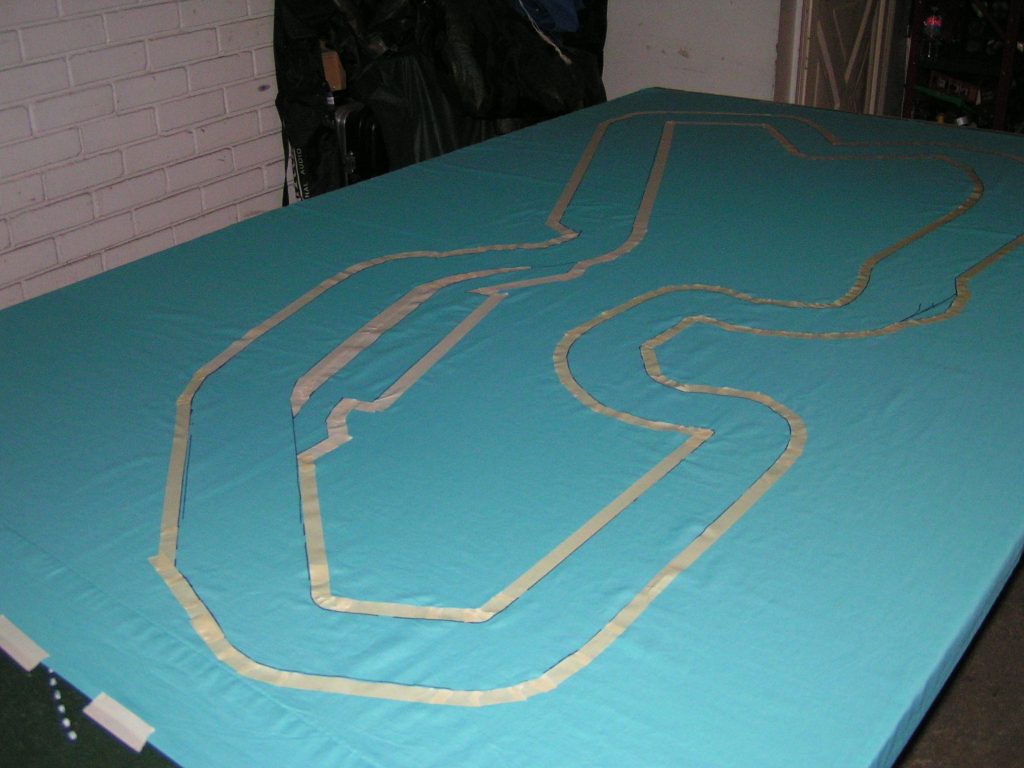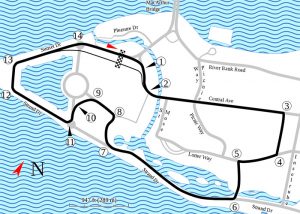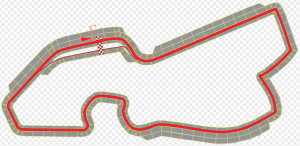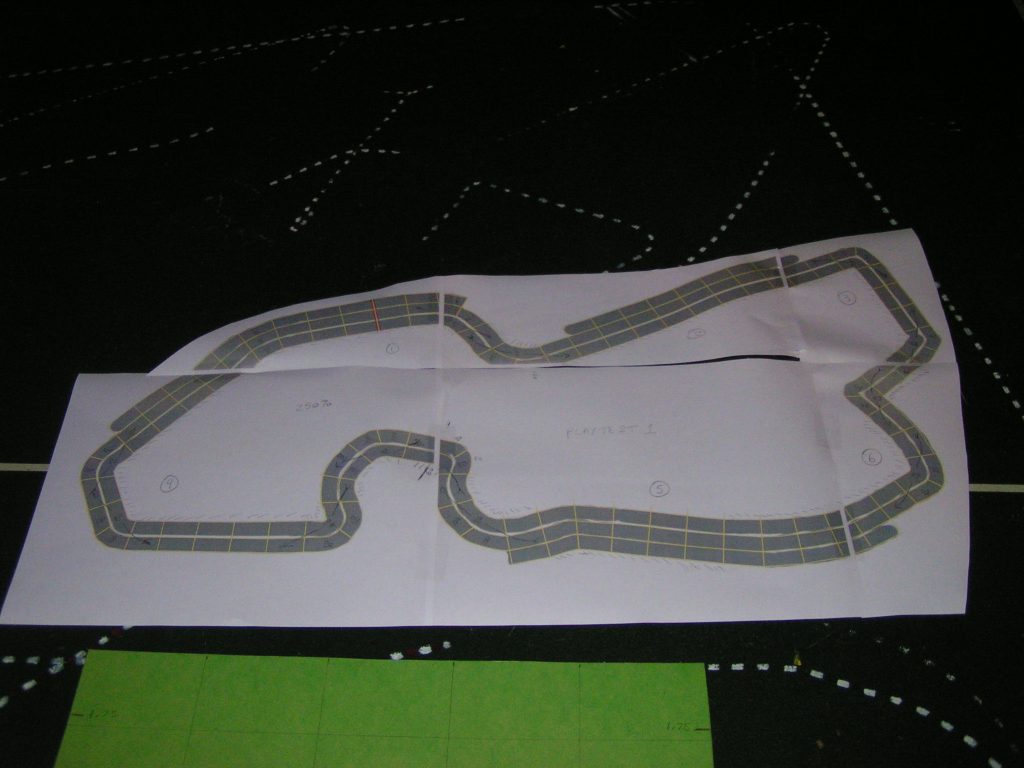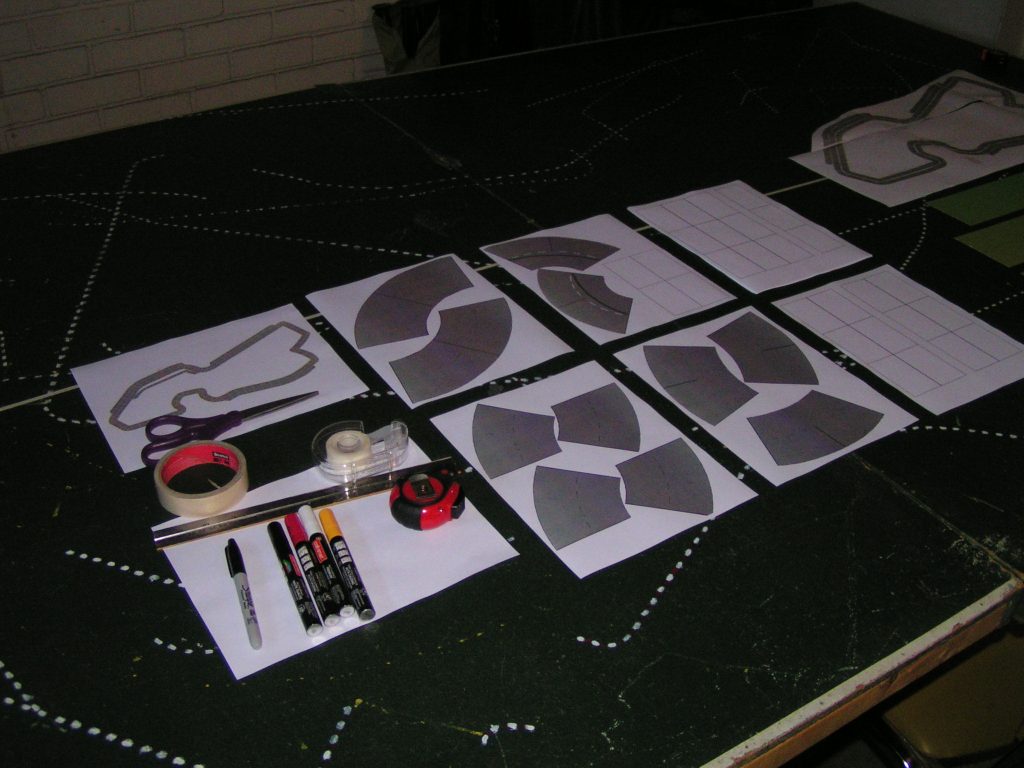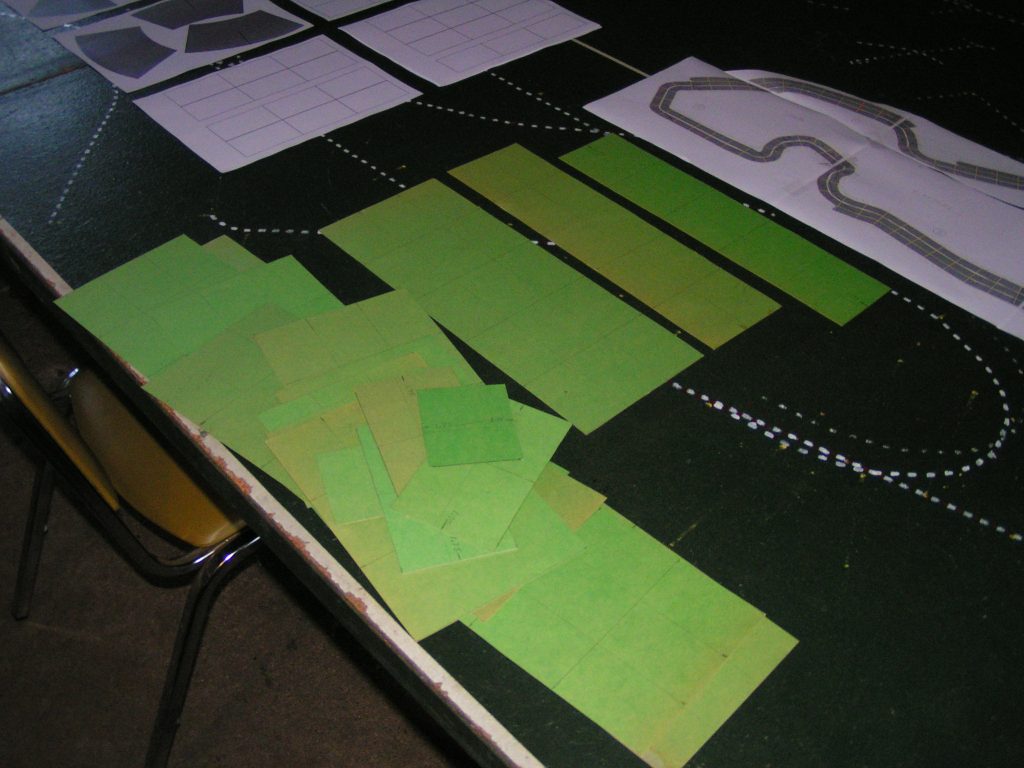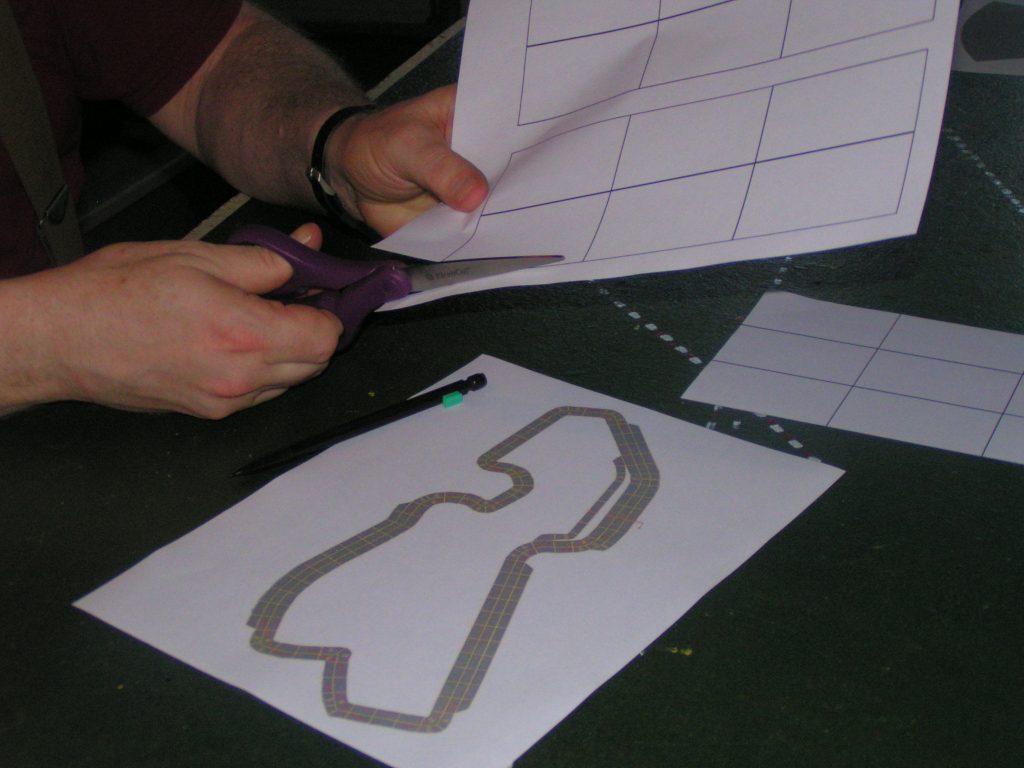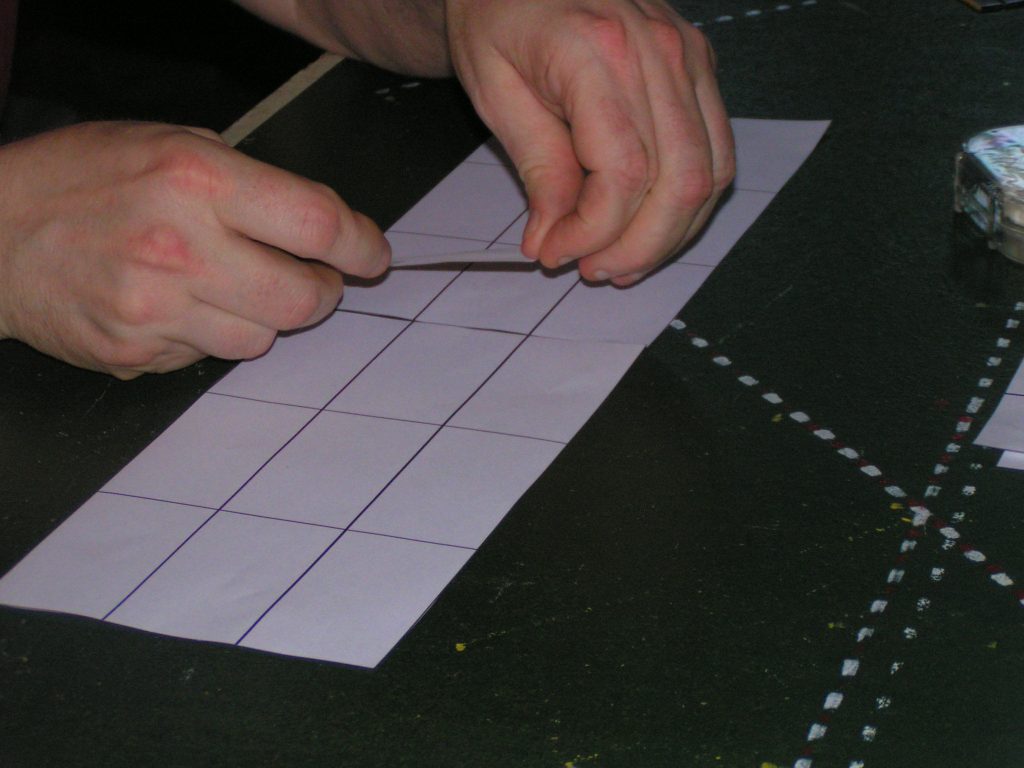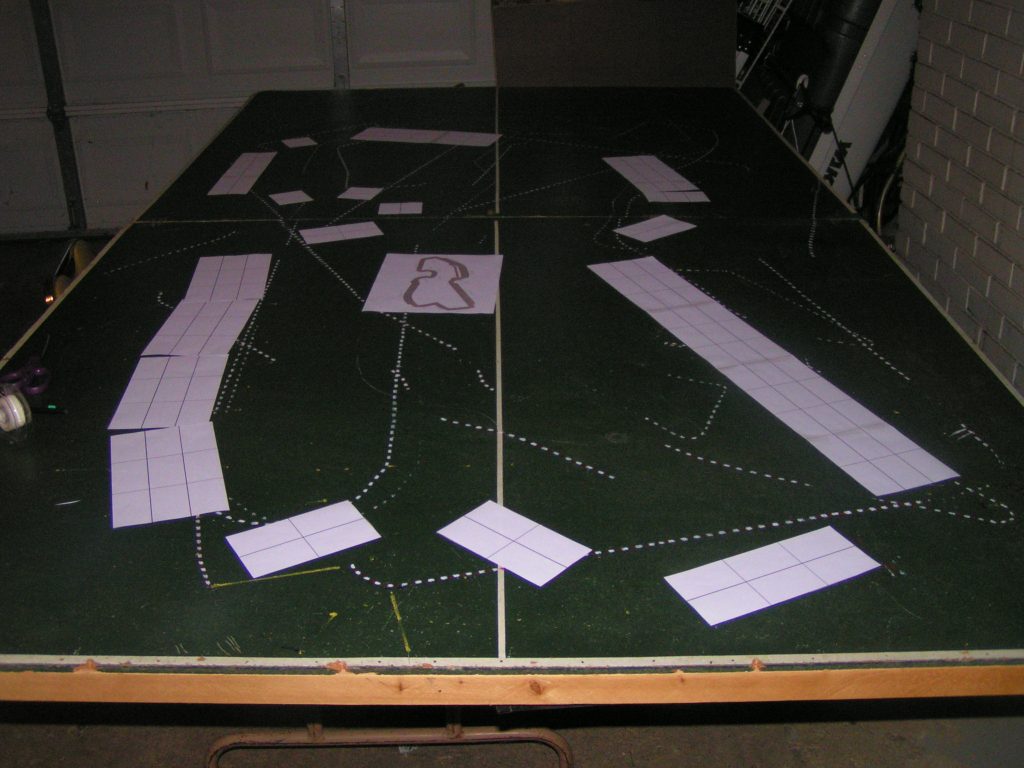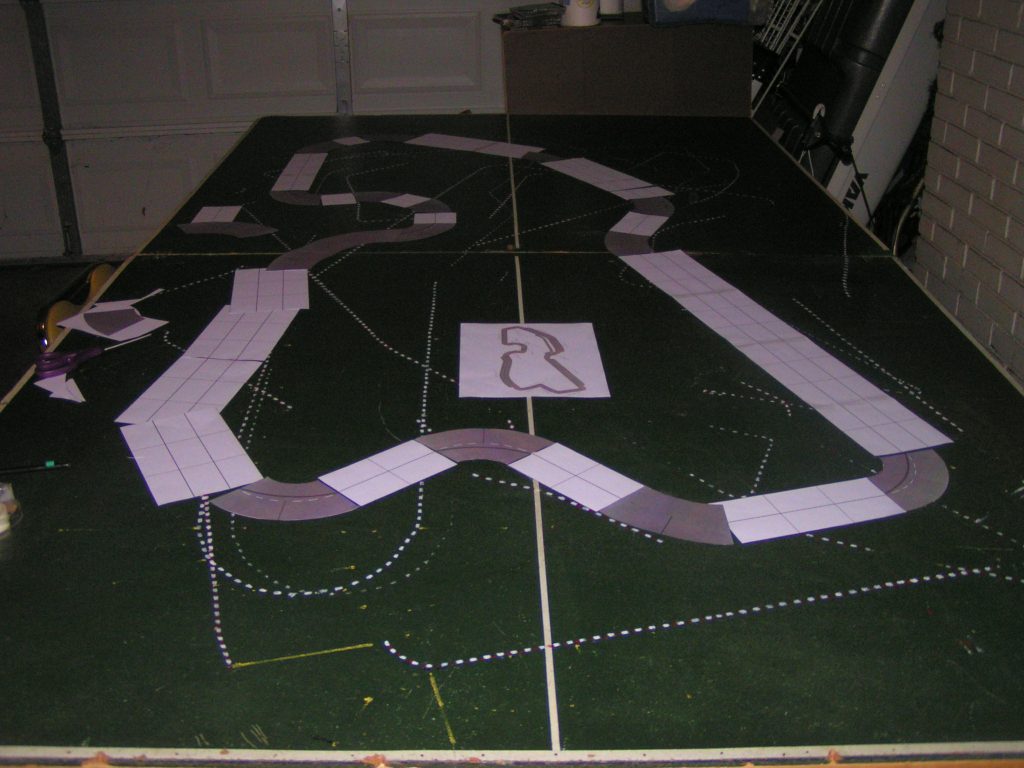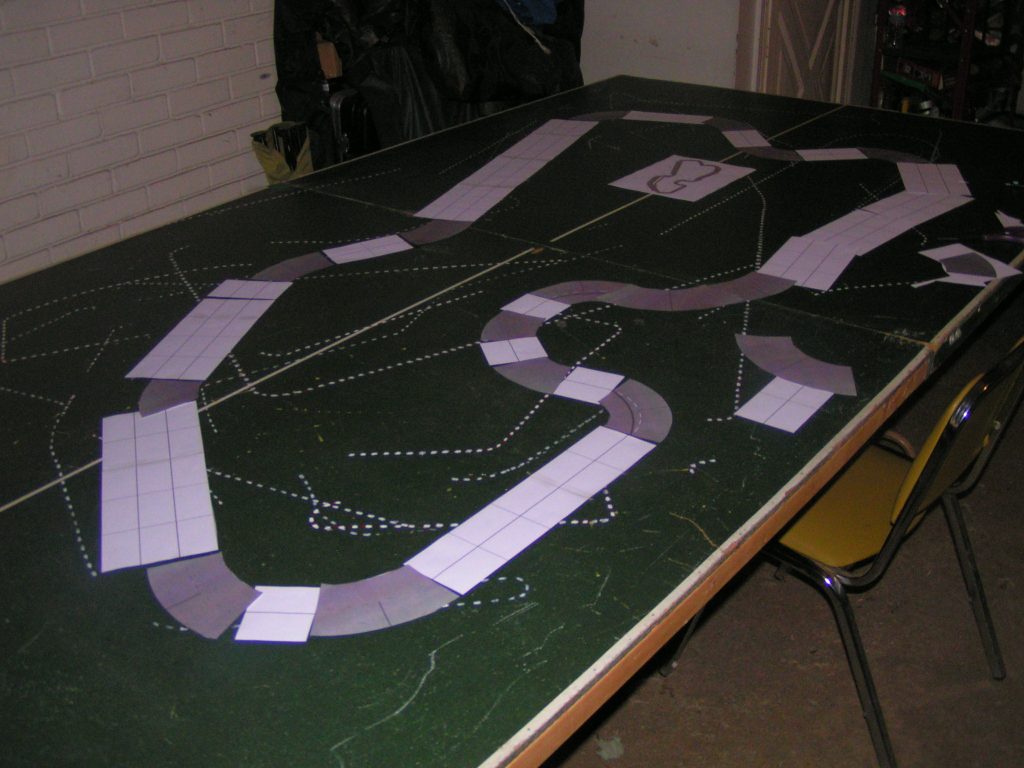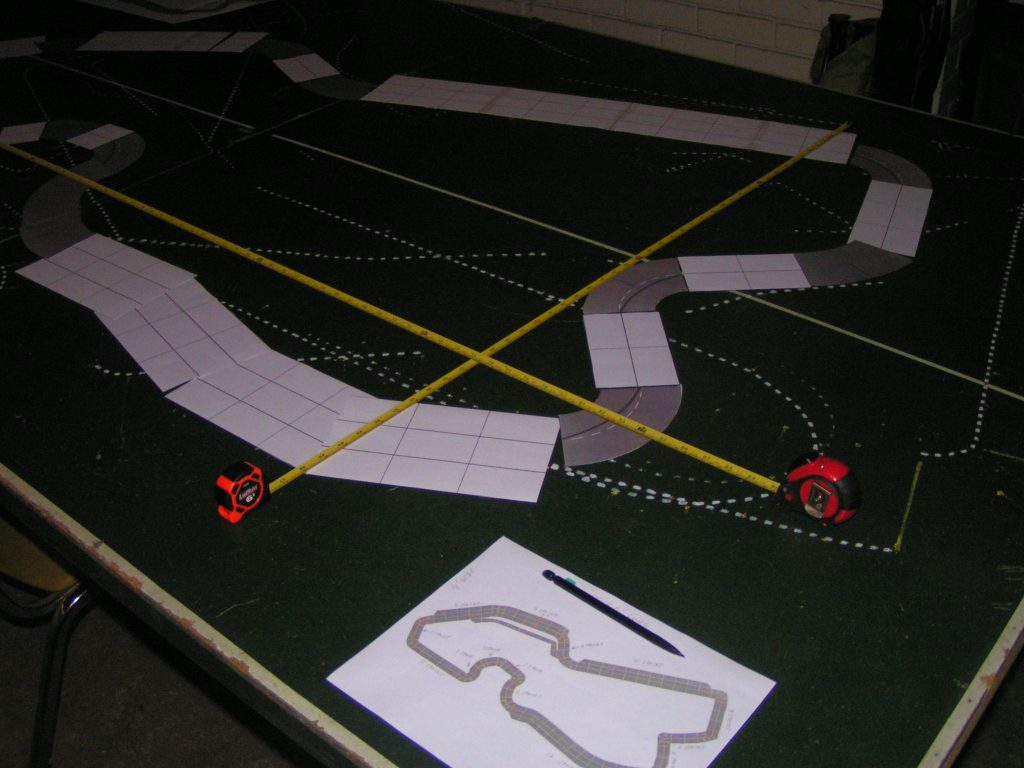Only seven drivers competed at the Canadian Grand Prix on February 16, 2018, using the Championship Formula Racing rules. Gary Sturgeon won his 2nd consecutive race after starting 4th on the grid. Jack Beckman (2nd) and Richard White (3rd) were the other podium finishers. This race was held at the Guild of Blades game store in Clawson, Michigan. It had originally been scheduled for February 9, but was postponed a week due to an unusually heavy snowfall on the 9th. The race was on the Gilles Villeneuve circuit from Montreal, Canada. The CFR-Detroit race series is now averaging 9.8 drivers per race (through six races).
We raced on the older track configuration, using the old Avalon Hill track as our basis for the track.
Once again, the bidding for pole position featured rather high bids. (Each wear bid counts as 1.0; each skill bid counts as 0.5.) Mike Cook won his 4th pole position in six races with a bid of 8.0 (2 wear + 12 skill). Starting 2nd was Jack Beckman with a bid of 7.0 (2 wear + 10 skill). Richard White started 3rd, also with a bid of 7.0 (5 wear + 4 skill), but Jack got 2nd as he rolled better on percentage dice (39 to 03) to grab 2nd from Richard. Gary Sturgeon started 4th with a bid of 6.0 (0 wear + 12 skill). Garry Kaluzny started 6th with a bid of 5.5 (3 wear + 5 skill). Gary Kempen was the 6th starter with his bid of 4.5 (0 wear + 9 skill). Greg Lim was content to start last, in 7th, as he bid nothing.
The starting grid and their car specs:
# Driver (Car) Start/Accel/Decel/Top/Wear/Skill/Tires 11 Mike Cook (Camel Lotus) 60 40 40 140 5x 4x soft 2 Jack Beckman (Ferrari) 100 40 20 140 5x 4x soft 1 Richard White (Brabham) 60 60 40 140 5x 3x soft 12 Gary Sturgeon (John Player Lotus) 100 40 40 140 5x 3x hard 9 Garry Kaluzny (McLaren) 60 40 40 160 5x 3x soft 4 Gary Kempen (Ferrari) 60 40 40 140 5x 4x soft 7 Greg Lim (Motorola) 60 60 40 140 4x 4x soft
Start = Start Speed (in miles/hour); Accel = Acceleration (in mph); Decel = Deceleration (in mph); Top = Top Speed (in mph); Wear = # of Wear markers per lap raced; Skill = # of Skill markers per lap raced; Tires = hard or soft tires to begin the race. (Since the race was 3 laps, a car with 5x of Wear would receive 15 Wear markers to start the race (as an example).)
Most of our racers were distressed upon hearing that the “real” Formula One did away with their “Grid Girls”; however, our CFR-Detroit race series decided to hire the now unemployed Grid Girls for our racing series.
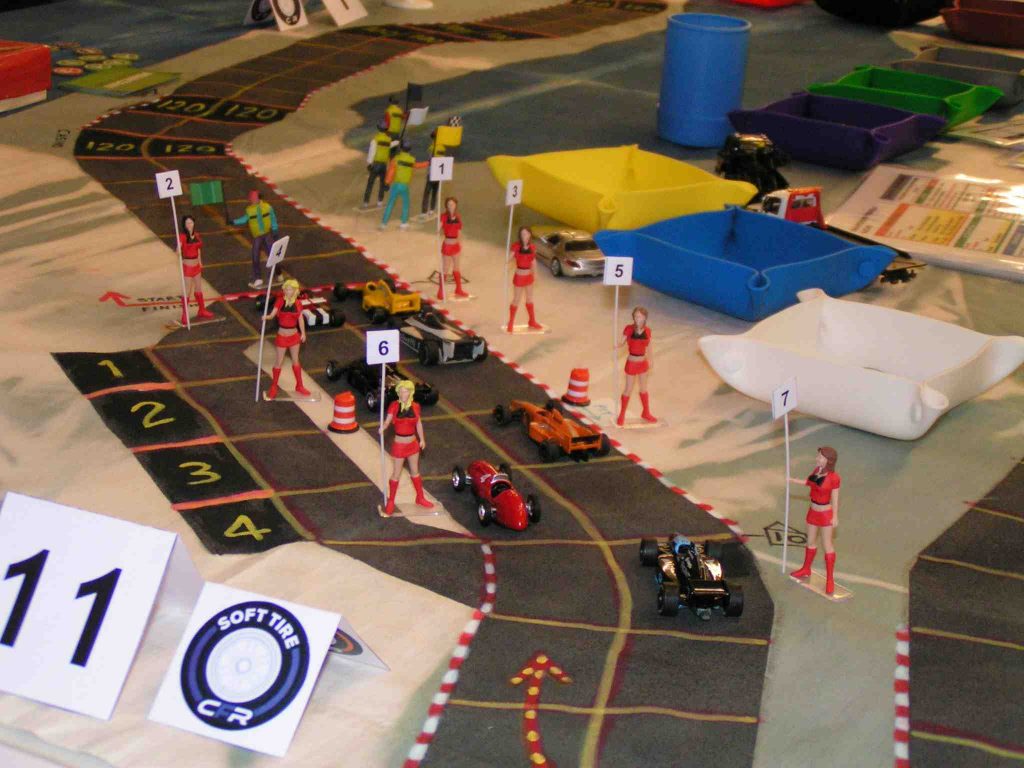
The starting grid at Canada with the Grid Girls helping to line up the cars. (Yes, we know the Grid Girls are in 1:32 scale while the cars are in 1:64 scale, but it was the best we could do. Nobody seems to make Grid Girls in 1:64 scale.)
When the green flag dropped to start the race, Jack Beckman burned a wear (since he was on soft tires) to increase his start speed from 100 to 120 mph, so he roared off ahead of the pole-sitter, Mike Cook, even though Cook had also boosted his start speed. Sturgeon started at his 100 mph start speed, and he was able to pass White for 3rd as White just started at his base 60 mph start speed. Kaluzny, Kempen, and Lim slotted into positions 5, 6, and 7, in the same order as they had lined up on the grid. Everyone was happy that it was a clean start, with nobody getting balked.

The cars are away at the start of the Canadian Grand Prix. The running order: Beckman (Ferrari); Cook (Camel Lotus); Sturgeon (John Player Lotus); White (Brabham); Kaluzny (McLaren); Kempen (Ferrari); and Lim (Motorola).
The field pretty much stayed in the same order, with the pack finally bunching up at the Epingle de l’Isle. It was there that Kempen made a move to pass Kaluzny and pull to the inside of White, thereby taking 4th place.
Kempen found that he couldn’t hold onto 4th, however, as coming out of the Epingle de l’Isle he was re-passed by both White and Kaluzny. White was even able to pass Sturgeon for 3rd place.
The pack mostly stayed bunched together the rest of the 1st lap, although Beckman and Cook did gain a few spaces over the rest of the pack. As the pack roared through the hairpin turn at Epingle du Casino, Beckman, Cook, White, Kaluzny, and Kempen all pitted to exchange their worn-out soft tires for fresh hard tires. Sturgeon stayed on the track with his hard tires, and Lim also stayed on the track, although Lim was riding on soft tires.
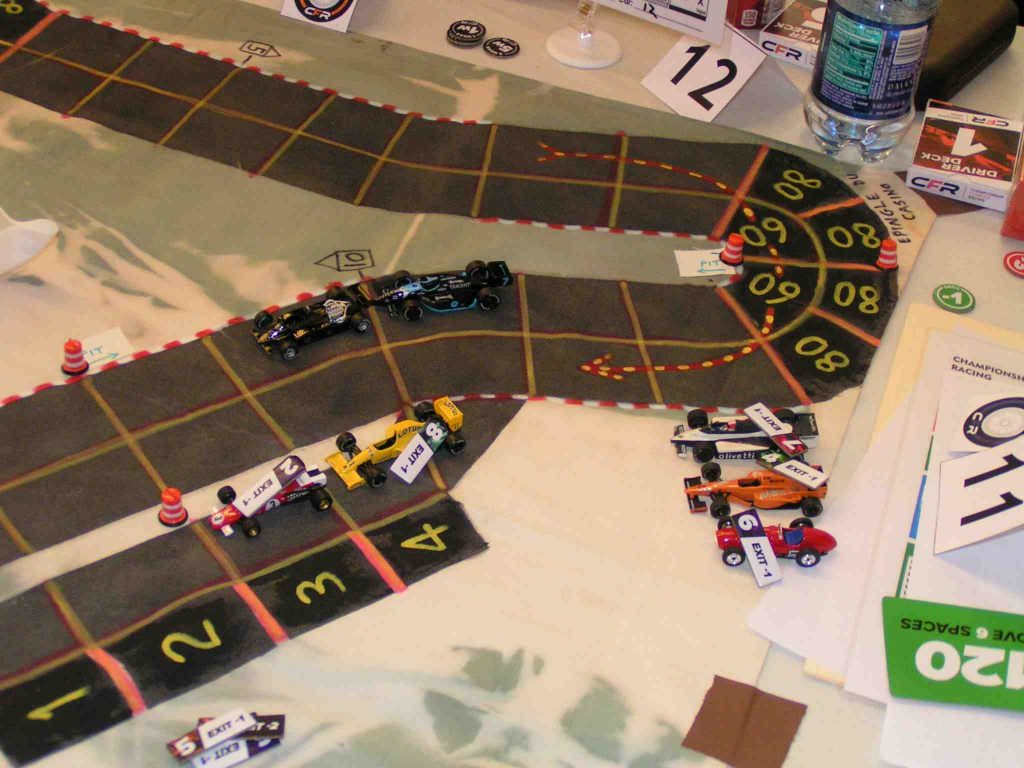
The first pit stops — Beckman, Cook, White, Kaluzny and Kempen are in the pits; Sturgeon and Lim stay on the track.
After the 1st round of pit stops, and at the end of Lap 1, the official running order was Sturgeon (+3) and Lim (+6), then 6 spaces to Beckman (-1) and Cook (-3), then 3 spaces to Kaluzny (0), then came White (-3) and Kempen (-1). The numbers in parentheses tell how many spaces a driver either gained (+) or lost (-) from their starting position.
During the next half lap, Kaluzny failed an acceleration dice roll, and Cook failed a deceleration dice roll (Cook failing his roll as he was heading into the slow Epingle de l’Isle). Each driver used only a single -1 skill chit for their roll. In Kaluzny’s case, he rolled an 11, meaning he would have successfully made the roll had he used two -1 skill chits. Extra skill wouldn’t have helped Cook, though, as he rolled a 12. With Kaluzny’s car ailing on acceleration coming out of the Epingle de l’Isle, Kempen successfully made a forced pass of Kaluzny and White, putting Kempen up into 5th place.
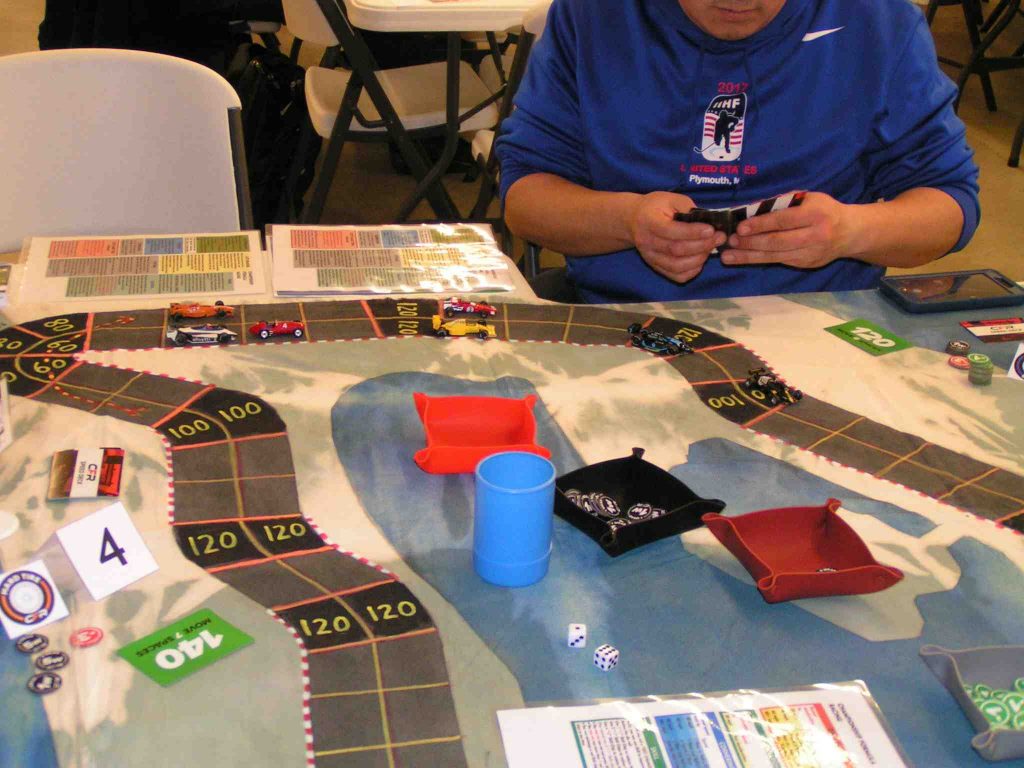
Kempen takes 5th after a forced pass of White and Kaluzny. Greg Lim (blue sweatshirt, black and blue car in 2nd place on the track) looks over his cards to plot his car’s speed for the upcoming game turn.
Near the end of the 2nd lap, Sturgeon had built a lead of 6 spaces over Lim, and then Sturgeon pulled into pit lane to change from his worn-out hard tires onto soft tires for the final lap.
Then Lim pulled into the pits a turn later, and as expected, everyone else stayed on the track. When Sturgeon got back on the track after his pit stop, he had fallen to 4th place, 5 spaces behind the new leader, Beckman. However, Sturgeon now had a full complement of 15 wear, while Beckman had used up most of his wear on the 2nd lap.
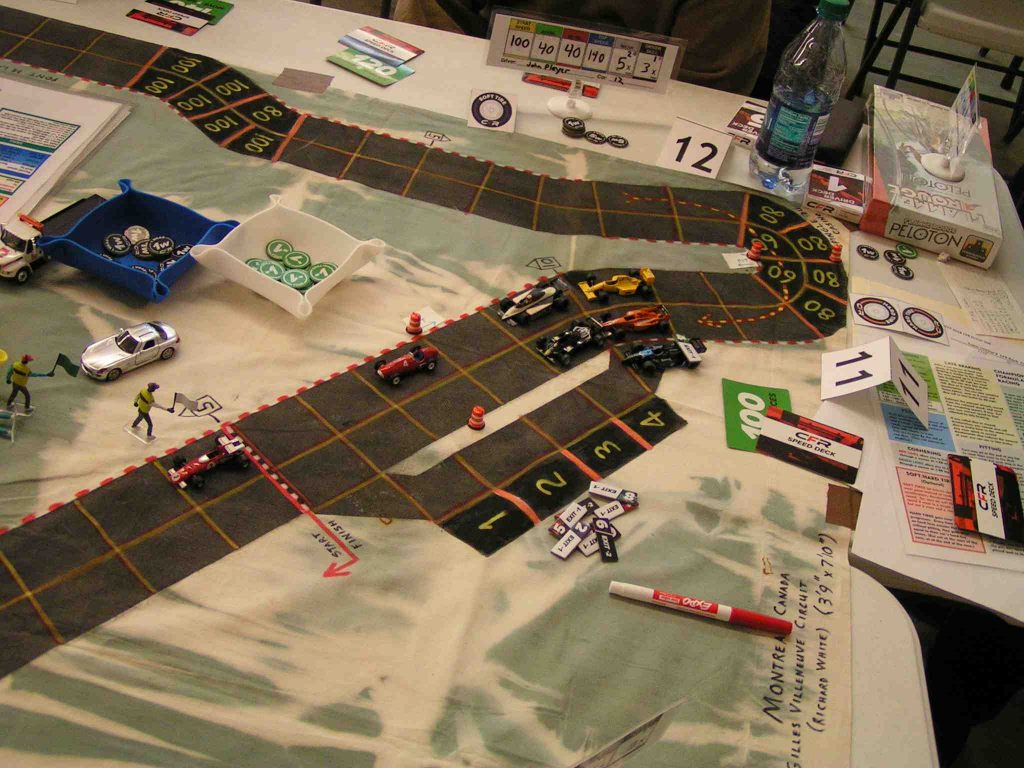
Taking the white flag, Beckman leads after two laps. Former leader Sturgeon is back on the track in 4th place, next to White’s Brabham.
At the end of the 2nd lap, the two Ferraris of Beckman (+1) and Kempen (+4) were in the lead. Then came Sturgeon (+1), White (-1), Cook (-4), Kaluzny (-1), and Lim (0).
Sturgeon finally made his move for the lead the final time through the Epingle de l’Isle corner. He pulled alongside Beckman’s #3 Ferrari, then Sturgeon’s John Player Lotus pulled in front as they exited that corner.
Kempen spun just before the “S” curves, dropping him from 3rd to 6th place. It was good for him that he used his -3 skill chit, because he rolled a 12 on the Chance Table. If he had only used two -1 skill markers, that would have been a crash. In the meantime, Beckman was trying to hang with Sturgeon. Surprisingly, Kaluzny and Cook were staying near the leaders, even though Kaluzny’s car only had a 20 mph acceleration and Cook’s car only had a 20 mph deceleration.
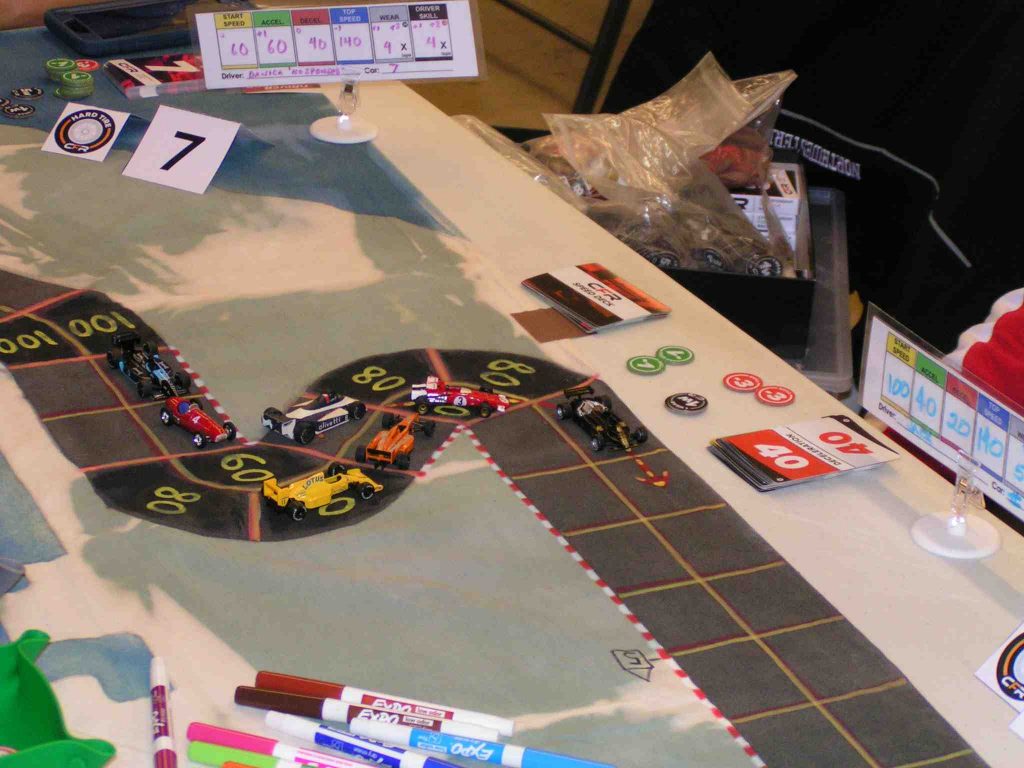
Through the “S” curves the final time; Sturgeon still leads from Beckman while Kempen has recovered from his spin but is now in 6th place.
Down through the chicane for the final time, Sturgeon maintained his grip on 1st place. He then was able to enter the final Epingle du Casino corner before Beckman, thereby assuring Sturgeon of the victory. Through the chicane that last time, Kempen managed to successfully pass an unmodified Chance roll by rolling a 4. He needed to roll a 6 or less to make it through with spinning or crashing.
Although Sturgeon was about to take the checkered flag for his second straight win, there was still much excitement to occur in that final corner. Lim tried to maintain a high rate of speed around the outside of the corner in an attempt to pass Kaluzny, but Lim spun.
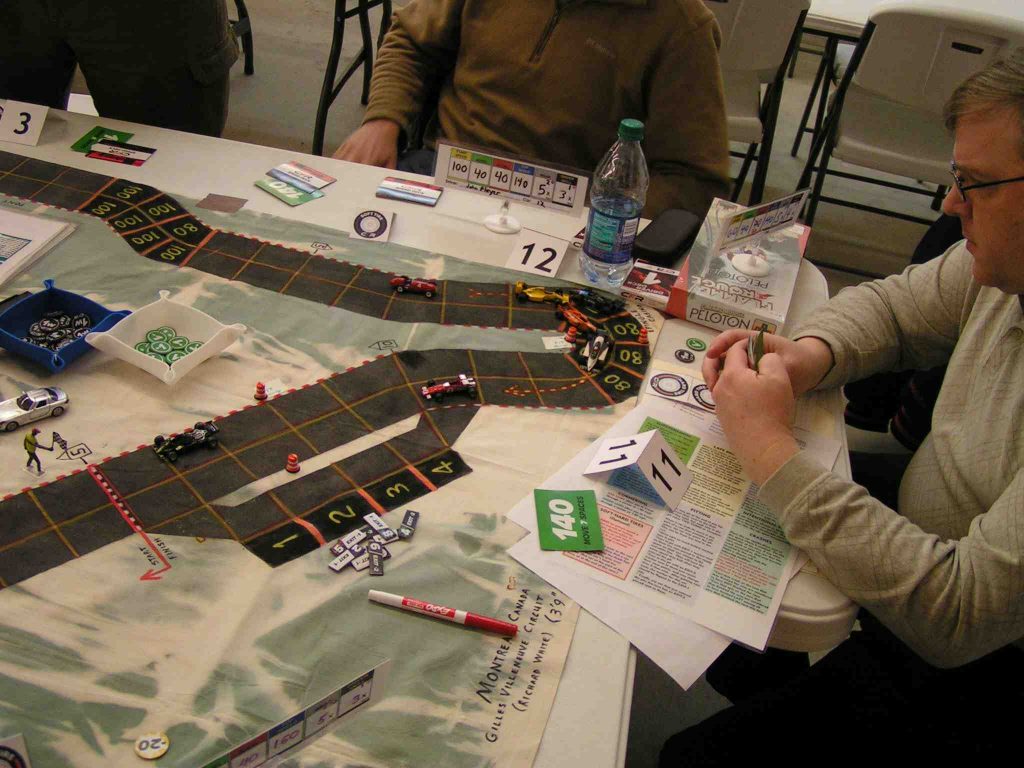
Sturgeon about to take the checkered flag, while Lim spins on the outside of the final corner. Mike Cook looks on with concern, trying to figure how he can make it through the final corner with damaged brakes.
As Lim recovered from his spin, he moved out of the corner but he hogged the cornering line, just to make it tough on the two following cars to make it through that corner. Indeed, Cook had to roll on the Deceleration Table once again, using his last -1 skill token. Unfortunately for him, he rolled an 11, which was the second time he had failed a deceleration dice roll, thereby putting his car out of the race with failed brakes. Then Kempen’s Ferrari tested the fates one more time, but this time failed the Chance dice roll by crashing out of the race. Cook was classified 6th, and Kempen 7th, but Cook failed to score the single point for 6th because cars must finish a race in order to gain any points.
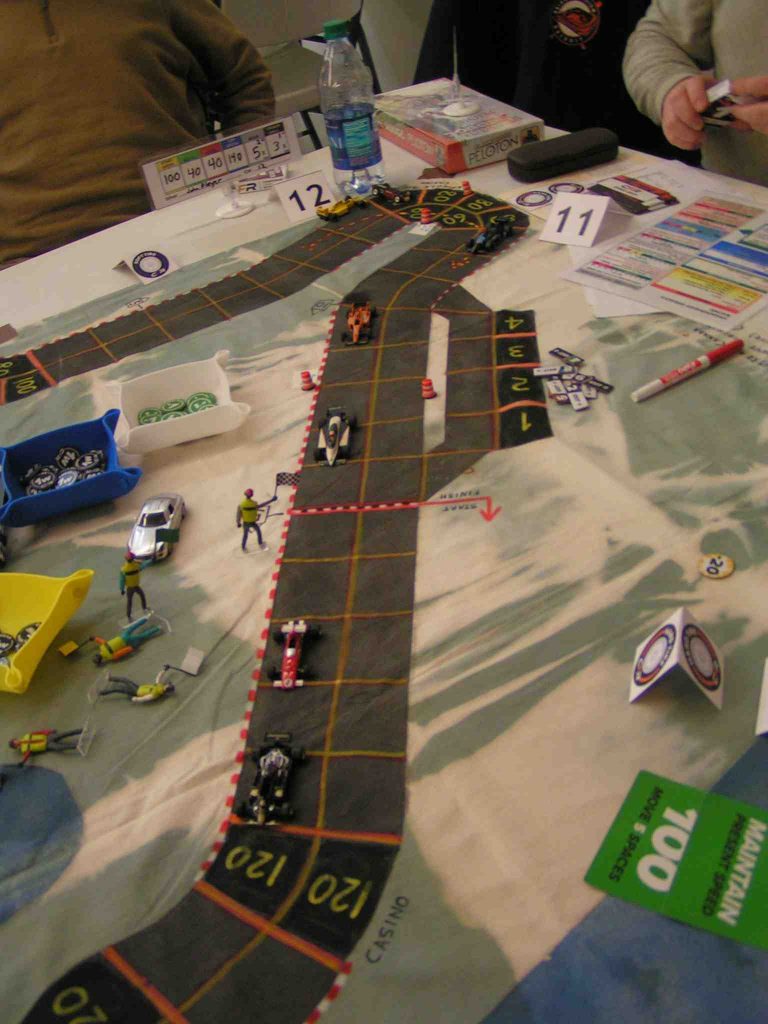
Sturgeon wins from Beckman, meanwhile, Cook (yellow car) lost his brakes, and Kempen (upside-down Ferrari) crashed in the final corner.
At the checkered flag, it was Sturgeon (+3), then Beckman (0), White (0), Kaluzny (+1), and Lim (+2). Out of the points with DNFs were Cook (-5) and Kempen (-1).
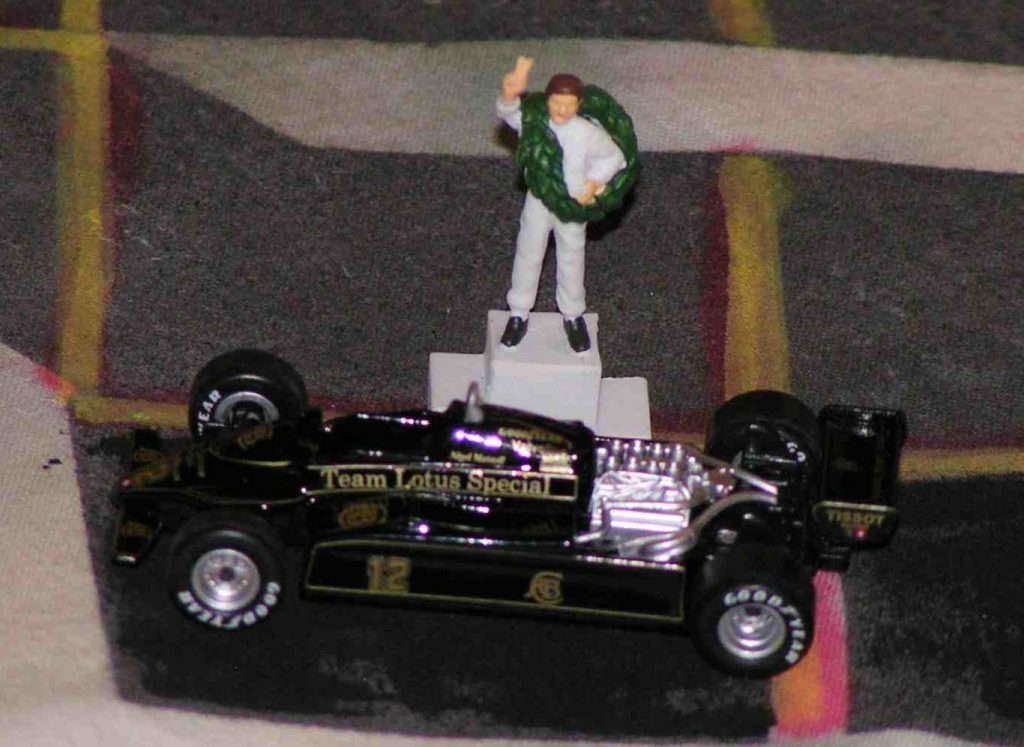
Driver Gary Sturgeon (well, at least a 1:32 scale representation of Sturgeon) stands atop the Victory Podium.
The points awarded at the Canadian Grand Prix: Sturgeon 10; Beckman 6; White 4; Kaluzny 3; and Lim 2.
The updated points standings after six (of eight) races:
Place Driver (Car) Points 1 Gary Sturgeon (John Player Lotus) 35 2 Mike Cook (Camel Lotus) 29 3T Jack Beckman (Ferrari) 24 3T Garry Kaluzny (McLaren) 24 5 Richard White (Brabham) 18 6T Jim Landis (Benetton) 6 6T Greg Lim (Motorola) 6 8T Brian Robinson (Walker Racing) 4 8T Gary Kempen (Ferrari) 4 10 Jim Robinson (Williams) 3 11 Mike Manderachia (Ligier) 2 12T Russ Herschler (Minardi) 0 12T Chad Marlett (Red Bull) 0 12T Tim Gould (McLaren) 0
The 7th race of the CFR-Detroit racing season is on Friday, March 9, 2018, at Imperium Games at 28990 S. Wixom Road in Wixom, Michigan. Race time is 7:00 pm, although we ask racers to be there by 6:30 pm in order to set up their car. We also want to have bidding for starting positions start at 6:55 pm.

